Trending Post : 52 Best Things to do in Ireland


Great Travel Writing Examples from World Renowned Travel Writers
Are you ready to be a better travel writer? One of the best ways to do this is to read great travel writing examples from great travel writers.
Writing about travel in a way that keeps your reader reading is not always easy. Knowing how to write an irresistible first paragraph to entice the reader to keep reading is key. Writing a lede paragraph that convinces the reader to finish the article, story or book is great travel writing. This article features travel writing examples from award-winning travel writers, top-selling books, New York Times travel writers, and award-winning travel blogs.
Ads are how we pay our bills and keep our blog free for you to enjoy. We also use affiliate links; if you make a purchase through them, we may receive a small commission at no cost to you.

The writers featured in this article are some of my personal favorite travel writers. I am lucky to have met most of them in person and even luckier to consider many friends. Many I have interviewed on my podcast and have learned writing tips from their years of travel writing, editing and wisdom.
11 Great Travel Writing Examples
Writing with feeling, tone, and point of view creates a compelling story. Below are examples of travel writing that include; first paragraphs, middle paragraphs, and final paragraphs for both travel articles as well as travel books.
I hope the below examples of travel writing inspire you to write more, study great travel writing and take your writing to a higher level.
Writing Example of a Travel Book Closing Paragraphs

Don George is the author of the award-winning anthology The Way of Wanderlust: The Best Travel Writing of Don George , and the best-selling travel writing guide in the world: How to Be a Travel Writer .
He is currently Editor at Large for National Geographic Travel, and has been Travel Editor at the San Francisco Examiner-Chronicle, Salon, and Lonely Planet.
I had the wonderful opportunity to see Don speak at Tbex and read from one of his books as well as interview him on the Break Into Travel Writing podcast. You can listen to the full podcast here .
Below is the closing of Don’s ebook: Wanderlust in the Time of Coronavirus: Dispatches from a Year of Traveling Close to Home
I continued hiking up to Lost Trail and then along Canopy View Trail. Around noon I serendipitously came upon a bench by the side of the trail, parked my backpack, and unpacked my lunch. Along with my sandwiches and carrot sticks, I feasted on the tranquility and serenity, the sequoia-swabbed purity of the air, the bird and brook sounds and sun-baked earth and pine needle smells, the sunlight slanting through the branches, the bright patch of blue sky beyond.
At one point I thought of shinrin-yoku, forest bathing, the Japanese practice that has become widely popular in the U.S. This was a perfect example of shinrin-yoku, I thought: Here I am, alone in this forest, immersed in the sense and spirit of these old-growth redwoods, taking in their tranquility and timelessness, losing myself to their sheer size and age and their wild wisdom that fills the air.
I sat there for an hour, and let all the trials, tremors, and tribulations of the world I had left in the parking lot drift away. I felt grounded, calm, quiet—earth-bound, forest-embraced.
In another hour, or two, I would walk back to the main paved trail, where other pilgrims would be exclaiming in awe at the sacred sequoias, just as I had earlier that day.
But for now, I was content to root right here, on this blessed bench in the middle of nowhere, or rather, in the middle of everywhere, the wind whooshing through me, bird-chirps strung from my boughs, toes spreading under scratchy pine needles into hard-packed earth, sun-warmed canopy reaching for the sky, aging trunk textured by time, deep-pulsing, in the heart of Muir Woods.
- You can read the whole story here: Old Growth: Hiking into the Heart of Muir Woods
- Please also download Don’s free ebook here: Wanderlust in the Time of Coronavirus
- In addition to writing and editing, Don speaks at conferences, lectures on tours around the world, and teaches travel writing workshops through www.bookpassage.com .

Writing Example of a Travel Book Intro Paragraphs
Francis tapon.

Francis Tapon , author of Hike Your Own Hike and The Hidden Europe , also created a TV series and book called The Unseen Africa, which is based on his five-year journey across all 54 African countries.
He is a three-time TEDx speaker. His social media username is always FTapon. I interviewed Francis on the Break Into Travel Writing podcast about “How to Find An Original Point of View as a Travel Writer “. You can listen to the full podcast here .
Below is the opening of Francis’ book, The Hidden Europe:
“This would be a pretty lousy way to die,” I thought.
I was locked in an outhouse with no way out. Outhouses sometimes have two latches—one on the outside and one on the inside. The outside latch keeps the door shut to prevent rodents and other creatures who like hanging out in crap from coming in. Somehow, that outer latch accidentally closed, thereby locking me in this smelly toilet. I was wearing a thin rain jacket. The temperature was rapidly dropping.
“This stinks,” I mumbled. It was midnight, I was above the Arctic Circle, and the temperatures at night would be just above freezing. There was no one around for kilometers. If I didn’t get out, I could freeze to death in this tiny, smelly, fly-infested shithole.
My mom would kill me if I died so disgracefully. She would observe that when Elvis died next to a toilet, he was in Graceland. I, on the other hand, was in Finland, not far from Santa Claus. This Nordic country was a jump board for visiting all 25 nations in Eastern Europe.
You can find his book on Amazon: The Hidden Europe: What Eastern Europeans Can Teach Us
For $2 a month, you can get Francis’ book as he writes it: Patreon.com/ftapon
Intro (Lede) Paragraph Examples of Great Travel Writing Articles
Michele peterson.

Former banking executive Michele Peterson is a multi-award-winning travel and food writer who divides her time between Canada, Guatemala, and Mexico (or the nearest tropical beach).
Former banking executive Michele Peterson is a multi-award-winning travel and food writer who divides her time between Canada, Guatemala, and Mexico (or the nearest tropical beach). Her writing has appeared in Lonely Planet’s Mexico from the Source cookbook, National Geographic Traveler, Conde Nast’s Gold List, the Globe and Mail, Fifty-five Plus and more than 100 other online and print publications.
She blogs about world cuisine and sun destinations at A Taste for Travel website. I met Michele on my first media trip that took place in Nova Scotia, Canada. I also had the pleasure of interviewing about “ Why the Odds are in Your Favor if you Want to Become a Travel Writer” . You can listen to the full podcast here .
Michele’s Lede Paragraph Travel Writing Example
I’m hiking through a forest of oak trees following a farmer who is bleating like a pied piper. Emerging from a gully is a herd of black Iberian pigs, snuffling in response. If they weren’t so focused on following the swineherd, I would run for the hills. These pigs look nothing like the pink-cheeked Babe of Hollywood fame.
These are the world’s original swine, with lineage dating back to the Paleolithic Stone Age period where the earliest humans decorated Spain’s caves with images of wild boars. Their powerful hoofs stab the earth as they devour their prized food, the Spanish bellota acorn, as fast as the farmer can shake them from the tree with his long wooden staff. My experience is part of a culinary journey exploring the secrets of producingjamón ibérico de Bellota, one of the world’s finest hams.
You can read the full article here: Hunting for Jamón in Spain
Perry Garfinkel

Perry Garfinkel has been a journalist and author for an unbelievable 40 years, except for some years of defection into media/PR communications and consulting.
He is a contributor to The New York Times since the late ’80s, writing for many sections and departments. He has been an editor for, among others, the Boston Globe, the Middlesex News, and the Martha’s Vineyard Times.
He’s the author of the national bestseller “ Buddha or Bust: In Search of the Truth, Meaning, Happiness and the Man Who Found Them All ” and “ Travel Writing for Profit and Pleasure “.
Perry has been a guest on my podcast twice. He gave a “ Master Class in Travel Writing ” you can listen to the full podcast here . He also shared “ How to Find Your Point Of View as a Travel Writer ” you can listen to the full episode here .
Perry’s Lede Travel Article Example from the New York Times
SAN FRANCISCO — A block off Grant Avenue in San Francisco’s Chinatown – beyond the well-worn path tourists take past souvenir shops, restaurants and a dive saloon called the Buddha Bar – begins a historical tour of a more spiritual nature. Duck into a nondescript doorway at 125 Waverly Place, ascend five narrow flights and step into the first and oldest Buddhist temple in the United States.
At the Tien Hau Temple, before an intricately carved gilded wooden shrine and ornate Buddha statues, under dozens of paper lanterns, Buddhists in the Chinese tradition still burn pungent incense and leave offerings to the goddess Tien Hau in return for the promise of happiness and a long life.
You can read the full article here: Taking a Buddhist pilgrimage in San Francisco
Elaine Masters

Elaine Masters apologizes for pissing off fellow travelers while tracking story ideas, cultural clues, and inspiring images but can’t resist ducking in doorways or talking with strangers.
She’s recently been spotted driving her hybrid around the North American West Coast and diving cenotes in the Yucatan. Founder of Tripwellgal.com, Elaine covers mindful travel, local food, overlooked destinations and experiences. Elaine was a guest on my podcast where we spoke about “ How to Master the CVB Relationship “. You can listen to the full podcast here .
Elaine’s Lede Example
I jiggered my luggage onto the escalator crawling up to the street. As it rose into the afternoon light, an immense shadow rose over my shoulder. Stepping onto the sidewalk, I burst into giggles, looking like a madwoman, laughing alone on the busy Barcelona boulevard. The shadow looming overhead was the Sagrada Familia Cathedral. It had mesmerized me forty years earlier and it was the reason I’d finally returned to Spain.
You can read the full article here: Don’t Miss Going Inside Sagrada Familia, Barcelona’s Beloved Cathedral

Along with his wife, photographer Mary Gabbett, Bret Love is the Co-Founder/Editor In Chief of Green Global Travel and the Blue Ridge Mountains Travel Guide.
He’s also an award-winning writer whose work has been featured by more than 100 publications around the world, including National Geographic, Rolling Stone, American Way, the Washington Post, and the New York Times.
Bret’s Lede Example
Congo Square is quiet now. Traffic forms a dull drone in the distance. A lone percussionist taps out ancient tribal rhythms on a two-headed drum. An air compressor from Rampart Street road construction provides perfectly syncopated whooshes of accompaniment.
Shaded park benches are surrounded by blooming azaleas, magnolias, and massive live oaks that stretch to provide relief from the blazing midday sun. It’s an oasis of solitude directly across the street from the French Quarter.
Congo Square is quiet now. But it’s here that the seeds of American culture as we know it were sown more than 200 years ago. And the scents, sounds, and sights that originated here have never been more vital to New Orleans than they are now, more than a decade after Hurricane Katrina devastated the city.
You can read the full article here: Treme, New Orleans (How Congo Square Was The Birthplace Of American Culture)
Middle Paragraph Examples of Great Travel Writing Articles
Mariellen ward.

Canadian travel writer and blogger Mariellen Ward runs the award-winning travel site Breathedreamgo.com , inspired by her extensive travels in India.
She has been published in leading media outlets worldwide and offers custom tours to India through her company India for Beginners. Though Canadian by birth, Mariellen considers India to be her “soul culture” and she is passionate about encouraging mindful travel.
Mariellen’s Middle Paragraph Example
While the festival atmosphere swirled around me, I imbued my diya with hope for personal transformation. I had come to India because a river of loss had run through my life, and I had struggled with grief, despair and depression for eight years. I felt I was clinging to the bank, but the effort was wearing me out. Deciding to leave my life and go to India was like letting go of the bank and going with the flow of the river. I had no idea where it would lead me, what I would learn or how I would change. I only knew that it was going to be big.
You can read the full article here: The River: A tale of grief and healing in India

Joe Baur is an author and filmmaker from Cleveland currently based in Berlin. His work has appeared in a variety of international publications, including BBC Travel, National Geographic, and Deutsche Welle.
He regularly reports for the Jewish Telegraphic Agency and is the author of Talking Tico detailing his year of living in Costa Rica and traveling around Central America. I interviewed Joe about “ How to Find Unique Travel Stories “. You can listen to the full podcast here .
Joe Baur’s Middle Paragraph Example
I first became aware of the Harz mountains and the Brocken when reading the works of some of Germany’s great writers, like Goethe and Heinrich Heine. Legends of witches congregating with the devil being the main theme of the mountain’s mythology. I, however, was more interested in a refreshing time spent in nature rather than reveling with the devil.
The first stage from Osterode to Buntenbock was a warm-up to the more rigorous stages ahead. It began on sidewalks before sliding into the forest sporting a healthy shade of green — a gentle jaunt that made my hiking boots feel a bit like overkill given the dry, pleasant weather.
You can read the full article here: Follow the witch through the forest: 5 days hiking Germany’s Harz
Samantha Shea

Samantha is a freelance travel writer with bylines in Matador Network, GoNomad and more. She also runs the travel blog Intentional Detours which provides thorough guides and tales related to offbeat adventure travel in South Asia and beyond.
When she’s not writing she enjoys cycling, hiking, the beach, as well as language learning.
Samantha Shea’s Middle Paragraph Example
Suddenly, the spark of a match pulsed through the early-fall afternoon and my head snapped towards the men. Amir touched the flame to an unidentifiable object that seconds later made itself known by the deep earthy scent of Pakistani hashish.
Amir’s ice blue eyes focused intently on his creation: a combination of tobacco and nuggets of greenish-brown charas. He forced the mixture back into the cigarette, before bringing it to his pursed lips, flicking the match, and setting flame to his high.
I reached out from the cot to take my turn and took a deep inhale, acutely pleased. I savored the familiar burn of the drag, the rows and rows of corn and apple plants in front of me, the stuttered cacophony of animal exclamations behind me, and the generosity of the men to my left, some of whom we had just met an hour before.
You can read the full article here: Thall Tales: A Hazy Afternoon in Thall, Pakistan
Final Paragraph Example of Great Travel Writing Articles
Cassie bailey.
Cassie is a travel writer who has solo backpacked around Asia and the Balkans, and is currently based in Auckland. Alongside in-depth destination guides, her blog has a particular focus on storytelling, mental health, and neurodiversity.
Cassie’s Final Paragraphs Example
So my goal is to feel, I guess. And I don’t mean that in a dirty way (although obvz I do mean that in a dirty way too). This is why we travel, right? To taste crazy new foods and to feel the sea breeze against our skin or the burn on the back of our legs on the way down a mountain. We want to feel like shite getting off night buses at 4am and the sting of mosquito bites. We know we’re going to feel lost or frustrated or overwhelmed but we do it anyway. Because we know it’s worth it for the ecstasy of seeing a perfect view or making a new connection or finding shitty wine after a bad day.
My goal is never to become numb to all of this. To never kid myself into settling for less than everything our bodies allow us to perceive. I’m after the full human experience; every bit, every feeling.
You can read the full article here: Goals inspired by life as a solo backpacker
Lydia Carey

Lydia Carey is a freelance writer and translator based out of Mexico City who spends her time mangling the Spanish language, scouring the country for true stories and “researching” every taco stand in her neighborhood.
She is the author of “ Mexico City Streets: La Roma ,” a guide to one of Mexico City’s most eclectic neighborhoods and she chronicles her life in the city on her blog MexicoCityStreets.com .
Lydia’s Final Paragraphs Example
Guys from the barrio huddle around their motorcycles smoking weed and drinking forties. Entire families, each dressed as St. Jude, eat tacos al pastor and grilled corn on a stick. Police stand at a distance, keeping an eye on the crowd but trying not to get too involved.
After this celebration, many of the pilgrims will travel on to Puebla where they will visit some of the religious relics on display in the San Judas church there. But many more will simply go back to their trades—legal and illegal—hoping that their attendance will mean that San Judas protects them for another year, and that he has their back in this monster of a city.
You can read the full article here: San Judas de Tadeo: Mexico’s Defender of Lost Causes

I hope you enjoyed these examples of travel writing and they have inspired you to want to write more and write better! The next article that will be published is a follow-up to this and will include travel writing examples from my first travel writing teacher, Amanda Castleman. This article will include travel writing tips from Amanda and travel writing examples from her students as well as one from her own writing.

Follow 52 Perfect Days on Facebook | Twitter | Pinterest | Instagram
If you liked it, please share it. Thank you!
- Pinterest 1
Alexa Meisler is the editorial director of 52 Perfect Days. Born in Paris, France she has since lived in Chicago, San Francisco, Los Angeles and Portland, Oregon. She currently resides in San Diego with her husband and son where they enjoy exploring California and Mexico.
Travel has always been a part of her life; traveling to such places as Morocco, Tangiers and Spain as a young child as well as taking many road trips to Mexico with her grandparents as a young girl. Since then, she has traveled abroad to locations such as Russia, Taiwan and throughout Europe.
Prior to working at 52 Perfect Days she was a freelance travel writer; focusing on family and women’s adventure experiences.
Leave a Reply Cancel reply
Your email address will not be published. Required fields are marked *
- For Customers
- For Clickworkers
- Artificial Intelligence (AI)
- clickworker News
- Crowdsourcing
- Digital Marketing
- Tips and Tricks
Table of Contents
What are Travel Texts and Destination Texts?
What makes travel texts good traveling texts.
- Travel Text Example - "San Francisco – the colorful city on the Pacific"
- Where Do I Get Travel Texts From?
Evolution and Future Directions of Travel Texts
Travel texts, destination texts, travel descriptions: the ultimate guide.
Ines Maione
Ines Maione brings a wealth of experience from over 25 years as a Marketing Manager Communications in various industries. The best thing about the job is that it is both business management and creative. And it never gets boring, because with the rapid evolution of the media used and the development of marketing tools, you always have to stay up to date.

When you look out the window and see gray skies, and temperatures have been near zero for weeks on end then you know that the time has come to plan your next vacation. Many people use travel portals before booking their trip, or inform themselves about possible travel destinations in travel blogs. An important part of the pages are descriptions of destinations and travel texts. They provide the reader with background information, practical tips and get him in the mood for a holiday as well as offering good decision guidance.
However, destination texts are just as varied as the destinations. In addition to descriptions of individual countries, their regions or popular cities, local restaurants and trendy bars, shopping facilities and leisure activities as well as tourist attractions, insider tips and descriptions of excursions can be of interest to the reader. Emotional travel reports published in magazines also belong in this category.
Table of Contents What are Travel Texts and Destination Texts? Best Traveling Text types Benefits Use Cases Goal What makes Travel Texts good Traveling Texts? What a Travel Text should include Design an effective Traveling Text Turn a Traveling Text into an Adventure Travel Text Example – “San Francisco – the colorful city on the Pacific” Where Do I Get Travel Texts From? Things to consider ordering a Travel Text Travel Text Services by clickworker Evolution and Future Directions of Travel Texts Virtual Reality Travel Conclusion FAQs
When you’re planning a vacation, you may come across a lot of different terms that are used to describe the various aspects of travel. Two of the most common terms are “travel texts” and “destination texts.”
Travel texts are simply descriptions of destinations that appear in travel-related media such as magazines, websites, or brochures. They provide information about a particular destination, including its features and highlights. In contrast, destination texts are written by tourist organizations for their own website or publication. These texts typically include more detailed information about a destination than what’s found in travel texts.
So what’s the difference between travel and destination texts? Travel texts focus on providing an overview of a destination, while destination texts go into greater detail about each individual attraction or activity available there. As a result, they can be much more helpful when deciding where to go on your next vacation!
Best Traveling Text Types
There are many different types of traveling texts. Some of the most popular ones include:
- Blogs: Blogs are a great way to get personal insights into a destination from someone who has actually been there. They can be about anything – from restaurants to hotels to attractions.
- Brochures: Brochures are a classic way to get information about a destination. They often have detailed descriptions of attractions, as well as maps and other important information.
- Guides: Guides provide an overview of a destination, including its history, culture, and sights. They can be useful for getting an idea of what you want to see and do in a place before you go there.
- Descriptions: Descriptions give more detail about specific places or things in a destination. They might include historical information, tips on what to look for when sightseeing, or lists of the best restaurants and hotels in town.
- Journals: Journals offer first-hand accounts of people’s experiences traveling somewhere new. This can be really interesting (and sometimes helpful) if you’re looking for ideas on where to go or what to do when you get there.
- Literature: There is some great travel writing out there! Reading books by well-known authors or travel bloggers can give you a lot of insights into different destinations.
- Sightseeing Tips: Sightseeing tips offer practical advice on how to make the most of your time in a destination. They might include lists of the best places to go, things to do, and where to eat.
- Best Of: The best of anything is usually pretty great! When it comes to traveling, there are lots of resources that list the top places or things to see and do in a particular destination. Checking these out before you go can help you make sure you don’t miss anything important.
Benefits of Travel Texts and Descriptions of Destinations
Travel operators and airlines are the first to think of travel texts. They need to ensure that their customers are well-informed about their upcoming trips, so they can make the best choices possible. Hotel chains, agencies, or portals rely on authentic descriptions of destinations. They want to be able to offer their customers as much information as possible about a destination before they book a trip. That’s why destination texts are often long and include thorough information about accommodation, excursions and entertainment tips.
Publishers want destinations to be described in detail for their magazines. This is because readers of such magazines often want more than just a brief overview of a city or region before they decide to visit it. Consequently, these publishers are always on the lookout for talented writers who can provide them with engaging and informative destination texts
Use Cases for Travel Texts and Destination Texts
- Travel operators and airlines rely on destination descriptions for their business. They need to be able to offer a wide range of accommodations, so they need detailed, authentic descriptions of destinations.
- Leading hotel chains across Europe and the world need detailed, authentic descriptions of destinations because they offer a wide range of accommodations. This is where destination texts come in handy – they provide all the necessary information for hotels to make a decision about where to stay.
- Publishers of travel magazines have a demand for texts about countries and regions. Customers want interesting information that will help them plan their trips. You can order the texts with proofreading for an additional charge and get texts that your visitors and search engines like.
- Destination texts are information specific to the location, such as restaurant recommendations or historical facts. They’re helpful for people who are already familiar with a destination and want more details about what’s available there.
- Travel texts are general information about destinations, with a focus on helpful tips and advice. They can help first-time travelers figure out what they need to know before they go anywhere.
Goal of a Travel Text and Description of Destinations
The main objective of a travel text or destination text is to encourage the reader’s desire to go on vacation. The use of persuasive language and keywords are used in the text, increasing search engine ranking and Google searches for the site. Before brainstorming content ideas, it’s important to ask why the goal is being done, as this will help define goals for both writer and reader.
A “SMART” goal is one that is Specific, Measurable, Attainable, Realistic and Time-bound. To ensure that your goal is measurable and specific, make sure you can answer how many people you want to reach with your content piece. Additionally, make sure the goal is realistic in terms of time and reachable.

There are many things that make a good travel text. But, most importantly, the author must remember to entertain the reader, not recruit them. After all, no one wants to read a dry list of facts about a destination. Instead, they want to be entertained and informed about what is available at their chosen destination.
At clickworker, we know this better than anyone. That’s why we offer information about destinations and travel tips in an engaging way that will have you itching to pack your bags and go! Our tone is casual and our style light-hearted, so you can feel like you’re chatting with a friend who just happens to know everything about the best places to go on vacation.
We don’t reuse facts from tourist brochures–instead, we provide authentic information and insider tips that will make the trips – promoted on your site – unforgettable. Text Creation Services
What Should the Travel Text include?
When it comes to creating a travel text, there are many things that you can include. Some of the most important things are information on what to pack, how to get there, and which countries are popular among tourists.
You should also think about including images and descriptions of different destinations, as well as a map that points out where they are located. Additionally, it can be helpful to list the capitals of European countries and some of the most popular attractions in Europe.
There are many things one would like to know before starting a journey. We have collected a few aspects that might be of interest for vacation texts:
- Getting there: Where is the nearest airport, and what transportation options are available to reach the travel destination (car or public transportation)? What kind of transfer is available from the airport to the hotel?
- Cultural offers: Does the destination have any interesting museums, theaters and movie theaters?
- Hotels: Information about the types/price ranges of the local hotels, for example first-class hotels, family hotels or hostels.
- Activities: Sports facilities, interesting hikes, trips near the city?
- Food: What kind of gastronomical selection does the travel destination offer? Can you offer some good tips?
- Transportation: What (public) transportation options can be used to reach the hot spots of the city?
- History/Culture of the country: Events, sights such as castles or monuments
- Travel advice: What do you have to keep in mind in the destination country? Are there any special precautions or behavior that are important?
It is of course very useful if you have already travelled to the destination and can share personal experiences. Otherwise, you will have to do thorough research.
How to design an effective Traveling Text
You should focus on certain aspects of a destination, such as its culinary features or sports activities, depending on what is specified in the order description. Remember that your text should match the other articles on the page in terms of tone and content.
Each paragraph needs to contain a subheading for paragraphs that fall under a particular subheading in order for it to flow smoothly with other texts on the page. Use first person narration in your text to make it more personal. Address your reader directly, with a form of “you” throughout the text.
Remember to keep your tone and content matched to the target audience so that they will find your text attractive!
Once you know what type of traveler your target audience is, it’ll be easier to choose the right photos and design. What is the vacation they’re looking to have? If you’re targeting people who want to relax on their vacation, go for light blues and greens. On the other hand, if your target customer is adventurous, then use bright colors and daring fonts. Whatever route you decide to take, make sure the photos complement each other so that there’s a unified feeling across the entire brochure. And don’t forget – color scheme should always match the feel of your destination!

The Best Travel Texts: How to turn a Traveling Text into an Adventure
One of the joys of reading travel texts is that it can take you away from your everyday life and into an adventure. Good travel writers are able to transport their readers so that they forget time and place, and after reading the viewer wants to go on vacation. However, a good travel text does more than just describe a location; it also tells a story. This makes the reader feel as if they are right there experiencing everything with the writer.
Additionally, a good travel text subtly sells the idea of traveling. It entices the reader with images and descriptions of different places in such a way that they cannot help but want to visit them for themselves. All of these elements work together to create an enjoyable experience for the reader.
Sounds complicated and time-consuming? It is! You are in luck, because there is the possibility to have travel texts created.
Travel Text Example San Francisco – the colorful city on the Pacific San Francisco is in the state of California on the West Coast of the United States. Its “manageable” size makes it easy to orientate oneself. Its steep streets, Victorian houses and the historic cable cars give the “City by the Bay” an European flair. San Francisco offers a number of tourist attractions. These include the lively Fisherman’s Wharf, the former penitentiary island, Alcatraz, and the charming fisherman’s village, Sausalito, north of the city. It is worth walking or cycling across the Golden Gate Bridge to Sausalito; with a bit of luck you can spot dolphins and sealions from the bridge. The Mission District offers numerous restaurants, bars and clubs as well as a busy nightlife. And for those of you who enjoy shopping, you will find plenty of stores on Haight Street and Union Square. San Francisco’s gastronomical range is impressive. Owing to Mexican immigration, you can get good, inexpensive food in the Mexican bistros. However, you will also find excellent restaurants that serve hamburgers, steaks or seafood. For tourists who are interested in wines, tours to the world-famous winegrowing areas in Napa or Sonoma Valley are a must. Water sports enthusiasts, such as surfers or kite surfers, will thoroughly enjoy what the Bay has to offer. Golden Gate Bridge in San Francisco Attractive hotels and inexpensive hostels in San Francisco If you want to stay in an elegant hotel, the “Charlotte Hotel” is a perfect choice. The historical house, built in 1921, was modernized in 2014. Its central location, its luxurious rooms and an exquisite breakfast buffet with homemade pastry are unique. In addition, it offers a wellness area that includes a swimming pool, a sauna and a whirlpool. The cuisine of the elegant hotel restaurant has won numerous awards for exceptional quality. Travelers on a smaller budget can stay at the California Hostel, located only three blocks away from Union Square. The hostel has 5 double rooms and 10 multiple-bed rooms with 4 to 8 beds. The rooms are equipped with a private bathroom, towels and WiFi. The breakfast that is free of charge consists of coffee, fruit and pancakes. How to get there A direct flight from Frankfurt (Main) to San Francisco, for example with United Airlines or Lufthansa, takes about 11 hours. Delta Airlines or British Airways fly to the destination with a stop in e.g. New York City or Atlanta. San Francisco International Airport (SFO), is approximately 20 kilometers from the center of the city. A taxi to town costs approximately $45. Shuttle busses are much cheaper: only $15. Certainly this applies here, too: The client’s requirements and demands will determine what the travel text looks like in the end!
Where do I get Travel Texts from?
There are a variety of places you can get travel texts from. However, it is important to make sure that the text is high-quality and matches the tone and style of your website.
If you are looking for a descriptive and intriguing text, then you should try to find an author who can write in an engaging way. Short, concise sentences will help keep the reader interested.
Most people research on travel portals and read reports on several travel blogs before they make their decision about where to go on vacation. This is because there are so many options available today with regards to traveling destinations. It can be challenging to decide where they want to go because there are so many great choices!
Things to consider ordering a Travel Text
When ordering a travel text, there are several things to keep in mind:
- Who is your target group?
- What type of trip is it?
- Is formal or casual language more appropriate?
- Do you want emotional or factual texts?
- Do you need expert knowledge or can unskilled writers do the job?
- Are you looking for authentic and insider advice, or general tips for tourists?
Travel Text Services by clickworker
As a hotel, airline, online travel agency or tour operator professional destination content is key. You need to provide interesting and informative material for your web visitors if you want them to stick around and potentially book a trip with you.
Fortunately, our pool of international Clickworkers can help! We have a large number of qualified writers who can create top-notch travel content in a variety of languages for your website, blog, or online magazine needs. Our team can also supply entertaining as well as informative articles for your readership. Best of all, our services are fast, reliable and affordable.
What’s more, our exclusive content is written by native speakers who really know their destinations inside out. So why not give us a try today? You won’t be disappointed! Contact our Sales Team

It’s hard to say for certain what the future of travel texts holds. After all, forecasts are many and often unreliable. However, there are a few things we can be sure of. Firstly, the travel season is only weeks or days away- so get your bags packed! Secondly, family and multigenerational travel will continue to be popular in the years to come. Finally, as our world becomes increasingly digitized, the way we consume and write about travel is bound to change as well.
There has been an increase in more creative mixed-genre literary travel writing in recent years. This is likely due to readers becoming tired of overly consumable pieces written for mass audiences.
That said, there are also some negative trends worth noting. For one thing, there has been an oversaturation of personal essays in recent years (think listicles disguised as stories). Additionally, many long-form pieces seem to be disappearing from view entirely. It’s harder than ever to find quality writing that isn’t constrained by the limitations of a listicle or quick-hit blog post.
All in all, it seems that travel writing is evolving and heading in new directions. The key for writers is to experiment with different forms and explore the world around them with curiosity. At the end of the day, that’s what readers are looking for- authentic stories from real people.
Virtual Reality Travel containing traveling texts and travel description
The coronavirus has caused the cancellation of a number of flights and hotels all around the world. The travel industry has been affected by this disease in a variety of ways such as the number of tourists visiting the countries where outbreaks have occurred. We need to think about other ways to give people some well-deserved time off. What good is a travel text if people can’t book a vacation?
The world is vast, and with Oculus Quest, you can travel anywhere from home. With just a few taps, you can be transported to the places of your choice- all while wearing your headset. During your virtual tour, you can view descriptions and travel texts for all possible points of interest. There are many virtual reality (VR) travel apps available now that let you explore real-world locations in fully volumetric 3D environments. BRINK Traveler is one such app that is available for the Oculus Quest and Rift Platforms along with Steam. The app lets you visit over a dozen gorgeous locations around the world, including:
- Horseshoe Bend
- White Pocket
- Death-Valley National Park
- Mount Morrison
- Mount Whitney
- Alabama Hills
- Arches National Park
- Antelope Canyon
- Háifoss (Iceland)
- and many more…
We hope you enjoyed this guide on optimal travel texts and destination descriptions. As you can see, using these texts to your advantage can really help you market your business and attract more customers. So don’t hesitate to put them to good use!
FAQs on Travel Texts
How do you write a trip in text.
When writing a trip in text, be sure to include the destination, the reason for going there, how you will get there, what you will do while there, and when you will return. Also, be sure to describe the trip in an interesting and engaging way so that readers will want to follow along.
How do you write a travel report?
When writing a travel report, it is important to be clear, concise, and informative. The report should include an introduction, background information on the destination, a description of the trip, and conclusions and recommendations.
What is a travel text?
A travel text is a type of literature that describes the experience of traveling to and visiting different places. Travel texts can be found in many different formats, including books, articles, blog posts, destination descriptions and even social media posts.
Related Posts
- Descriptions of Hotels and what is important in writing hotel descriptions
- The Ultimate Guide to Machine Learning in Finance: Revolutionizing the Future of Financial Institutions
- Solutions Overview
- Audio Datasets & Voice Datasets
- Image Datasets & Photo Datasets
- Video Datasets
- Image Annotation
- Product Categorization & Tagging
- Image & Video Tagging
- Sentiment Analysis
- Video Analysis
- Search Relevance
- Customer FAQ
- About Crowdsourcing
- Crowdsourcing Glossary
- Content Marketing Glossary
- AI Glossary
- Clickworker Job
- Clickworker FAQ
- Clickworker Registration
- Clickworker App
- Clickworker Data Security
clickworker USA
2 Park Avenue, 20th Floor New York, NY 10016 USA
clickworker Europe
Büropark Bredeney Theodor-Althoff-Str. 41 45133 Essen, Germany

- Cookie Declaration
- Strictly Necessary Cookies
- Additional Cookies
This website uses cookies to provide you with the best user experience possible. Cookies are small text files that are cached when you visit a website to make the user experience more efficient. We are allowed to store cookies on your device if they are absolutely necessary for the operation of the site. For all other cookies we need your consent.
You can at any time change or withdraw your consent from the Cookie Declaration on our website. Find the link to your settings in our footer.
Find out more in our privacy policy about our use of cookies and how we process personal data.
Necessary cookies help make a website usable by enabling basic functions like page navigation and access to secure areas of the website. The website cannot properly operate without these cookies.
If you disable this cookie, we will not be able to save your preferences. This means that every time you visit this website you will need to enable or disable cookies again.
Any cookies that may not be particularly necessary for the website to function and is used specifically to collect user personal data via analytics, ads, other embedded contents are termed as additional cookies.
Please enable Strictly Necessary Cookies first so that we can save your preferences!
6 examples of gorgeous travel writing
Inspiration to help your next travel blog, guidebook, or article stand out from the crowd.

We live on a wondrous, ever-changing planet— from alpine lakes and cloud forests to ancient cobblestoned cities.
The best travel writers can transport readers to these far-flung destinations, and to introduce them to new cultures and experiences. When done well, travel writing can be an insightful, thought-provoking and even life-changing genre of writing.
And with interactive content platforms, it’s possible for travel writers to create truly immersive reading experiences online. In this guide, we introduce six ideas — and examples of travel writing — to help you create beautiful, interactive travel stories.
Whether you're a beginner travel writer, a publisher, destination marketer, or freelance travel blogger, we've got plenty of inspiration to get you started.
What do the BBC, Tripadvisor, and Penguin have in common? They craft stunning, interactive web content with Shorthand. And so can you! Publish your first story for free — no code or web design skills required. Sign up now.
The features of great travel writing

The best travel writing is unique, but there are still some general guidelines you’ll want to follow to make your travel writing stand out from the pack. Here are some travel writing tips to help you compete with the best examples of the genre.
- Have a point of view. Great travel writers — from the travel books of Bill Bryson and John Steinbeck to the documentaries of Paul Theroux — all have very specific points of view that are difficult to copy. Find your voice, and your travel articles will truly sing.
- Take great photos. The best travel writing is visually immersive, using high resolution images and video to engage the reader’s senses. Even if you’re not creating a photo essay , modern travel writing relies of great visual assets.
- Use multimedia content where you can. If you can, create audio and video assets, too, and consider building out your story with a digital storytelling platform to use interactive features. Embed podcasts and clips to keep the reader engaged.
- Learn from the best. Keep track of longform feature stories in the New York Times and the Washington Post, and steal their techniques. (Good travel writers borrow, great travel writers steal, to butcher TS Eliot.)
- Create a beautiful web presence. We love the print Lonely Planet travel guides, but these days you need to produce stunningly engaging content on the web. Standards are high, but you’d be amazed what you can do with modern interactive content platforms.
- Provide a sense of adventure — even if you’re not strictly doing ‘adventure travel’. Whether you’re writing a first person travel memoir or writing about your backpacker’s trip through the Amazon, you want to keep your reader engaged with your travel experiences.
- Make it educational. Teach the reader something new about the world they’re exploring.
- Edit your work. The best travel writers kill their darlings and pay attention to details — hello, commas — knowing that this is how the best work is created.
Want to improve the efficiency of your writing process? Check out our list of the best writing tools .

Inspire readers and move them to action by exploring a location's unique history and culture. By focusing on just one place, your readers get the chance to experience it deeply through your words and imagery.
Intrepid Travel's Shorthand story 'Welcome to Olkola Country' is simple, yet effective. The highlight of the story is its elegant writing — a blend of reporting and personal narrative that explores the history, culture, and ecology of an ancestral land of the Olkola people in Australia. The story is elevated with thoughtful photos and videos, and ends with a call to action for the newly-inspired reader.
Looking for more inspiration? Check out our roundup of ten stunning photo essay examples .
The right images can make a story feel polished and inspired.
2 . Time travel

Taking readers back through historical moments is a great way to achieve more depth in your stories.
In the story The Museum of Atari, Mario and Electronic Childhood Dreams , Channel News Asia uses Shorthand to create a stunning visual story about a little-known museum of retro video games in Singapore. The highlight of the story is an interactive scrollytelling timeline about the history of video games, which is created using the Shorthand Reveal feature and animates a pixel character as the reader scrolls.
Our Reveal section allows animations like this to be controlled by the reader's scrolling.
3 . Immerse your reader

When words and photos simply aren't enough to convey the complexity of a travel story, add another layer of reader engagement using various forms of media.
The Sydney Opera House story A Guide to Dance Rites uses multimedia to bring indigenous culture to life. With elements like animation, slideshows, and embedded audio clips, readers can feel fully immersed in one of Australia's most traditional dance competitions.
Embed your own code to add further customisation to your story.
With Shorthand, remember that you always have the option to add custom HTML to add further customisations to your stories. See a list of our recommended third party tools in this support document .
4 . Just the highlights

Not every trip allows for the luxury of time. In order to get the point across, sometimes a quick and to-the-point listicle is all that's necessary to deliver a clear and time-efficient message.
Mansion Global's story 6 Cities, 6 Continents takes a quick jaunt around the world to some of the best cities to buy a dream vacation home. The destinations are all tied together by an interactive map that tracks a route between the cities — a creative use of the Shorthand Reveal section .
Interactive maps can help connect different locations in your story.
5 . Keep it practical

Travel stories don't always need to inspire wanderlust or transport readers to far-flung destinations. Some of the most effective and important travel stories simply provide practical advice — whether that's how to exchange currency, say "thank you" in a foreign language, or avoid danger.
Travel Weekly's story Traveling While Female explores how female travellers can stay safe, and uses data to stress the importance of improving women's safety abroad. By displaying the data as interactive graphics, Travel Weekly draws extra emphasis to key statistics.
Make your data memorable by giving it special emphasis.
6. Zoom out

When you've written a couple of beautiful travel stories, what's next?
Tie together your creative vision by consolidating your stories into a single landing page. You can use Shorthand to create a home for all of your stories, whether that's by using our Collection section or by including links in other section types.
For example, Luxury Travel nests all of their feature content within a Shorthand story. The page takes advantage of our media-rich sections to create a scrolling archive of their beautiful travel stories.
Consolidate your features in a single Shorthand story.
There are myriad ways to turn a Shorthand story into a landing page. Here's another example from Perth Now, which takes a simple, colourful approach.
There are many ways to customise a Shorthand story to serve as a landing page.
Creating a unique online travel story can seem like a daunting task, but Shorthand's many easy-to-use features exist to help make your stories exceptional. There are thousands of destinations waiting to be written about, and we can't wait to see where your stories take us next.
Publish your first story free with Shorthand
Craft sumptuous content at speed. No code required.
TRY OUR FREE APP
Write your book in Reedsy Studio. Try the beloved writing app for free today.
Craft your masterpiece in Reedsy Studio
Plan, write, edit, and format your book in our free app made for authors.

Blog • Perfecting your Craft
Posted on Jun 21, 2017
12 Types of Travel Writing Every Writer Should Know
So, you want to be a travel writer?
There are plenty of reality doses out there already, so we’re going to focus on the positives, and what you can do to maximize your chances of travel writing professionally. One of the first steps: you should absolutely know your markets, and what types of travel writing are popular in them. In today’s competitive market, this knowledge can both help you structure your article and target the right audience.
In this post, we break down modern travel writing into three distinct categories: freelance journalism , blogging, and book-writing. Then we identify the prevalent types of travel writing each category is known for, to give you an initial sort of compass in the industry.
Freelance Travel Journalism

The truth is this: the travel sections in major publications (New York Times, Washington Post, Wall Street Journal) are slimmer now, so competition will be tall. But there are other outlets. Local newspapers are sometimes open to travel pitches from freelancers. Certain websites pay for travel articles, while magazines can be great for targeting niche audiences.
So what are the common types of freelance travel journalism?
Destination articles
Here, the game’s in the name: destination articles tell readers about a place to which they might want to travel one day. One of the most standard type of travel stories, these pieces act as the armchair reader’s bird-eye view of a place. Useful or interesting facts pepper the writing. History, points of interest, natural scenery, trendy spots: a destination article can touch upon them all within the framework of a broad narrative.
Where the average article gives readers a sense of the destination, the best of the best convinces readers that this is a destination they want, nay, need to visit. As such, though some destination articles are written in first person, the focus is rarely on the writer. Instead, the destination is the star of the show.
For examples of destination articles, check out:
- Besalú, the most interesting Spanish village you probably don’t know (LA Times)
- In Indonesia (Washington Post)
- 36 Hours In The Finger Lakes Region of New York (New York Times)

Special-interest articles
Special-interest articles are offshoots of destination articles. Instead of taking the reader on a tour of an entire country or city, these pieces cover one particular aspect of the destination. This kind of writing can cover anything from art in Colombia, ghost towns in the U.S., trekking in Patagonia, alpaca farms in Australia, motorbiking in Brazil, railroads in France, volunteering in Tanzania — you get the gist.
Since special-interest articles are narrower in topic, many writers tailor them for niche magazines or websites. Before you start pitching, we recommend flipping through the Writer’s Handbook , one of the most useful guides to the freelance publishing market, to see which publications fit your target audience.
For a taste of some special-interest articles, see:
- Exploring Portugal — From Pork To Port (epicurious.com)
- This Unsung Corner of Spain is Home to Fabulous Food (Washington Post)
- Karsts of China's Getu River region attract rock climbers, other travelers (CNN Travel)
Holiday and special events
Holiday and special events travel articles ask writers to write about a destination before the event takes place. The biggest global events are magnets for this type of travel writing, such as the World Cup, the Olympics, the World Expo, fashion weeks, and film festivals. Depending on the publication, regional events work just as well.
Want to see what special events pieces look like? Have a read through these:
- This summer’s solar eclipse is southern Illinois’ chance to shine (Chicago Tribune)
- How To Plan A Trip To The 2016 Rio Olympics (Travel & Leisure)
You’ll recognize a round-up article when you see one, as it’ll go, “40 best beaches in West Europe,” or, perhaps, “20 of the greatest walks in the world!” It’s a classic tool in any magazine or newspaper writer’s toolbox, taking a bunch of destinations and grouping them all under one common thread.
Ultimately, a clear motif makes this type of article a breeze to read, as they’re a play on the ubiquitous List Format. But, OK, before you jump at this excuse to sacrifice your belly at 99 food trucks in New York City, remember that your premise should be original, not to mention practical. What’s tough is coming up with X ways to do Y in the first place, as that demands you put in the travel and research to produce a thorough write-up.
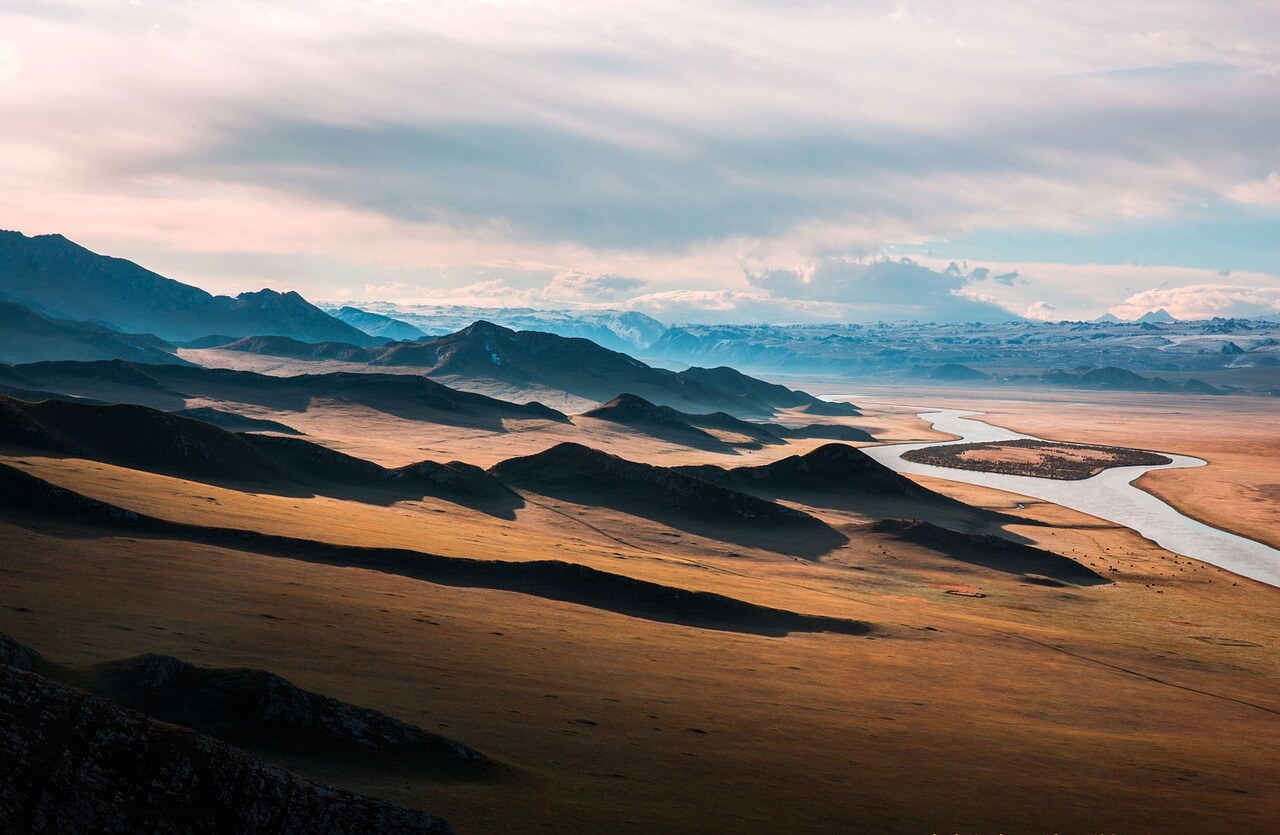
Want even more examples of round-up articles? Here you go:
- 12 new art exhibits to see this summer (Smithsonian)
- 21 ways to see America for cheap (Huffington Post)
- 41 places to go in 2011 (New York Times)
Personal essays
Publishers are experiencing something of a personal essay fatigue , so the market for more might be scarce these days. However, quality trumps all, and a good personal travel essay is just plain good writing in disguise: something that possesses a strong voice while showing insight, growth, and backstory.
Just don’t make it a diary entry. In an interview with The Atlantic , travel writer Paul Theroux said: “The main shortcut is to leave out boring things. People write about getting sick, they write about tummy trouble. They write about waiting. They write three pages about how long it took them to get a visa. I’m not interested in the boring parts. Everyone has tummy trouble. Everyone waits in line. I don’t want to hear about it.”
Here’s a jumping-off point for personal travel essays:
- Taking the Great American Roadtrip (Smithsonian)
Have a burning opinion to share? Sometimes publications end up giving op-eds to staff, but there are always open calls for opinion pieces.
Travel op-eds are much rarer than political opinion pieces, but there’s a pattern to the ones that make the cut: good persuasive writing. If you can come at a topic from a unique angle (and argue your case clearly) then you may be able to publish your opinion.
If you’re in the mood for travel op-ed articles, see:
- The West Coast Is The Best Coast For Food In America (Food & Wine)
- Why Climate Change Is Actually Relevant To Travel (Conde Nast)
Travel Blogging

When typing “travel blog” into Google returns 295 million results, we can guess it’s a fairly competitive market.
Here’s the plus side: bloggers get to write what they want and go where they please. When it comes to blog posts, there are no editors, no gatekeepers. Only you and the “PUBLISH” button.
We won’t go revisit the types of travel writing we covered earlier (such as the roundup format). Instead, we’ll explore some of the other formats bloggers use to tell their travel stories. Since the rules of travel blogging are next to non-existent, our tally below is by no means definitive. And, again, our best advice is to note what your favorite bloggers do on their blogs.
Already running a successful travel blog? You might consider turning that blog into a book !
How-To articles are already fairly popular in magazines, but they’re positively omnipresent in the travel blogging world. Blogs provide a direct communication platform, allowing trust to build up quicker with the readers. As a result, for the search query, “How to travel Europe on a budget,” six out of the top ten results are posts from trusted independent blogs.
A How-To article is the most standard form of advice column a travel blogger can produce. It’s intrinsically useful, promising that it’ll teach something by article’s end. A blogger’s challenge is delivering fully on that promise.
How to read more How-To articles? We got you covered:
- How To Start A Travel Blog (Nomadic Matt)
- How To Travel Solo To A Party Destination (Adventurous Kate)
- How to Visit Penang’s Kek Lok Si Temple (Migrationology)
Itineraries
Itineraries reveal the schedule that the writer took at a given destination, city-by-city or sight-by-sight. They’re meant for the traveler who’s embarking on a similar trip and needs a template. Typically, you’ll find that an itinerary post is an easy place for you to slip in recommendations, anything from the accommodation you used or the restaurants you tried.
You can use itinerary posts to reinforce your blog’s brand. For instance, an itinerary posted on a blog focused around budget travel will probably maximize cost-saving chances.
For more itineraries, see:
- My Trip To Japan (A Complete Japan Itinerary)
- Backpacking Vietnam on a budget: 2-3 Weeks Itinerary + Tips
Longform posts
Longform travel blogging tells a travel story through extended narrative content, as it takes a week’s worth of adventure and shapes it into a story. Longform blog posts about travel often end up being creative nonfiction : a way to present nonfiction — factually accurate prose about real people and events — in a compelling, vivid, dramatic manner.
Photography can add another dimension to the form, as Emmanuel Nataf (our co-founder!) shows on his travel blog . And Reedsy's very own Arielle provides a glimpse into why she prefers longform travel writing on her blog, Steps, a Travel Journal :
My favourite kinds of stories are the ones that give you a real sense of place. That’s why I enjoy longform travel blogging: I get to describe the character of a place through the experiences I encountered there.
If you want to dip your toe into the sea of longform posts, you can also read:
- The Cow Head Taco Philosopher King of Oaxaca (Legal Nomads)
- The Best Worst Museum In The World
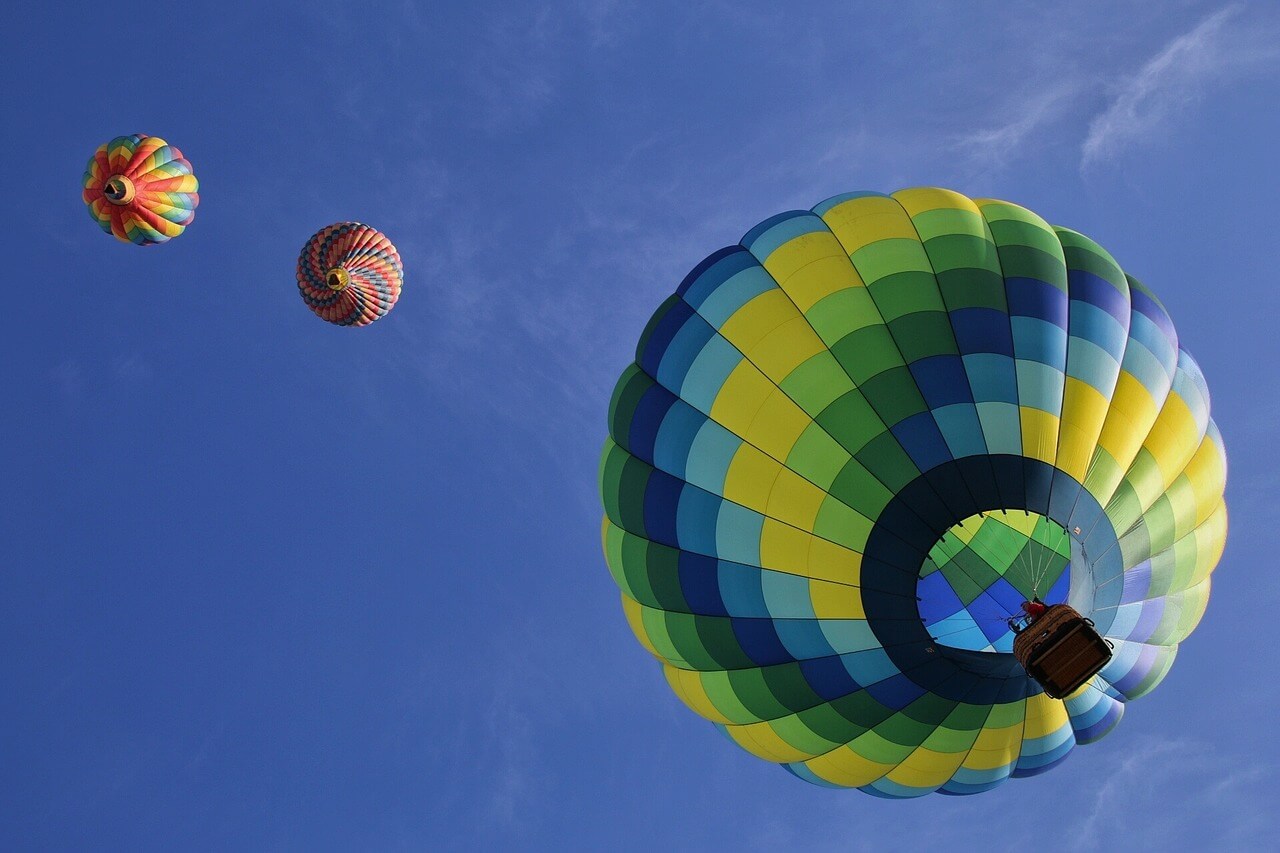
When it comes to writing a book, you can take all the challenges about travel writing from above and magnify it times 2,000. If you’re asking readers to commit to you for more than 100 pages, you’d best make sure that your book is worth their while.
As far as examples go, travel writing’s boomed in the mainstream book market recently. But there’s much more to it than Eat, Pray, Love and its descendants.
Travelogues
In travelogues, authors record their adventures in a way that illustrates or sheds insight upon the place itself. Travelogues possess a storied past, from Lady Mary Wortley Montagu’s Turkish Embassy Letters in 1763 to Mark Twain’s 1867 The Innocents Abroad , which paved the way for the sort of comic travelogues that Bill Bryson’s perfected today.
Up for some travelogues? Check out:
- Notes From A Small Island , by Bill Bryson
- In Patagonia , by Bruce Chatwin
- Travels with Charley In Search of America , by John Steinbeck
Travel memoirs
Nowadays, travel memoirs are practically synonymous with Elizabeth Gilbert’s wildly popular Eat, Pray, Love and Cheryl Strayed’s bestselling Wild , which were both recently adapted into Hollywood blockbusters.
That said, be aware that you’ll need a pretty exceptional personal story for your memoir to compete in today’s market . If you’re still set on writing or self-publishing a travel memoir, it’s tricky to balance personal backstory and travel for 400 pages, so think about taking on a professional for a second pair of eyes.
Did you know? You can find Nicki Richesin , a top Bloomsbury editor who’s edited for Cheryl Strayed, on our marketplace.
In addition to Eat, Pray, Love and Wild , you can read:
- Under the Tuscan Sun , by Frances Mayes
- Coasting , by Jonathan Raban
- Wind, Sand, and Stars , by Antoine de Saint-Exupéry
As Oscar Wilde said, “I never travel without my diary. One should always keep something sensational to read in the train.” But these days, people are replacing diaries with travel guides — the ubiquitous Lonely Planet becoming one of the more common sights on transit.
Travel writing in guidebooks is straightforward, informative, and fact-filled. In addition, there’s a certain amount of responsibility that comes with the job. Lonely Planet alone is read by millions of travelers worldwide.
General Tips and Guidelines

As we mentioned before, the trick to producing great travel writing is ultimately simply writing well . To that extent, you should make sure to follow all the guidelines of good writing — not least, spell-checking your article before submitting or publishing it anywhere. You don’t want an editor or reader to see it while it stilll reads lik edis.
Also, keep in mind the tone, style, and vibe of the publication and platform (and by extension, your audience). A story about a moon-rock could go into a kid's magazine or it could go into Scientific America .
Finally, some category-specific tips:
- If you’re freelance writing, always check submission guidelines. Publications may accept only pitches or they may welcome articles “on spec” (pre-written articles). Some sources only take travel articles that were written within 6 months of the trip.
- If you’re blogging, brand your website (same advice if you’re an author who’s building an author website ).
- If you’re writing a book, get a professional editor! An unedited book is an unwieldy thing, and professional eyes provide direction, continuity, and assonance. ( Layout designers can be important if you’re publishing a travel photography book, in the meanwhile.)
Travel writing isn't a cinch. In fact, it's a long and often hard grind. But by figuring out what type of travel writing you want to try your hand at, you're taking the crucial first step.
Have you tried travel writing before? Want to show us the cool travel blog that you're keeping? We're always in the mood for great travel writing + pretty pictures. Leave us a note in the comments and we'll be sure to check it out!
7 responses
Amanda Turner says:
20/03/2018 – 16:20
Thank you, this was very helpful. Here's one of mine: http://vagabondingwithkids.com/every-mothers-guide-to-piranha-fishing-in-the-amazon/
Travalerie says:
24/05/2018 – 18:42
I landed on this page Googling for one thing and coming up with another. Haha! But what I found instead was helpful as I'm devouring as much as I can on travel writing. A few months ago, I started a new travel business, revamped my website including a new blog, and am in the process of writing, writing, writing. I took 2 trips this year so far and wrote what seemed like a mini-novella. Burning out in the process. I know I can do better. But I had no idea what I was writing could be re-worked to fit a certain category of travel writing -- which is what I found helpful in this post above. Thanks https://www.travalerie.com/blog
Surya Thakur says:
04/03/2019 – 12:39
Very good information. Lucky me I discovered your blog by chance (stumbleupon). I’ve saved as a favorite for later! KuLLuHuLLs
David Bishop says:
08/05/2019 – 12:28
Thanks for this good article. I'm in my third year on the road and recently started my senior solo adventure travel website. I think my site has some pretty good stuff, of course. Take a look and tell me what you think. www.davidhunterbishop.com
Iris C. Permuy says:
23/05/2019 – 18:03
Thank you very much for all of these useful pieces of advice. I will make sure to implement them all on my travel blog, which is a combination of travel and gastronomy and uses the memoir and itinerary types, apart from recipes. Come check it out if you feel like it! I am more than open, eager for some professional feedback :)
Serissa says:
26/10/2019 – 14:53
This post is the perfect diving board for aspiring travel writers. I plan to link to this page from my travel blog if that is alright! ?? The link on my website will appear as "[title of this post] by Reedsy Blog". I assume this is alright, but if not, please email me directly to let me know! Thanks so much!
↪️ Martin Cavannagh replied:
29/10/2019 – 10:11
We'd be absolutely delighted if you shared this article on your blog :)
Comments are currently closed.
Continue reading
Recommended posts from the Reedsy Blog

Man vs Nature: The Most Compelling Conflict in Writing
What is man vs nature? Learn all about this timeless conflict with examples of man vs nature in books, television, and film.

The Redemption Arc: Definition, Examples, and Writing Tips
Learn what it takes to redeem a character with these examples and writing tips.

How Many Sentences Are in a Paragraph?
From fiction to nonfiction works, the length of a paragraph varies depending on its purpose. Here's everything you need to know.

Narrative Structure: Definition, Examples, and Writing Tips
What's the difference between story structure and narrative structure? And how do you choose the right narrative structure for you novel?

What is the Proust Questionnaire? 22 Questions to Write Better Characters
Inspired by Marcel Proust, check out the questionnaire that will help your characters remember things past.

What is Pathos? Definition and Examples in Literature
Pathos is a literary device that uses language to evoke an emotional response, typically to connect readers with the characters in a story.
Join a community of over 1 million authors
Reedsy is more than just a blog. Become a member today to discover how we can help you publish a beautiful book.

Bring your publishing dreams to life
The world's best freelance editors, designers, and marketers are on Reedsy. Sign up for free and meet them TODAY.

1 million authors trust the professionals on Reedsy. Come meet them.
Enter your email or get started with a social account:
Examples of Great Travelogue Writing to Inspire Your Next Adventure
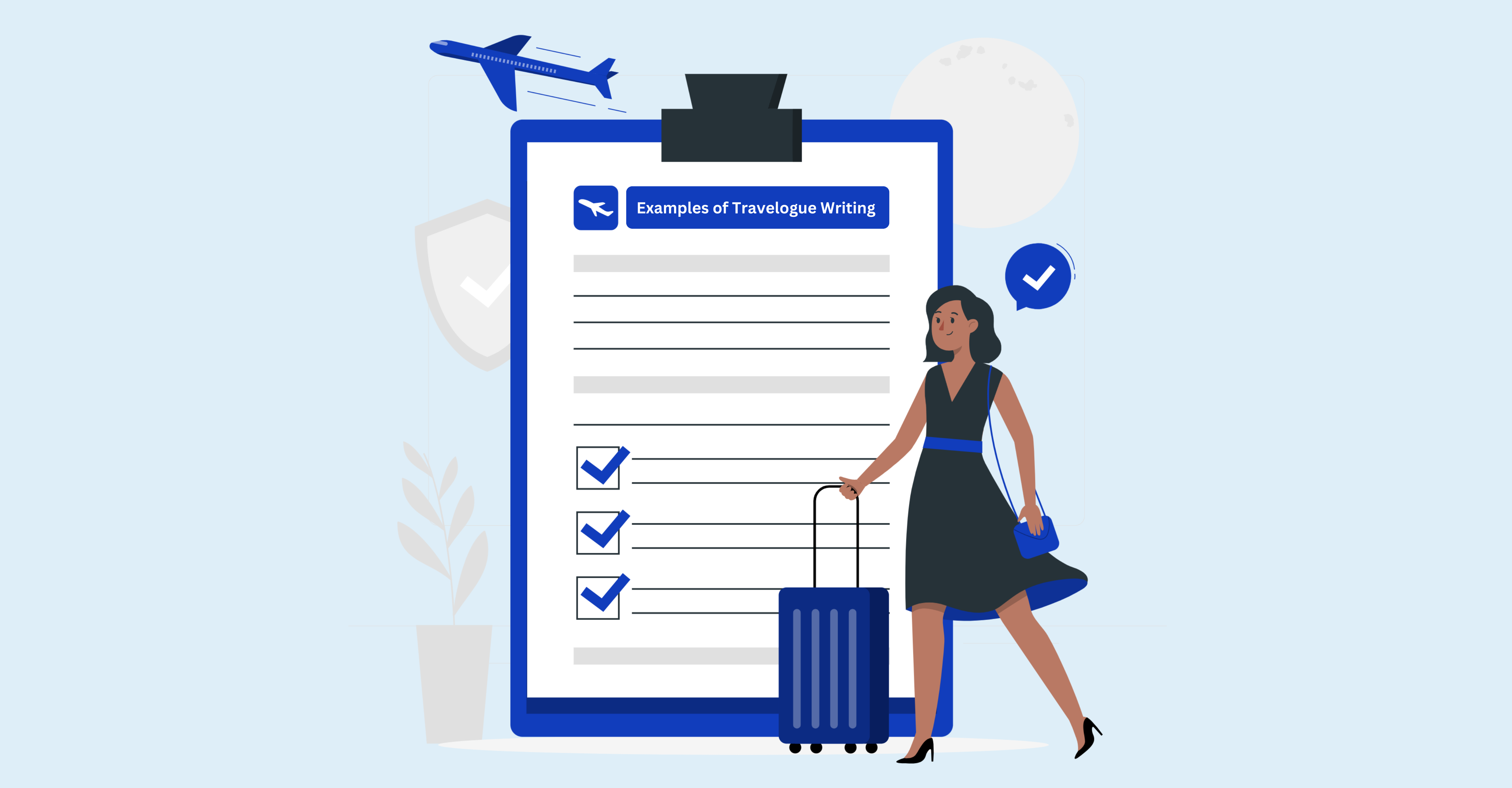
“Traveling – it leaves you speechless, then turns you into a storyteller.” – Ibn Battuta.
Ah, the joy and thrill of travel! Discovering new places, meeting strangers, and immersing yourself in unfamiliar cultures. But what’s the point of all this if you can’t capture the essence of your expedition in words? That’s where travelogue writing comes in.
Have you ever read a post that made you feel like you are experiencing the adventure alongside the writer? Well, that’s the power of a well-written travelogue.
It can transport your readers to far-off lands and make them feel right there with you. Add vivid descriptions, engaging anecdotes, and personal reflections, and voila! - You’ve got yourself some entertaining travel tales to share.
So, are you ready to unlock your inner travelogue writer?
Craft captivating tales that will leave your readers wishing for more. Let’s get started and master the art of travel writing!
Discover the Art of Travelogue Writing
From ancient Greece to modern-day blogs, travelogue writing has existed for centuries. It is a form of creative non-fiction that combines memories and factual data. But it’s not just about facts and statistics - a journey of self-expression, storytelling, and adventure.
Remember - it is your travel tale, not a guidebook!
Travelogue writing captures a location’s essence in conveying its beauty and complexity. The key is to immerse yourself in the culture and environment of the places you visit.
Tips for Crafting Engaging Travel Narratives
Once you’ve gathered your thoughts and experiences, it’s time to craft them into compelling narratives. Here are a few tips with examples to help you get started:
Start With a Strong Hook
A vivid description, intriguing anecdote, or thought-provoking question can do the trick. For instance, the following example firmly sets the scene for the travelogue.
“Ever wondered what it’s like to explore Tokyo’s bustling streets? To taste fresh sushi, see neon lights, and immerse yourself in tradition and innovation? That’s what I did on my recent trip to Japan.”
Create a Sense of Place
Use descriptive language to create a vivid image for your readers. The following passage skillfully portrays the same.
“The narrow streets of Marrakech were alive with color and sound. The scent of spices and grilled meats filled the air, and vibrant textiles hung from every stall. As I made my way through the bustling souk, I couldn’t help but feel swept up in the city’s energy.”
Show, Don’t Tell
Suppose you visited a beach and want to write a travelogue about it. Don’t write, “The beach was beautiful.” Instead, convey as shown in the given example.
“During sunset, the sun casts a warm glow over the white sand. The sound of waves filled the air as I dug my toes into the sand and breathed in the sea breeze.”
Now you know the difference. Use dialogue and sensory details to immerse your readers in your destination.
Include Personal Reflections
Share your thoughts and feelings. Connect your experiences to broader themes and ideas. For example,
“Standing atop the fort’s ancient ruins, I was amazed by the stunning views and intricate stonework. But as I gazed over, I reflected on the fragility of human achievement”.
Be Vulnerable
“Doubt crept in as I stood at the peak’s base. Could I make it to the top? But I pushed on and conquered my fear. The sight from the top was nothing short of spectacular”.
In the passage, the writer shares their fears and triumphs in a concise and relatable way.
Use Dialogue
Check out the following example. Here the writer uses dialogue to bring the woman to life and let her speak for herself. It adds depth and personality to your travelogue.
“An old lady chuckled as I haggled with a vendor over a silk scarf in Istanbul. She said, ‘You drive a hard bargain, but everything’s negotiable.’ We chatted about her travel stories as a young trader. ‘Those were the days,’ she sighed. ‘Now, I leave the traveling to the young ones like you.’”
Inspiring Travel Journal Entries to Ignite Your Wanderlust
Reading inspiring travel journals and memoirs is perfect for igniting your wanderlust. Here are a few examples to inspire your travelogue writing.
“Eat, Pray, Love” by Elizabeth Gilbert: A memoir of the author’s journey through Italy, India, and Indonesia in search of balance and purpose. Vivid descriptions and inspiring encounters.
“A Year in Provence” by Peter Mayle: A memoir of the author’s first year in a French village. Witty observations and charming anecdotes transport you to the countryside.
“On The Road” by Jack Kerouac: A classic novel of freedom and self-discovery, chronicling the adventures of two friends on a cross-country road trip.
“In A Sunburned Country” by Bill Bryson: A witty and informative travelogue about the author’s adventures in the land down under.
In ‘The Great Railway Bazaar,’ Paul Theroux invites us on a captivating train journey from London to Tokyo. Along the way, he explores the rich cultures and stunning landscapes.
Final Thoughts
Travelogue writing is a beautiful way to connect with your destinations on a deeper level and encourage others.
- Take inspiration and learn from given epic travelogue writing examples.
- Use your own words – dont copy from examples or websites.
- Inject your feelings and make your stories conversational.
Unleash the beauty of your travel experiences through vivid descriptions and captivating storytelling. Make Text Mercato your partner in this expedition and become a master of the travelogues.
1. What travelogue writers can I look to for inspiration?
There are several great writers you can look for motivation. Here are some personal favourites:
- Bill Bryson is a prolific travel writer with excellent humour and wit. His book, “A Walk in the Woods,” is a perfect engaging travelogue.
- Paul Theroux is known for his deep cultural and historical insights.
- Pico Iyer is known for introspective cultural pieces. For instance, his contemplative travelogue - “The Art of Stillness.”
- Jan Morris writes beautifully descriptive travelogues with her lyrical and evocative style.
2. What are some common themes in engaging travelogue writing?
- Cultural exploration: Write engaging travelogues by exploring the unique cultures of a place.
- Adventure: Discover and write about exotic locations or thrilling activities.
- Food and drink: Review local cuisine, which can be a cornerstone of local culture.
- Personal growth: Focus on self-discovery as you travel to new destinations.
3. How can I apply the techniques of great travelogue writing to my work?
- Have a keen eye for detail and a strong sense of narrative.
- Take the time to observe the people, architecture, and landscapes around you.
- Tell a compelling story and evoke emotions in your readers.
- Use persuasive language to paint pictures and challenge conventional thinking.
- Use humor - add some fun to your writing to engage the reader.
Give your readers a sense of closure .
Tags : Marketing , SEO , Digital Marketing ,
Recent Blog
Newsletters, let’s hear from you on how we can positively contribute to your goals.

Quality content is the key to add value to the success of your business, connect with your audience, and keep them coming back for more. TextMercato is designed to power your digital content needs to the next level.
Content Type
- Website Blogs
- Website Content
- SEO Articles
- Copywriting
- Whitepapers
- Social Media
- Thought Leadership
- Product Descriptions
- Buying & Selling Guide
- Market Reports
- Text Content
- Transcriptions
- Translations
- Real Estate
- Hospitality
© 2023 Text Mercato Solutions Pvt Ltd. All Rights Reserved. Cookie policy | Privacy policy | Terms of use | Contact us
IB Language and Literature 2.0
Group 1 english higher and standard level, faraway places: travel writing.
“Is it lack of imagination that makes us come to imagined places, not just stay at home?” Elizabeth Bishop, poet (1911–1979)
In this section you’ll come to understand the conventions of travel writing , learn a bit about the history of the genre, question why people are compelled to travel – and to write about it – and investigate the overlap between language and literature that exists in the wide and varied genre of travel writing. You’ll read non-fiction texts that feel like stories and see imaginary scenes presented as fact. You’ll learn to decode elements of travel writing and question texts more closely, finding analysis points and learning to evaluate various pieces of writing. These kinds of skills underpin your success in Paper 1 at the end of your course. Begin your study by reading The Travel Narrative from the list of articles below, and then choose one or two more pieces of wider reading to enrich your study:
- The Travel Narrative (IB Textbook)
- A Short History of Travel Writing (Traveltester article)
Reading Challenge
This is a longer and more challenging piece of reading, but spending time on this piece, and discussing it with your teacher, will help you master this topic:
- The Elasticity of Place (an interview with a travel writer)
Class Activit y 1: why do we travel?
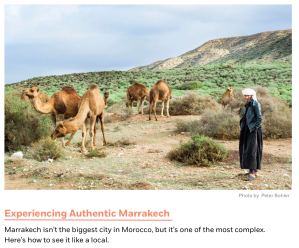
As you will have learned by now, people travel – and write about the places they visit – for a variety of reasons. the most common are:
- to find the self
- curiosity about the ‘other’
- religious or spiritual reasons;
- to search for one’s roots;
- to be informed
- to experience ‘awe’
In this activity, you’ll practice identifying these purposes in travel writing. Visit Travel Tales, a collection of stories and articles curated and edited by Lavinia Spalding. Slowly scroll down the home page of her site, reading the titles and blurbs of the various stories you find there. Can you infer the purpose of travel from these snippets of information? Refer to The Travel Narrative (above) for more information of the purposes of travel writing.
Class Activity 2: seven travel stories
The travel genre is wide and varied – and this small collection of travel stories will give you a little taste of some famous (and not-so-famous) writers’ work. You may recognise one or two of these names, such as Bram Stoker and Bill Bryson.
Inside the booklet you’ll find seven short travel tales: either read them yourself, or divide them amongst the people in your class. Use this powerpoint to record your observations about the genre of travel writing. However many extracts you attempt, feed back what you’ve done to the rest of the class.
Areas of Exploration Guiding Conceptual Question
‘Cultural practices’ refers to traditional or customary practices of a particular ethnic, national or cultural group. They can be considered in the same way as symbolism in literary texts; physical manifestations of abstract beliefs and values . One reason we travel is to discover the beliefs and values of different people, as practiced in rites and traditions which have often been passed down from generation to generation. Before you work through the resource below, can you think of any practices that are special in your culture? These may include religious, medical, artistic, culinary, political, family or any other behaviour that reveals underlying beliefs and values:
- H ow do texts reflect, represent or form a part of cultural practices?
Discussion Points
After you’ve got your head around the material in this section, pair up, pick a question, spend five minutes thinking and noting down your thoughts – then discuss your ideas with a friend and report back to the class:
- Why is travel writing important? How is it different from other kinds of journalism?
- In the twenty-first century, is travel writing still necessary? Given that technology can connect us with people and places all around the world, and we can watch videos, read blogs, and browse the social media of people who live in other places, what is the point of reading first person accounts of travel by outsiders to those places?
- Is there a difference between a traveller and a tourist? What makes a person one rather than the other? Is it preferable to be one over the other?
Learner Portfolio
Watch Livinia Spalding’s Tedtalk (above) and, if you have not done so already, visit Travel Tales to browse some of the stories from her collection. Near the end of this talk Lavinia issues a challenge: to write your own literary travel story, inspired by a place you’ve been or a person you’ve met on a journey you have taken. Take her up on this challenge by writing a piece of literary non-fiction about a place you have been ora journey you have taken in your life. Make the purpose of your writing clear: is it to find the self; discover the ‘other’; become informed; search for your roots; take a religious or spiritual journey, experience ‘awe’ – or some combination of purposes?
Paper 1 Text Type Focus: travel writing
At the end of your course you will be asked to analyze unseen texts (1 at Standard Level and 2 at Higher Level) in an examination. You will be given a guiding question that will focus your attention on formal or stylistic elements of the text(s), and help you decode the text(s)’ purpose(s). Travel writing is an extremely fluid genre and you could be presented with a text that contains a variety of tropes (such as maps, photographs, itineraries, reported or direct speech, humour, metaphors… the list goes on) and may even share similarities with literary texts. Use these practice texts to familiarise yourself with the different features of Travel Writing and add them to your Learner Portfolio; you will want to revise text types thoroughly before your Paper 1 exam. You can find more information – including text type features and sample Paper 1 analysis – by visiting 20/20 . Read through one or two of the exemplars, then choose a new paper and have a go at writing your own Paper 1 analysis response:
- A Fish with Hair
- The Mangyan of Mindanao
- Enter Tasmania’s Labyrinth ( Past Paper)
- Cycling Tips (Past Paper)
- Taj Mahal (Past Paper)
- Long Enough in Jo’burg (Past Paper)
- Travel Tales (Past Paper)
- Hunting Moose (Past Paper)
Key features of travel writing
- Viewpoint: travel writing often documents the personal experiences of someone exploring a new place or country so is often first person.
- Perspective: an outsider’s perspective is common when reading travel writing, particularly if the destination is new, exotic or remote. Alternatively, the piece might be written from an insider’s perspective and is inviting you to visit or share an experience in a different part of the world.
- Structure: look out for chronological timelines, past – present structures or a linear journey of discovery. Guidebooks will have clear headings and subheadings and will probably include box-outs and the like.
- Information: travel writing often seeks to be informative and can present you with facts and figures, names and dates, historical or architectural or geographical information and more.
- Description: if the writer is trying to make the destination tantalising, or to help transport the reader, you might find examples of visual imagery, vivid description , even figurative comparisons , helping you visualise a far-off place.
- Visuals: photographs, maps , or floor plans of famous locations are all visual features that you might encounter in travel writing, particularly guidebooks.
Body of Work: Alison Wright Photography
Alison Wright is an author, photographer and speaker who has published several collections of photo-essays including Faces of Hope: Children of a Changing World and The Spirit of Tibet: Portrait of a Culture. Her most recent collection from 2018 is titled Human Tribe . Her mission is to document endangered cultures and traditions from around the world, including raising awareness of human rights and other issues. Alison has won numerous awards and accolades including the Dorothea Lange Award in Documentary Photography for her photographs of child labor in Asia and a two-time winner of the Lowell Thomas Travel Journalism Award. She was named a National Geographic Traveler of the Year in 2013. Here is a small selection of her photography to use in class, or you can explore Alison’s complete body of work here .
The presentation of beliefs and values through images is a powerful tool that can help preserve minority cultures in the face of globalisation and help to balance historical injustice by educating those who have lost touch with the past or with alternative ways of living. Texts of all kinds – written, spoken, visual – can help protect cultural heritage that might otherwise be lost. Alison Wright’s work can be seen in the wider context of cultural preservation , an important global issue in our increasingly homogenised and globalised world.
Towards Assessment: Individual Oral
“Supported by an extract from one non-literary text and one from a literary work, students will offer a prepared response of 10 minutes, followed by 5 minutes of questions by the teacher, to the following prompt: Examine the ways in which the global issue of your choice is presented through the content and form of two of the texts that you have studied. (40 marks) “
Alison Wright’s photography would make a good text to consider using in your Individual Oral. Here are two suggestions as to how you might use this Body of Work to create a Global Issue. You can use one of these ideas, or develop your own. You should always be mindful of your own ideas and class discussions and follow the direction of your own thoughts, discussions and programme of study when devising your assessment tasks:
- Field of Inquiry: Culture, Identity and Community
- Global Issue: Cultural Preservation
Though the colonial era has passed, its legacy lives on in the education systems, laws, political systems and other cultural practices that have displaced indigenous traditions and beliefs. In this context, the reassertion of minority cultures through texts is a powerful tool that can help balance out historical injustices and educate those who have lost touch with alternative ways of life. You could easily pair her work with any literary text that reveals aspects of culture, describes cultural practices, or reflects cultural beliefs and concerns.
- Field of Inquiry: Beliefs, Values and Education
- Global Issue: Encountering the ‘Other’
An important purpose of travel writing is for us to encounter ‘other’ people and make connections with people who may be very different to ourselves. In a world of suspicion and insularity, it is through building bridges between cultures and learning to understand different ways of life that we can settle our differences peaceably. In this context, Alison Wright’s photography invites us to ‘meet’ individuals from cultures that are very different to the urbanised or westernised cultures a lot of us may be more familiar with.
Sample Individual Oral Here is a recording of the first ten minutes of an individual oral for you to listen to. You can discuss the strengths and weaknesses of this talk as a way of improving your own oral presentations. Be mindful of academic honesty when constructing your own oral talk. To avoid plagiarism you can: talk about a different global issue; pair Alison Wright’s photography with a different literary work; select different passages to bring into your talk; develop an original thesis.
Possible Literary pAirings
- Broken April by Ismail Kadare – you might like to consider the idea that some cultural traditions are worth preserving, while others should rightly be consigned to the dustbin of history and Kadare subtly implies the Kanun is a dying tradition.
- John Keats’ poetry – In Ode on a Grecian Urn , the speaker tries to imagine what life might have been like for the people engraved on the surface of an urn.
- Pygmalion by George Bernard Shaw – the play is awash with peculiar Victorian mores revealing all kinds of beliefs and attitudes about class, poverty, prudery, morality and more. Doolittle’s speeches, Mrs Higgins’ at-home or conversations between Higgins, Pickering and Mrs Pearce could all be passages that you might like to select for this activity.
- Border Town by Shen Congwen – written just as China was beginning to modernise, and recently rediscovered by a new generation of Chinese readers, Congwen’s novella paints a picture of the lives and traditions of local Miao people in West Hunan, and can be valued as a record of a way of life that has largely disappeared in one of the world’s fastest-changing countries.
- The Elephant Vanishes by Haruki Murakami – these stories are set in a world traumatised by history, and most of the characters are victims of a peculiar kind of ‘collective amnesia’. They seem stuck in the present and can’t move on in their lives. Some critics have interpreted Murakami’s writing as a response to the tumultuous events of Japan’s history – a past that many would like to simply forget. Approaching this activity from this unusual angle would be a challenging, but possibly very interesting, way to pair a literary and non-literary body of work.
- Charlotte Mew’s poetry – writing at the start of the twentieth century, what does Charlotte Mew reveal about the lives, attitudes and values of the people in her poems? What kind of society did she live in? What was life like for ordinary people – and for women, disabled people and those who were mentally impaired?
- Waiting for the Barbarians by J.M. Coetzee – the ‘civilised’ world’s encounter with the fearsome ‘other’ is a major theme of Coetzee’s novel and could make an ideal piece with which to compare Alison Wright’s photography.
Towards Assessment: HL Essay
Students submit an essay on one non-literary text or a collection of non-literary texts by one same author, or a literary text or work studied during the course. The essay must be 1,200-1,500 words in length. (20 marks) .
If you are an HL student who enjoyed this section of work, and find the topic of travel writing interesting, you might consider this Body of Work to write your Higher Level Essay. You could extend your research beyond Human Tribe to include some of her other published collections. Angles of investigation might include: to what extent you think she is successful in her aim of bridging the gap between different cultures; whether her photography constitutes a modern form of travel writing; to what extent her photography reveals and represents cultural practices; whether you feel the photographs form or impose an identity onto people from an outsider’s perspective. Here are some suggestions for you – but always follow your own lines of inquiry should your thoughts lead you in a different direction:
- How is colour and composition used to present ideas about identity in Alison Wright’s photography?
- How does Alison Wright imply a close connection between people and the natural world in her photography collections?
- How does Alison Wright use metonymy in her photographic work?
- Explore the symbolism of eyes in Alison Wright’s photographic collections.
- In what ways does Alison Wright’s photography meaningfully negotiate our encounter with unfamiliar people and places?
Wider Reading and Research
- Outpost Magazine – a Canadian adventure-travel publication published six times a year, Outpost is known for its long-form adventure narratives from across the world.
- My Favourite Travel Book – six famous travel writers nominate their favourite travel books.
- The Most Inspiring Talks on Travel – a selection of the best Tedtalks about travel, including Lavinia Spalding’s talk.
- The Truth About Tribal Tourism – visit this Rough Guide blog to discover how your sustainable tour may not be as friendly to people or places as you might have thought…
Share this:
Categories: Time and Space
Leave a comment Cancel reply

- Already have a WordPress.com account? Log in now.
- Subscribe Subscribed
- Copy shortlink
- Report this content
- View post in Reader
- Manage subscriptions
- Collapse this bar

4 examples of great travel writing .
Really good travel writing inspires us to get up, go out and see the world. It can be just as persuasive as an awe-inspiring photograph or an enthusiastic word-of-mouth endorsement from a close friend.
Here are four very different examples of travel writing, all of which are great for different reasons.
Nomadic Matt (blog)
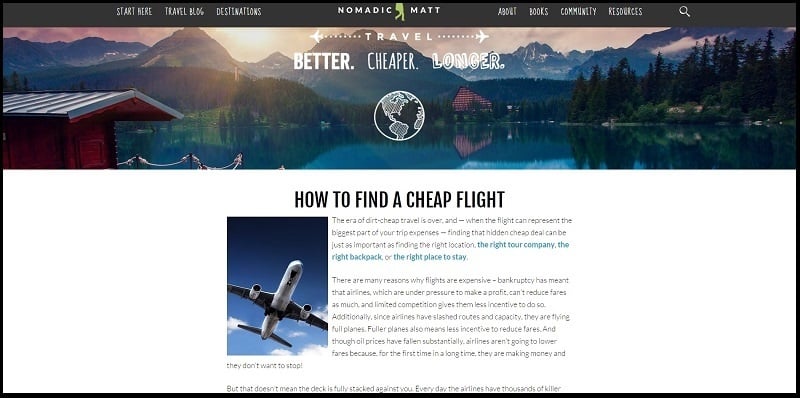
Run by budget-travel expert Matt Kepnes, nomadicmatt.com is an energetic and lively blog – his passion is obvious from the get-go and it prevails throughout his site. He’s written a best-selling book called How to Travel the World on $50 a Day , and he constantly updates his website with new content.
He’s put together useful profiles on many cities and regions all over the world, but his most insightful articles are the ones that offer practical booking advice and money-saving tips – such as “How to Find a Cheap Flight” . Being so well-travelled, he’s found numerous ways around the heavy costs of travel and is committed to sharing them – which is great news for the average holiday- goer who likes to save a bob or two (which is most of us).
DO YOU WANT TO INCREASE FOOTFALL AT YOUR DESTINATION WITH ONLINE MARKETING? OUR DESTINATION MARKETING GUIDE COVERS EVERYTHING YOU NEED TO KNOW, FROM CONTENT MARKETING TO PAID ADVERTISING. DOWNLOAD YOURS FOR FREE!
{{cta(‘998cc293-d564-42ca-b025-22f9e7b88386’)}}
Fodor’s (guidebook series and website)

In addition to producing the world’s most popular series of travel guidebooks, Fodor’s has embraced the modern age: in addition to printing their books, they also have a user-friendly website that’s packed with info and is accessible on all devices – desktop, tablet and mobile.
The content on the website is certainly less detailed than the guidebooks that established the company’s reputation, but brevity is not always a bad thing. The site’s main function, after all, is to provide thick-and-fast info, and it does so. Look at the site’s main Florence page to see exactly what I mean – it gives a succinct introduction to the place and then outlines the top reasons to go, with a load of links to specific articles with reviews and tips.
From a less literary perspective, the Fodor’s site is mobile-friendly too – so it’s really easy to navigate on the go, unlike some of its competitors.
John Steinbeck’s Travels with Charley (non-fiction book)
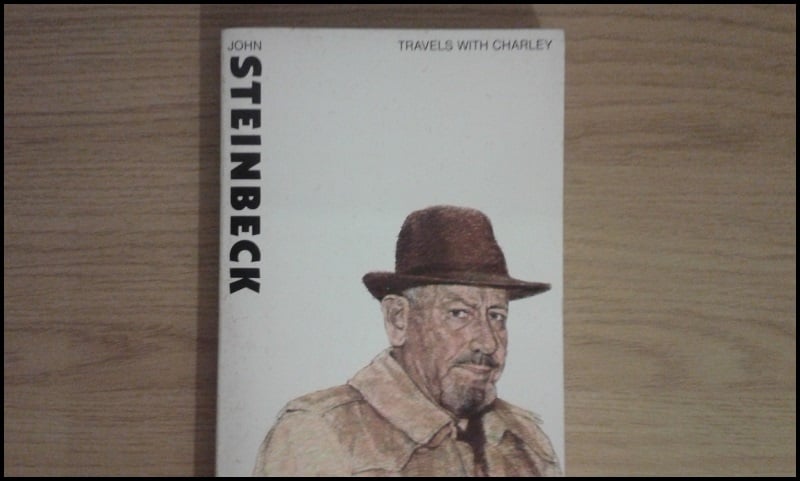
As his novel-writing career was coming to an end and he was entering his twilight years, John Steinbeck (author of The Grapes of Wrath and Of Mice and Men ) went on a road trip across the USA with his dog Charley, and then he wrote a book about the experience.
Unlike the other examples in this post, Travels with Charley doesn’t really contain any information you can use practically when travelling America – it’s more a snapshot of the country in 1960.
Steinbeck set out from his house on Long Island, New York, and basically went around the country in an anti-clockwise loop. The trip was said to be about 10,000 miles all in all.
In Travels with Charley , Steinbeck vividly captures American culture – just as he does in most of his fictional work. You can get a copy for peanuts in a second-hand bookshop or from various places online like Amazon and eBay.
Adventurous Kate (blog)
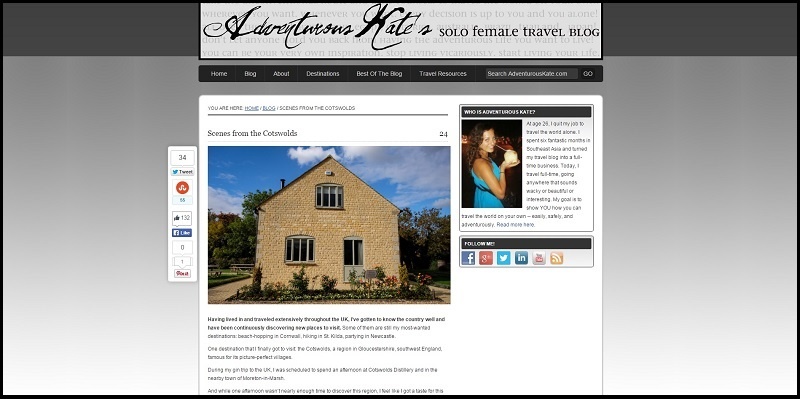
Kate McCulley is one of the best-known solo female travel bloggers. Her aptly-titled website, Adventurous Kate, resembles a journal more than anything else – the writing is very conversational and is suitably written in the first person.
Kate uses images very well throughout her blog posts – it’s not uncommon to see a dozen in one single article, and they’re all photos she has taken herself with her own camera. Crucially, Kate’s images are well-placed and they complement her writing – a prime example of this in action is her post about her trip to a Cotswolds gin distillery .
A while ago we wrote about how important images are in blogs – have a read and you’ll see some pretty telling stats about user engagement.
Any Other Suggestions?
Is there any other travel writing you think is worth a mention? It could be a website, a blog, an individual article, or a good old-fashioned book. Let us know what and why over on Twitter .
Get your Destination marketing guide
Now it’s time for you to shine! If you want to nail your digital marketing and increase footfall at your destination, download our FREE guide to Destination marketing .

Related Insight
Have an informal conversation with one of our marketing experts ..
Setup a thirty minute introduction call with one of our team. We'll tell you more about theEword and our approach, and we'd love to hear more about your business.
What You Should Know About Travel Writing
- An Introduction to Punctuation
- Ph.D., Rhetoric and English, University of Georgia
- M.A., Modern English and American Literature, University of Leicester
- B.A., English, State University of New York
Travel writing is a form of creative nonfiction in which the narrator's encounters with foreign places serve as the dominant subject. Also called travel literature .
"All travel writing—because it is writing—is made in the sense of being constructed, says Peter Hulme, "but travel writing cannot be made up without losing its designation" (quoted by Tim Youngs in The Cambridge Introduction to Travel Writing , 2013).
Notable contemporary travel writers in English include Paul Theroux, Susan Orlean, Bill Bryson , Pico Iyer, Rory MacLean, Mary Morris, Dennison Berwick, Jan Morris, Tony Horwitz, Jeffrey Tayler, and Tom Miller, among countless others.
Examples of Travel Writing
- "By the Railway Side" by Alice Meynell
- Lists and Anaphora in Bill Bryson's "Neither Here Nor There"
- Lists in William Least Heat-Moon's Place Description
- "London From a Distance" by Ford Madox Ford
- "Niagara Falls" by Rupert Brooke
- "Nights in London" by Thomas Burke
- "Of Trave," by Francis Bacon
- "Of Travel" by Owen Felltham
- "Rochester" by Nathaniel Hawthorne
Observations About Travel Writing
Authors, journalists, and others have attempted to describe travel writing, which is more difficult to do than you might think. However, these excerpts explain that travel writing—at a minimum—requires a sense of curiosity, awareness, and fun.
Thomas Swick
- "The best writers in the field [of travel writing] bring to it an indefatigable curiosity, a fierce intelligence that enables them to interpret, and a generous heart that allows them to connect. Without resorting to invention , they make ample use of their imaginations. . . . "The travel book itself has a similar grab bag quality. It incorporates the characters and plot line of a novel, the descriptive power of poetry, the substance of a history lesson, the discursiveness of an essay , and the—often inadvertent—self-revelation of a memoir . It revels in the particular while occasionally illuminating the universal. It colors and shapes and fills in gaps. Because it results from displacement, it is frequently funny. It takes readers for a spin (and shows them, usually, how lucky they are). It humanizes the alien. More often than not it celebrates the unsung. It uncovers truths that are stranger than fiction. It gives eyewitness proof of life’s infinite possibilities." ("Not a Tourist." The Wilson Quarterly , Winter 2010)
Casey Blanton
- "There exists at the center of travel books like [Graham] Greene's Journey Without Maps or [V.S.] Naipaul's An Area of Darkness a mediating consciousness that monitors the journey, judges, thinks, confesses, changes, and even grows. This narrator , so central to what we have come to expect in modern travel writing , is a relatively new ingredient in travel literature, but it is one that irrevocably changed the genre . . . . "Freed from strictly chronological , fact-driven narratives , nearly all contemporary travel writers include their own dreams and memories of childhood as well as chunks of historical data and synopses of other travel books. Self reflexivity and instability, both as theme and style , offer the writer a way to show the effects of his or her own presence in a foreign country and to expose the arbitrariness of truth and the absence of norms." ( Travel Writing: The Self and the World . Routledge, 2002)
Frances Mayes
- "Some travel writers can become serious to the point of lapsing into good ol' American puritanism. . . . What nonsense! I have traveled much in Concord. Good travel writing can be as much about having a good time as about eating grubs and chasing drug lords. . . . [T]ravel is for learning, for fun, for escape, for personal quests, for challenge, for exploration, for opening the imagination to other lives and languages." (Introduction to The Best American Travel Writing 2002 . Houghton, 2002)
Travel Writers on Travel Writing
In the past, travel writing was considered to be nothing more than the detailing of specific routes to various destinations. Today, however, travel writing has become much more. Read on to find out what famous travel writers such as V.S. Naipaul and Paul Theroux say about the profession.
V.S. Naipaul
- "My books have to be called ' travel writing ,' but that can be misleading because in the old days travel writing was essentially done by men describing the routes they were taking. . . . What I do is quite different. I travel on a theme . I travel to make an inquiry. I am not a journalist. I am taking with me the gifts of sympathy, observation, and curiosity that I developed as an imaginative writer. The books I write now, these inquiries, are really constructed narratives." (Interview with Ahmed Rashid, "Death of the Novel." The Observer , Feb. 25, 1996)
Paul Theroux
- - "Most travel narratives—perhaps all of them, the classics anyway—describe the miseries and splendors of going from one remote place to another. The quest, the getting there, the difficulty of the road is the story; the journey, not the arrival, matters, and most of the time the traveler—the traveler’s mood, especially—is the subject of the whole business. I have made a career out of this sort of slogging and self-portraiture, travel writing as diffused autobiography ; and so have many others in the old, laborious look-at-me way that informs travel writing ." (Paul Theroux, "The Soul of the South." Smithsonian Magazine , July-August 2014) - "Most visitors to coastal Maine know it in the summer. In the nature of visitation, people show up in the season. The snow and ice are a bleak memory now on the long warm days of early summer, but it seems to me that to understand a place best, the visitor needs to see figures in a landscape in all seasons. Maine is a joy in the summer. But the soul of Maine is more apparent in the winter. You see that the population is actually quite small, the roads are empty, some of the restaurants are closed, the houses of the summer people are dark, their driveways unplowed. But Maine out of season is unmistakably a great destination: hospitable, good-humored, plenty of elbow room, short days, dark nights of crackling ice crystals. "Winter is a season of recovery and preparation. Boats are repaired, traps fixed, nets mended. “I need the winter to rest my body,” my friend the lobsterman told me, speaking of how he suspended his lobstering in December and did not resume until April. . . ." ("The Wicked Coast." The Atlantic , June 2011)
Susan Orlean
- - "To be honest, I view all stories as journeys. Journeys are the essential text of the human experience—the journey from birth to death, from innocence to wisdom, from ignorance to knowledge, from where we start to where we end. There is almost no piece of important writing—the Bible, the Odyssey , Chaucer, Ulysses —that isn't explicitly or implicitly the story of a journey. Even when I don't actually go anywhere for a particular story, the way I report is to immerse myself in something I usually know very little about, and what I experience is the journey toward a grasp of what I've seen." (Susan Orlean, Introduction to My Kind of Place: Travel Stories from a Woman Who's Been Everywhere . Random House, 2004) - "When I went to Scotland for a friend's wedding last summer, I didn't plan on firing a gun. Getting into a fistfight, maybe; hurling insults about badly dressed bridesmaids, of course; but I didn't expect to shoot or get shot at. The wedding was taking place in a medieval castle in a speck of a village called Biggar. There was not a lot to do in Biggar, but the caretaker of the castle had skeet-shooting gear, and the male guests announced that before the rehearsal dinner they were going to give it a go. The women were advised to knit or shop or something. I don't know if any of us women actually wanted to join them, but we didn't want to be left out, so we insisted on coming along. . . ." (Opening paragraph of "Shooting Party." The New Yorker , September 29, 1999)

Jonathan Raban
- - "As a literary form, travel writing is a notoriously raffish open house where different genres are likely to end up in the bed. It accommodates the private diary , the essay , the short story, the prose poem, the rough note and polished table talk with indiscriminate hospitality. It freely mixes narrative and discursive writing." ( For Love & Money: Writing - Reading - Travelling 1968-1987 . Picador, 1988)
- - "Travel in its purest form requires no certain destination, no fixed itinerary, no advance reservation and no return ticket, for you are trying to launch yourself onto the haphazard drift of things, and put yourself in the way of whatever changes the journey may throw up. It's when you miss the one flight of the week, when the expected friend fails to show, when the pre-booked hotel reveals itself as a collection of steel joists stuck into a ravaged hillside, when a stranger asks you to share the cost of a hired car to a town whose name you've never heard, that you begin to travel in earnest." ("Why Travel?" Driving Home: An American Journey . Pantheon, 2011)
- 100 Major Works of Modern Creative Nonfiction
- What is Nature Writing?
- Defining Nonfiction Writing
- Creative Nonfiction
- First-Person Point of View
- Sports Writing as a Form of Creative Nonfiction
- Point of View in Grammar and Composition
- Tips on Great Writing: Setting the Scene
- An Introduction to Literary Nonfiction
- John McPhee: His Life and Work
- Definition and Examples of Humorous Essays
- 11 Things You Should Know About Trees
- The Life and Travels of Ibn Battuta, World Explorer and Writer
- How to Summarize a Plot
Big Star Copywriting

01803 865025
Are your travel blog posts struggling to take off? Read these travel article examples to inspire your writing
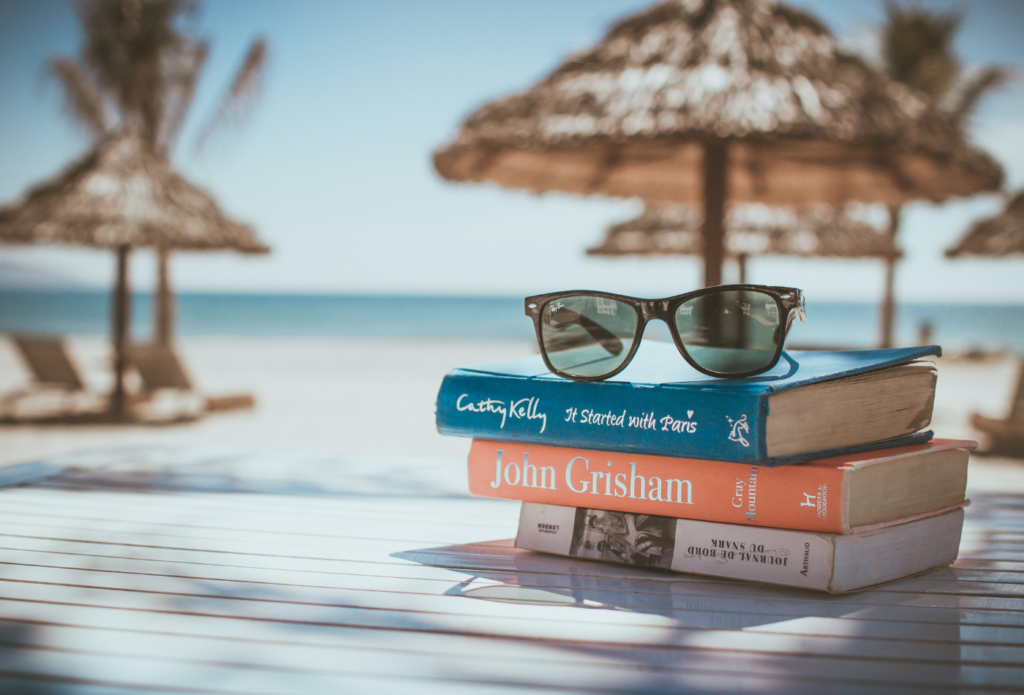
Some people travel the world and make a living out of it. Others write travel blogs to increase traffic to their brand’s website. Whatever reason leads you to share your experiences exploring the globe, here are our favourite travel article examples to inspire your writing.
Why you need a blog on your travel site
Travel content can take many different forms. From brochures that line the shelves of travel agents to website destination pages and social media posts, finding the right words is essential when selling destinations or experiences. People look forward to holidays; they work hard to save their pennies and annual leave to enjoy time in a different country or place.
‘Nothing will help your travel company stand out from the crowd like quality content’, says Search Engine Journal and good travel content includes copywriting that makes these once-in-a-lifetime trips seem worthwhile. It tells its readers exactly what to expect and why they will love it.
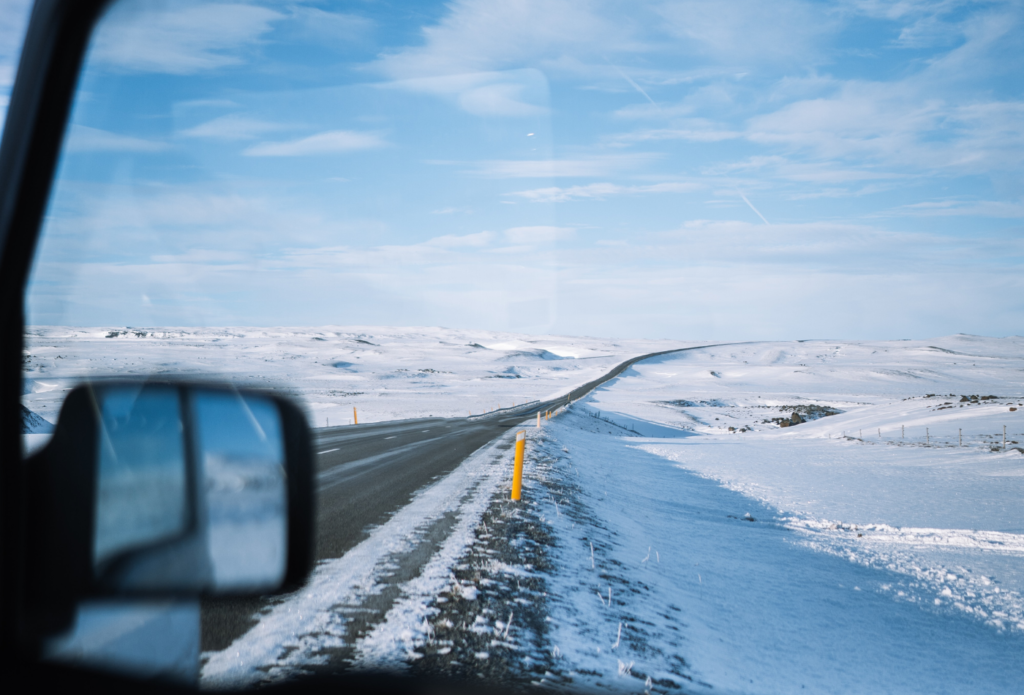
While over 80% of holidaymakers head to the web to start planning their holidays, 33% of travellers use travel blogs for travel advice. For travel agents, publishing the right travel content puts you at the advantage of increased website traffic. Businesses that blog experience up to twice as much traffic as those that don’t.
Gaining authority in search is a competitive sport. Google needs to trust that you can deliver exceptional content to users. A well-informed blog that provides extra information, a little entertainment, and click-worthy quotes or stats goes a long way. By writing SEO-optimised travel articles , you can get search engines on your side, increase your site’s authority, and, with the right words, guarantee more business.
Are you struggling to drive traffic to your travel website?
Our favourite travel article examples, thomas cook.
Thomas Cook uses their travel blog to share destination highlights, itineraries and places to visit in many of the locations where they host their package holidays. In this sample travel article, Thomas Cook writes about the ‘Top 5 hidden gems in the Algarve’. Here’s what they do well:
- It’s structured with subheadings, varying sentence lengths and short paragraphs.
- It offers ‘top tips’ segments to provide insider information tailored to its consumers.
- It knows its audience. Phrases such as ‘Instagrammable beach’ appeal to the young women likely to be considering booking a girl’s trip to Portugal.
- It takes you on a journey. Illustrative and colourful, the description of each attraction leads you on a path through the intricacies and experiences on offer.

L’Hotel, a well-known luxury hotel in Paris, use its blog to provide potential customers with travel blogs that cover niche topics, including history and the various influences of the hotel. In this blog, L’Hotel looks at the famous guests who have visited their hotel – and shares their favourite quotes from one of the most famous residents, Oscar Wilde, who stayed there many times. This is what this travel blog writing example does well:
- It provides a unique perspective while delving into the hotel’s history which is likely to appeal to tourists visiting Paris.
- It’s well-structured with clear headings and is organised logically to flow well.
- It’s written in a conversational, authentic tone that conveys the hotel’s values in an accessible and digestible format.
- It signposts a clear call-to-action that allows readers to share their favourite moments of the hotel with them, including reviews and photos.

Condé Nast Traveler
Condé Nast is well-known for their glossy, editorial-style articles that share the world’s most unique and wonderful experiences. They’re descriptive, they’re detailed, and they are excellent examples of storytelling. The writer delves into Egypt’s past through local stories in this travel article example. Here is what it does well:
- It zooms in on detailed snapshots of place and time, offering immersive accounts of time spent in Egypt.
- It’s personal. This article is written in the first-person narrative, and it contains insight into the writer’s individual experiences while advising on what to expect and how to handle certain situations.
- It’s written in-depth. Although long, the article doesn’t lack attention-seeking snippets of information.
- It features stunning imagery taken by the author, illustrating the picturesque locations described in the copy.

Hays Travel
Independent Travel Agent Hays Travel uses its blog to suggest holidays its audience may enjoy based on interests, the seasons and the attractions they offer. In this travel blog writing example, Hays Travel shares their top destinations to visit for the best Christmas markets. This is what they did well:
- It provides vivid and engaging descriptions of each Christmas market, giving readers a sense of what to expect in terms of atmosphere, activities, and unique offerings at each location.
- It covers a diverse range of Christmas markets in different European cities, catering to a wide audience with varying travel preferences.
- It offers practical information, such as the dates when the markets take place, unique attractions, and tips on what to do at each location. This information is helpful for travellers planning their trips and looking for recommendations.
- It adds a personal touch to the descriptions, such as mentioning specific dishes, traditions, and unique features of each market.

Would you like to rank for the best travel keywords?
The ultimate travel company.
The Ultimate Travel Company are an independent travel agent that uses its knowledge of destinations across the globe to create tailor-made holidays and tours. In this sample travel article, the brand shares insight into the time they spent discovering Estonia. Here is what they did well:
- It provides practical information such as how to navigate Tallinn on foot, the location of the markets and the best hotels to stay in.
- It shares recommendations for excursions and activities that can be enjoyed in Estonia based on the writer’s personal experiences. These are unbiased and given in detail.
- It’s descriptive and illustrative in its narrative while also being organised efficiently to flow smoothly.
- The blog supplies particular itineraries for travel in Estonia, including the option to pair the trip with a visit to Helsinki for a twin-city break.

easyJet – the nation’s favourite budget airline. Known for its super cheap flights across Europe, the brand shares frequent travel articles on its blog, the Traveller. In this particular travel article, easyJet shares its take on the most beautiful islands in Europe. This is what they did well:
- The highly immersive article uses great adjectives to help readers visualise the place. Our favourites include notebook scribbling, tottering, tumbling, and svelte.
- It’s well-structured, using sub-headings for each of the islands it discusses, and ‘must-see’ pull-out quotes add a little intrigue.
- Call to action is used well in each section, allowing readers to head straight to the booking page for package holidays and flights.
- It’s long and in-depth. It’s not a listicle confined to 500 words; this blog offers plenty of holiday recommendations to suit a variety of tastes.

Avalon Waterways
Avalon Waterways provide river cruises on some of Europe’s most famous rivers. Sailing through multiple countries at a time or docking in one particular spot for the duration of a holiday, holidaymakers can explore sites and relax in great company. With many options, their blog shares details of various trips and itineraries with its readers to help them choose. This is what we can learn from this travel article example:
- It’s practical. This blog offers in-depth information on what to expect on one of their cruise routes on the Rhine.
- It highlights attractions and sites guests can enjoy on their travels.
- It used vivid language to describe the routes taken, crafting illustrative imagery in readers’ heads.
- It includes customer testimonials and case studies to share their experiences on the boat.

Radisson Hotels
This European hotel chain uses its blog to sell its hotels’ destinations. In this particular travel article example, Radisson Hotels relies on sensory storytelling to share their take on a holiday in Venice. This is what they did well:
- It puts their hotel in the front seat. Evolving the story around a stay at their canal-side location shows readers how they can craft the most memorable stay.
- It uses sensory words to immerse the reader in a detailed experience, from sharing their favourite food experiences to attractions that will ignite sound, taste and smell.
- It includes valuable links to book the attractions it mentions and provides readers with practical advice, including the best times to visit.

Be My Travel Muse
A slightly different kind of travel blog to many others on this list, Be My Travel Muse is an independent blog that reviews and shares tips, advice and stories from travelling. In this blog post, the writer shares their experiences in Paris as a solo traveller. Here is what this travel blog post example does well:
- It provides actionable advice based on personal experiences to help keep solo travellers safe. It doesn’t assume that you know anything, so it’s easy to understand and digest with clear explanations.
- It offers a fresh viewpoint on a city commonly dubbed the ‘city of love’.
- It’s conversational and personal. The writing style makes it feel like you’re receiving advice from a friend.
- It is accompanied by striking original imagery that helps readers visualise what is being explained or explored in the text.

Great Rail Journeys
Great Rail Journeys is a train travel company spanning mainland Europe. Known for the Glacier Express and other picturesque trips, they’re a one-stop-shop for booking holidays by train. The brand shares its favourite sustainable winter holidays in this travel blog post example. Here is what they do well:
- They write with their brand values in mind. Great Rail Journeys champions greener travel, and this blog has sustainability at its core.
- It goes beyond their product offering and shows readers how to embody these values in every aspect of their holiday planning.
- It offers unique ideas to inspire customers’ holiday itineraries, from local cuisines to try, to initiatives to support while travelling.

Our top tips for good travel writing
Scrolling these travel blog examples should give you an idea of what makes a decent blog. But for some fairly defined advice, here are our top tips for good travel writing.
Find out about our travel copywriting service »
Get personal
Your travel copywriting needs to be personal. The words you write hold a lot of weight and need to form an intimate conversation with your reader. When read by your target customers, they need to feel like that travel blog was meant for them. If you strike the right chord, it’s a lot more persuasive.
“There is your audience. There is the language. There are the words that they use.” – Eugene Schwartz
How to write conversational copy?
- Use your customer’s words, not industry jargon.
- Involve the reader in your copy by breaking the fourth wall.
- Don’t be afraid to break grammar rules.
- And you can start sentences with conjunctions
- Load up on personal pronouns.
- Don’t try too hard to impress.
A blog that does this well? Read this travel article example by Ryanair.
Need a helping hand from the travel content experts?
Use high-quality visuals.
Great photos seal the deal when it comes to writing travel content. Without them, you’ll struggle to keep readers engaged and your blog traffic will find it hard to get off the ground. Include striking imagery in your blog that reels in your reader and compliments the words on the page. Check you have permission to use the images you source or opt for copyright-free imagery from sites like Unsplash.
A blog that does this well? Read this example of a travel article by Nomadic Matt.

Take your readers on a journey
According to the Brand Shop , 55% of consumers are more likely to remember a story than a list of facts, and your travel blog should have a clear start, middle and end. Picture it like a gentle walk through a picturesque valley; you want your customers to feel like they’re walking through the vibrant location you describe in your blog. Hold their hand through areas that already flow into each other in the physical world and make them the main characters in the story. Tell them what they could do in their travels and why they’d enjoy it.
“What matters isn’t storytelling. What matters is telling a true story well.” – Ann Handley
Storytelling best practices:
- Connect with the right audience
- Align the narrative with your brand values
- Be authentic and relatable.
- Grab their attention with striking imagery
- Provoke action at the end of the story
A blog that does this well? Read this travel article example by Wanderlust.
Immerse your readers in detail
The detail in your writing is essential. But we don’t mean explaining everything. We mean picking out details to make your story much more memorable. By being unique, and descriptive and expressing your brand’s personality in your writing, you’re offering readers something they can’t get anywhere else. And that’s important when travel blogs are available to browse in abundance online. Find ways to stand out in your writing, from your tone to the mental imagery you create. Think back to an advert that sticks in your head – for example, Go Compare. It was unusual, but it stuck out and because of that, the money comparison site is front of mind when people need that service.
A blog that does this well? Read this travel article example by Secret Escapes.
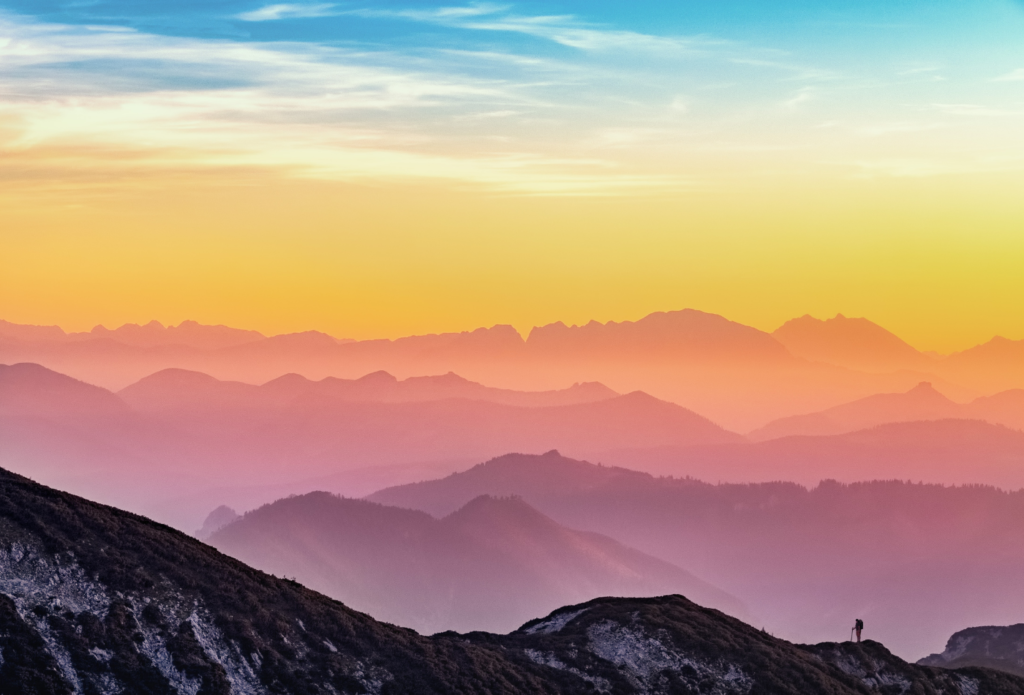
Keep it practical
“All the elements in an advertisement are primarily designed to do one thing and one thing only: get you to read the first sentence of the copy.” – Joseph Sugarman
The practicalities of blog writing are like the crucial pieces of furniture that make a place a home. Without them, it’s an uncomfortable experience you exit quickly and without further action. Although descriptive, your blog needs to provide customers with helpful information and details that will actually help them in their holiday planning. You can include:
- Practical itinerary ideas and attractions to see while visiting
- Any information that customers may need to know to keep themselves safe
- Important advice on travel, eating out and places to stay
- A clear call to action at the end of each section or page
A blog that does this well? Read this travel article example by Emirates Holidays.
Blog writing is a task to get right. Even when you’re equipped with all the tips needed to write well, finding great words doesn’t come naturally for everyone. And that’s even before you consider technical details like SEO. That’s where we come in. We’ve been writing great travel content for some of your favourite brands since before the iPhone. Our team are passionate about travel, and we know how to craft excellent copy that will resonate with your audience. The right words can sell a destination, and we’d love to help your travel blog take off. Get in touch. We can help.
Melissa Hawkins
For over five years, Melissa has worked with a variety of lifestyle brands to create compelling campaigns across multiple content formats. She has a particular interest in effective storytelling techniques and enjoys experimenting with tools and ideas to engage users with effective digital content.
Leave a Reply Cancel reply
Your email address will not be published. Required fields are marked *

- Botswana Botswana Funny Travel Guide, Destination Tips, News, Advice, Information. Travel Blog Website includes Silly Photos, Videos, Weird Unusual Humor, WTF and Stories
- Egypt Egypt Funny Travel Guide, Destination Tips, News, Advice, Information. Travel Blog Website includes Silly Photos, Videos, Weird Unusual Humor, WTF and Stories
- Kenya Kenya Funny Travel Guide, Destination Tips, News, Advice, Information. Travel Blog Website includes Silly Photos, Videos, Weird Unusual Humor, WTF and Stories
- Malawi Malawi Funny Travel Guide, Destination Tips, News, Advice, Information. Travel Blog Website includes Silly Photos, Videos, Weird Unusual Humor, WTF and Stories
- Mauritius Mauritius Funny Travel Guide, Destination Tips, News, Advice, Information. Travel Blog Website includes Silly Photos, Videos, Weird Unusual Humor, WTF and Stories
- Morocco Morocco Funny Travel Guide, Destination Tips, News, Advice, Information. Travel Blog Website includes Silly Photos, Videos, Weird Unusual Humor, WTF and Stories
- Mozambique Mozambique Funny Travel Guide, Destination Tips, News, Advice, Information. Travel Blog Website includes Silly Photos, Videos, Weird Unusual Humor, WTF and Stories
- Namibia Namibia Funny Travel Guide, Destination Tips, News, Advice, Information. Travel Blog Website includes Silly Photos, Videos, Weird Unusual Humor, WTF and Stories
- Nigeria Nigeria Funny Travel Guide, Destination Tips, News, Advice, Information. Travel Blog Website includes Silly Photos, Videos, Weird Unusual Humor, WTF and Stories – See more at: http://www.thetraveltart.com/wp-admin/edit-tags.php?taxonomy=category#sthash.vNspdaTh.dpuf
- South Africa South Africa Funny Travel Guide, Destination Tips, News, Advice, Information. Travel Blog Website includes Silly Photos, Videos, Weird Unusual Humor, WTF and Stories
- Sudan Sudan Funny Travel Guide, Destination Tips, News, Advice, Information. Travel Blog Website includes Silly Photos, Videos, Weird Unusual Humor, WTF and Stories
- Tanzania Tanzania Funny Travel Guide, Destination Tips, News, Advice, Information. Travel Blog Website includes Silly Photos, Videos, Weird Unusual Humor, WTF and Stories
- Zambia Zambia Funny Travel Guide, Destination Tips, News, Advice, Information. Travel Blog Website includes Silly Photos, Videos, Weird Unusual Humor, WTF and Stories
- Zimbabwe Zimbabwe Funny Travel Guide, Destination Tips, News, Advice, Information. Travel Blog Website includes Silly Photos, Videos, Weird Unusual Humor, WTF and Stories
- Barbados Barbados Funny Travel Guide, Destination Tips, News, Advice, Information. Travel Blog Website includes Silly Photos, Videos, Weird Unusual Humor, WTF and Stories
- Canada Canada Funny Travel Guide, Destination Tips, News, Advice, Information. Travel Blog Website includes Silly Photos, Videos, Weird Unusual Humor, WTF and Stories
- Costa Rica Costa Rica Funny Travel Guide, Destination Tips, News, Advice, Information. Travel Blog Website includes Silly Photos, Videos, Weird Unusual Humor, WTF and Stories
- Guatemala Guatemala Funny Travel Guide, Destination Tips, News, Advice, Information. Travel Blog Website includes Silly Photos, Videos, Weird Unusual Humor, WTF and Stories
- Mexico Mexico Funny Travel Guide, Destination Tips, News, Advice, Information. Travel Blog Website includes Silly Photos, Videos, Weird Unusual Humor, WTF and Stories
- Nicaragua Nicaragua Funny Travel Guide, Destination Tips, News, Advice, Information. Travel Blog Website includes Silly Photos, Videos, Weird Unusual Humor, WTF and Stories
- United States United States Funny Travel Guide, Destination Tips, News, Advice, Information. Travel Blog Website includes Silly Photos, Videos, Weird Unusual Humor, WTF and Stories
- Argentina Argentina Funny Travel Guide, Destination Tips, News, Advice, Information. Travel Blog Website includes Silly Photos, Videos, Weird Unusual Humor, WTF and Stories
- Bolivia Bolivia Funny Travel Guide, Destination Tips, News, Advice, Information. Travel Blog Website includes Silly Photos, Videos, Weird Unusual Humor, WTF and Stories
- Brazil Brazil Funny Travel Guide, Destination Tips, News, Advice, Information. Travel Blog Website includes Silly Photos, Videos, Weird Unusual Humor, WTF and Stories
- Chile Chile Funny Travel Guide, Destination Tips, News, Advice, Information. Travel Blog Website includes Silly Photos, Videos, Weird Unusual Humor, WTF and Stories
- Colombia Colombia Funny Travel Guide, Destination Tips, News, Advice, Information. Travel Blog Website includes Silly Photos, Videos, Weird Unusual Humor, WTF and Stories
- Ecuador Ecuador Funny Travel Guide, Destination Tips, News, Advice, Information. Travel Blog Website includes Silly Photos, Videos, Weird Unusual Humor, WTF and Stories
- Peru Peru Funny Travel Guide, Destination Tips, News, Advice, Information. Travel Blog Website includes Silly Photos, Videos, Weird Unusual Humor, WTF and Stories
- Uruguay Uruguay Funny Travel Guide, Destination Tips, News, Advice, Information. Travel Blog Website includes Silly Photos, Videos, Weird Unusual Humor, WTF and Stories
- Antarctica Antarctica Funny Travel Guide, Destination Tips, News, Advice, Information. Travel Blog Website includes Silly Photos, Videos, Weird Unusual Humor, WTF and Stories
- Afghanistan Afghanistan Funny Travel Guide, Destination Tips, News, Advice, Information. Travel Blog Website includes Silly Photos, Videos, Weird Unusual Humor, WTF and Stories
- Bahrain Bahrain Funny Travel Guide, Destination Tips, News, Advice, Information. Travel Blog Website includes Silly Photos, Videos, Weird Unusual Humor, WTF and Stories
- Bangladesh Bangladesh Funny Travel Guide, Destination Tips, News, Advice, Information. Travel Blog Website includes Silly Photos, Videos, Weird Unusual Humor, WTF and Stories
- Cambodia Cambodia Funny Travel Guide, Destination Tips, News, Advice, Information. Travel Blog Website includes Silly Photos, Videos, Weird Unusual Humor, WTF and Stories
- China China Funny Travel Guide, Destination Tips, News, Advice, Information. Travel Blog Website includes Silly Photos, Videos, Weird Unusual Humor, WTF and Stories
- India India Funny Travel Guide, Destination Tips, News, Advice, Information. Travel Blog Website includes Silly Photos, Videos, Weird Unusual Humor, WTF and Stories
- Indonesia Indonesia Funny Travel Guide, Destination Tips, News, Advice, Information. Travel Blog Website includes Silly Photos, Videos, Weird Unusual Humor, WTF and Stories
- Israel Israel Funny Travel Guide, Destination Tips, News, Advice, Information. Travel Blog Website includes Silly Photos, Videos, Weird Unusual Humor, WTF and Stories
- Japan Japan Funny Travel Guide, Destination Tips, News, Advice, Information. Travel Blog Website includes Silly Photos, Videos, Weird Unusual Humor, WTF and Stories
- Jordan Jordan Funny Travel Guide, Destination Tips, News, Advice, Information. Travel Blog Website includes Silly Photos, Videos, Weird Unusual Humor, WTF and Stories
- Kazakhstan Kazakhstan Funny Travel Guide, Destination Tips, News, Advice, Information. Travel Blog Website includes Silly Photos, Videos, Weird Unusual Humor, WTF and Stories
- Laos Laos Funny Travel Guide, Destination Tips, News, Advice, Information. Travel Blog Website includes Silly Photos, Videos, Weird Unusual Humor, WTF and Stories
- Malaysia Malaysia Funny Travel Guide, Destination Tips, News, Advice, Information. Travel Blog Website includes Silly Photos, Videos, Weird Unusual Humor, WTF and Stories
- Myanmar Myanmar Funny Travel Guide, Destination Tips, News, Advice, Information. Travel Blog Website includes Silly Photos, Videos, Weird Unusual Humor, WTF and Stories
- Philippines Philippines Funny Travel Guide, Destination Tips, News, Advice, Information. Travel Blog Website includes Silly Photos, Videos, Weird Unusual Humor, WTF and Stories
- Singapore Singapore Funny Travel Guide, Destination Tips, News, Advice, Information. Travel Blog Website includes Silly Photos, Videos, Weird Unusual Humor, WTF and Stories
- South Korea South Korea Funny Travel Guide, Destination Tips, News, Advice, Information. Travel Blog Website includes Silly Photos, Videos, Weird Unusual Humor, WTF and Stories
- United Arab Emirates United Arab Emirates Funny Travel Guide, Destination Tips, News, Advice, Information. Travel Blog Website includes Silly Photos, Videos, Weird Unusual Humor, WTF and Stories
- Taiwan Taiwan Funny Travel Guide, Destination Tips, News, Advice, Information. Travel Blog Website includes Silly Photos, Videos, Weird Unusual Humor, WTF and Stories
- Thailand Thailand Funny Travel Guide, Destination Tips, News, Advice, Information. Travel Blog Website includes Silly Photos, Videos, Weird Unusual Humor, WTF and Stories
- Turkey Turkey Funny Travel Guide, Destination Tips, News, Advice, Information. Travel Blog Website includes Silly Photos, Videos, Weird Unusual Humor, WTF and Stories
- Vietnam Vietnam Funny Travel Guide, Destination Tips, News, Advice, Information. Travel Blog Website includes Silly Photos, Videos, Weird Unusual Humor, WTF and Stories
- England England Funny Travel Guide, Destination Tips, News, Advice, Information. Travel Blog Website includes Silly Photos, Videos, Weird Unusual Humor, WTF and Stories
- Finland Finland Funny Travel Guide, Destination Tips, News, Advice, Information. Travel Blog Website includes Silly Photos, Videos, Weird Unusual Humor, WTF and Stories
- France France Funny Travel Guide, Destination Tips, News, Advice, Information. Travel Blog Website includes Silly Photos, Videos, Weird Unusual Humor, WTF and Stories
- Germany Germany Funny Travel Guide, Destination Tips, News, Advice, Information. Travel Blog Website includes Silly Photos, Videos, Weird Unusual Humor, WTF and Stories
- Greece Greece Funny Travel Guide, Destination Tips, News, Advice, Information. Travel Blog Website includes Silly Photos, Videos, Weird Unusual Humor, WTF and Stories
- Hungary Hungary Funny Travel Guide, Destination Tips, News, Advice, Information. Travel Blog Website includes Silly Photos, Videos, Weird Unusual Humor, WTF and Stories
- Iceland Iceland Funny Travel Guide, Destination Tips, News, Advice, Information. Travel Blog Website includes Silly Photos, Videos, Weird Unusual Humor, WTF and Stories
- Ireland Ireland Funny Travel Guide, Destination Tips, News, Advice, Information. Travel Blog Website includes Silly Photos, Videos, Weird Unusual Humor, WTF and Stories
- Italy Italy Funny Travel Guide, Destination Tips, News, Advice, Information. Travel Blog Website includes Silly Photos, Videos, Weird Unusual Humor, WTF and Stories
- Kosovo Kosovo Funny Travel Guide, Destination Tips, News, Advice, Information. Travel Blog Website includes Silly Photos, Videos, Weird Unusual Humor, WTF and Stories
- Netherlands Netherlands Funny Travel Guide, Destination Tips, News, Advice, Information. Travel Blog Website includes Silly Photos, Videos, Weird Unusual Humor, WTF and Stories
- Norway Norway Funny Travel Guide, Destination Tips, News, Advice, Information. Travel Blog Website includes Silly Photos, Videos, Weird Unusual Humor, WTF and Stories
- Poland Poland Funny Travel Guide, Destination Tips, News, Advice, Information. Travel Blog Website includes Silly Photos, Videos, Weird Unusual Humor, WTF and Stories
- Portugal Portugal Funny Travel Guide, Destination Tips, News, Advice, Information. Travel Blog Website includes Silly Photos, Videos, Weird Unusual Humor, WTF and Stories
- Russia Russia Funny Travel Guide, Destination Tips, News, Advice, Information. Travel Blog Website includes Silly Photos, Videos, Weird Unusual Humor, WTF and Stories
- Scotland Scotland Funny Travel Guide, Destination Tips, News, Advice, Information. Travel Blog Website includes Silly Photos, Videos, Weird Unusual Humor, WTF and Stories
- Spain Spain Funny Travel Guide, Destination Tips, News, Advice, Information. Travel Blog Website includes Silly Photos, Videos, Weird Unusual Humor, WTF and Stories
- Sweden Sweden Funny Travel Guide, Destination Tips, News, Advice, Information. Travel Blog Website includes Silly Photos, Videos, Weird Unusual Humor, WTF and Stories
- Switzerland Switzerland Funny Travel Guide, Destination Tips, News, Advice, Information. Travel Blog Website includes Silly Photos, Videos, Weird Unusual Humor, WTF and Stories
- Wales Wales Funny Travel Guide, Destination Tips, News, Advice, Information. Travel Blog Website includes Silly Photos, Videos, Weird Unusual Humor, WTF and Stories
- Australia Australia Funny Travel Guide, Destination Tips, News, Advice, Information. Travel Blog Website includes Silly Photos, Videos, Weird Unusual Humor, WTF and Stories
- Fiji Fiji Funny Travel Guide, Destination Tips, News, Advice, Information. Travel Blog Website includes Silly Photos, Videos, Weird Unusual Humor, WTF and Stories
- Marshall Islands Marshall Islands Funny Travel Guide, Destination Tips, News, Advice, Information. Travel Blog Website includes Silly Photos, Videos, Weird Unusual Humor, WTF and Stories
- New Zealand New Zealand Funny Travel Guide, Destination Tips, News, Advice, Information. Travel Blog Website includes Silly Photos, Videos, Weird Unusual Humor, WTF and Stories
- Samoa Samoa Funny Travel Guide, Destination Tips, News, Advice, Information. Travel Blog Website includes Silly Photos, Videos, Weird Unusual Humor, WTF and Stories
- Solomon Islands Solomon Islands Funny Travel Guide, Destination Tips, News, Advice, Information. Travel Blog Website includes Silly Photos, Videos, Weird Unusual Humor, WTF and Stories
- Vanuatu Vanuatu Funny Travel Guide, Destination Tips, News, Advice, Information. Travel Blog Website includes Silly Photos, Videos, Weird Unusual Humor, WTF and Stories
- Gap Year Gap Year Funny Travel Guide, Destination Tips, News, Advice, Information. Travel Blog Website includes Silly Photos, Videos, Weird Unusual Humor, WTF and Stories
- Party Tips Party Tips Funny Travel Guide, Destination Tips, News, Advice, Information. Travel Blog Website includes Silly Photos, Videos, Weird Unusual Humor, WTF and Stories
- Interviews Travel Interviews on Funny Destination Tips, News, Advice, Information and Stories.
- Luxury Travel Luxury Travel Funny Guide, Destination Tips, News, Advice, Information. Travel Blog Website includes Silly Photos, Videos, Weird Unusual Humor, WTF and Stories
- Travel Books Travel Books Funny Guides, Destination Tips, News, Advice, Information. Travel Blog Website includes Silly Photos, Videos, Weird Unusual Humor, WTF and Stories
- Travel Clothes The Travel Clothes that you could possibly wear overseas!
- Travel Insurance Travel Insurance Funny Guide, Destination Tips, News, Advice, Information. Travel Blog Website includes Silly Photos, Videos, Weird Unusual Humor, WTF and Stories
- Travel Jobs Travel Jobs Funny Guide, Destination Tips, News, Advice, Information. Travel Blog Website includes Silly Photos, Videos, Weird Unusual Humor, WTF and Stories
- Air Travel Air Travel Funny Travel Guide, Destination Tips, News, Advice, Information. Travel Blog Website includes Silly Photos, Videos, Weird Unusual Humor, WTF and Stories
- Cruising Cruising Funny Guide, Destination Tips, News, Advice, Information. Travel Blog Website includes Silly Photos, Videos, Weird Unusual Humor, WTF and Stories
- Space Travel Outer Space Funny Travel Guide, Destination Tips, News, Advice, Information. Travel Blog Website includes Silly Photos, Videos, Weird Unusual Humor, WTF and Stories
- Travel Gadgets Travel Gadgets Funny Guide, Destination Tips, News, Advice, Information. Travel Blog Website includes Silly Photos, Videos, Weird Unusual Humor, WTF and Stories
- Travel Photography Travel Photography Funny Guide, Destination Tips, News, Advice, Information. Travel Blog Website includes Silly Photos, Videos, Weird Unusual Humor, WTF and Stories
- Travel Movies Travel Movies Funny Guide, Destination Tips, News, Advice, Information. Travel Blog Website includes Silly Photos, Videos, Weird Unusual Humor, WTF and Stories
- Travel Podcasts Travel Podcasts Funny Guide, Destination Tips, News, Advice, Information. Travel Blog Website includes Silly Photos, Videos, Weird Unusual Humor, WTF and Stories
- Travel Satire Travel Satire Funny Guide, Destination Tips, News, Advice, Information. Travel Blog Website includes Silly Photos, Videos, Weird Unusual Humor, WTF and Stories
- Travel Songs Travel Songs Funny Guide, Destination Tips, News, Advice, Information. Travel Blog Website includes Silly Photos, Videos, Weird Unusual Humor, WTF and Stories
- Travel TV Travel TV Funny Guide, Destination Tips, News, Advice, Information. Travel Blog Website includes Silly Photos, Videos, Weird Unusual Humor, WTF and Stories
- Travel Video Travel Video Funny Travel Guide, Destination Tips, News, Advice, Information. Travel Blog Website includes Silly Photos, Videos, Weird Unusual Humor, WTF and Stories
- Travel Websites Travel Websites Funny Guide, Destination Tips, News, Advice, Information. Travel Blog includes Silly Photos, Videos, Weird Unusual Humor, WTF and Stories
- Travel Writing Examples
- Press Trips, Famils & Promotions
- Digital Content Creator & Marketer, SEO & Social Media Specialist
- Surviving Cancer
Travel Writing Examples!
Anthony bianco – travel writing examples.
Hey, I’m a versatile kind of chap! I write in all sorts of styles and formats, both online and in print. I’ve listed a few travel writing examples on this page to give you an idea!
I really enjoy travel writing and have undertaken a number of press trips and famils , blogger trips and travel influencer campaigns .
Some of the places where my work has appeared has included a number of publications and industries, including:
Airline In-flight Magazines

Travel Insurance Content

Thought Leadership

Roadside Assistance

Travel Tips

Visa Information

I have a lot more where that came from.
I also have online content and SEO skills .
Give me a yell and contact me for more information!
8 mins read
10 Travel Blog Writing Examples For Inspiration
Planning to be a travel writer? Don't start without looking at these 10 examples of exceptional travel writing! Plus, here's why you need a travel writing portfolio.

Shreya Bose
Written by Shreya Bose , edited by Protim Bhaumik , reviewed by Eric Hauch .
23. Feb 2023 , updated 30. Jun 2023

Nothing opens our minds quite like travel, does it? However, not all of us are lucky enough to travel more than once or twice a year (if that) while juggling a 9-5, school/housework, kids/pets, and everything else in between.
But there are certain people who actually choose to live a life of travel. No, I am not talking about trust fund babies but about the travel blogger.
Giving up the secure desk job to pursue travel stories, writing them, and getting paid is not the life for everybody. But I won't be lying if I say quite a few of us secretly (or not-so-secretly) wish we could live that life.
If you're thinking of embarking on a "job" that takes you around the world, and you think you can write travel blogs that delight and educate every reader, this article is for you. To get started, have a look at these 10 travel blog writing examples. The individuals discussed in this blog post are living the life you want, and exploring their work is a good way to start your travel writing career before building your unique voice and brand.
10 Amazing travel bloggers & their work (to inspire you to write your first blog)
Elizabeth chorney-booth.
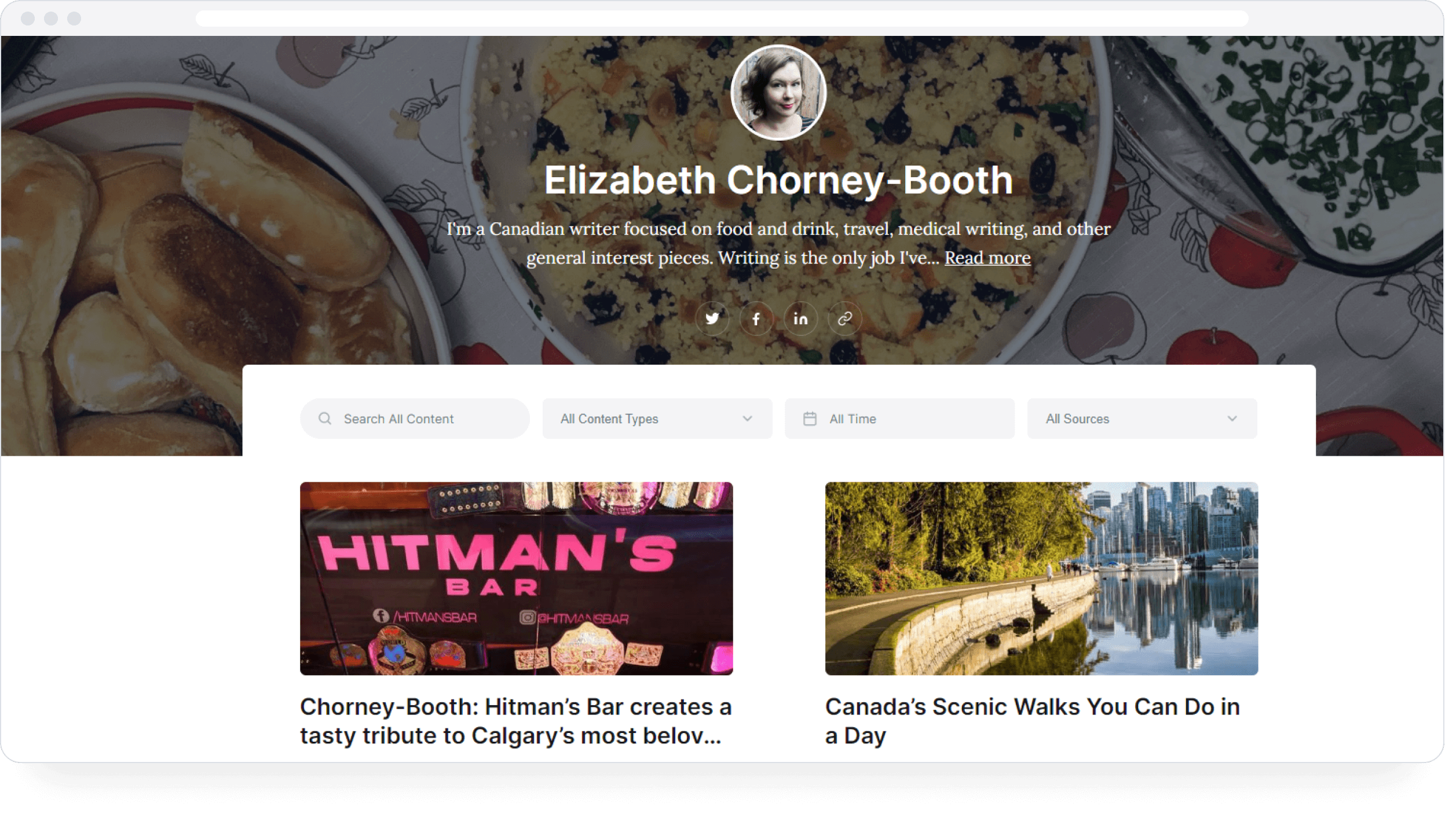
Elizabeth Chorney-Booth is a Canadian writer exploring food, drink, travel, medical writing, and general interest topics. She is the weekly restaurant columnist for the Calgary Herald, a regular columnist on CBC Radio, and a weekly contributor to Canada.com 's travel section. Her work has appeared in multiple publications like the Globe and Mail, Culinaire, Bold Travel, Savour, Leap, OnBoard, and more.
Gwendolyn Richards

Gwendolyn Richards is a Calgary-based food and travel writer & photographer who loves patent shoes, bourbon, and burgers. She has also written and published a cookbook named Pucker. If you're looking to have travel adventures (of the stomach especially) in and around Calgary, her portfolio and blog are must-reads.
Jamie Carter
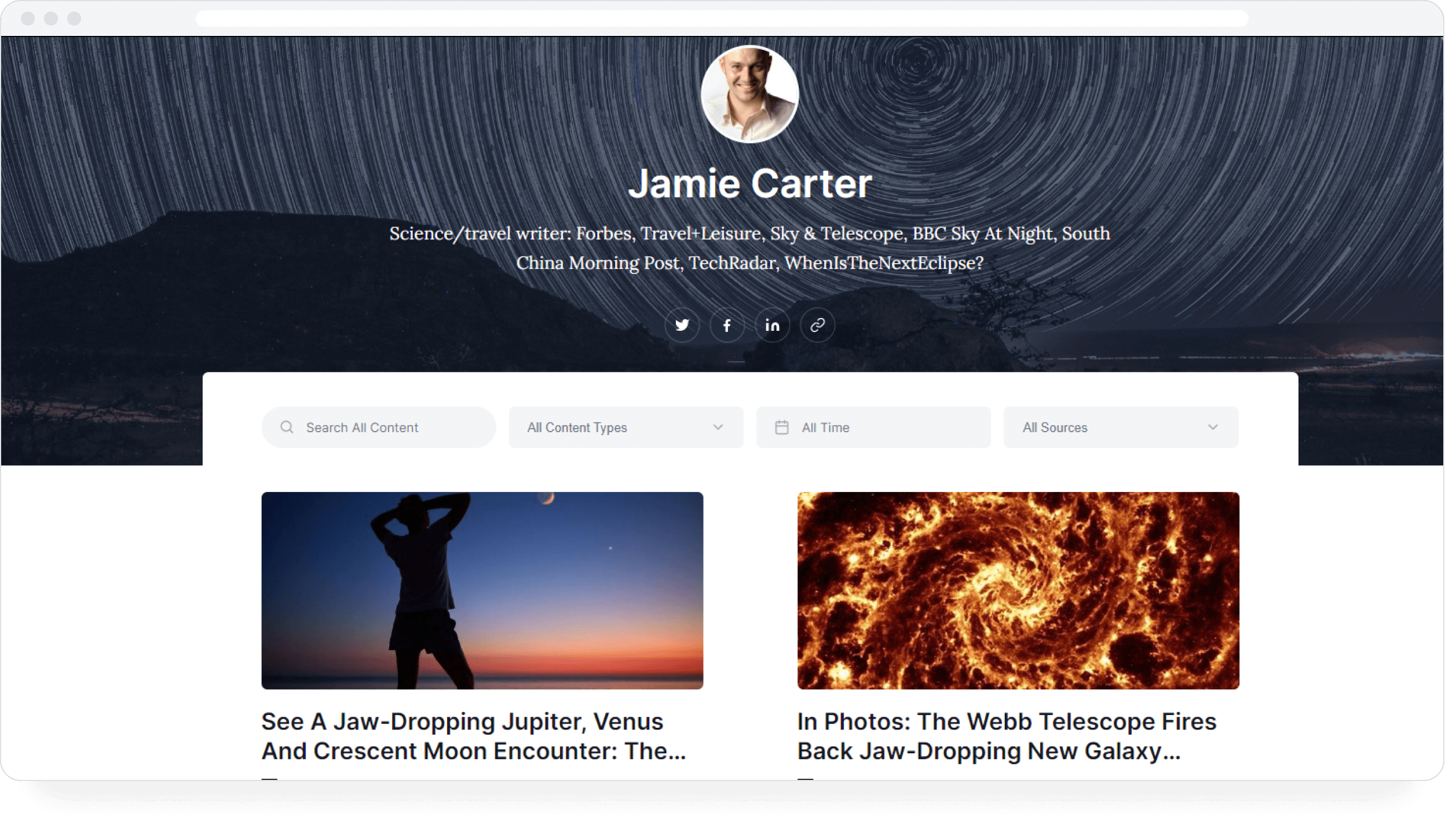
Jamie Carter combines travel blogging with writing about science, and his portfolio and blog showcase the coolest, most eclectic collection of articles and images you'll come across. His work has been published in Forbes, Travel+Leisure, Sky & Telescope, BBC Sky At Night, South China Morning Post, TechRadar, and WhenIsTheNextEclipse?
Jamie's blog: jamieacarter.com
Louise Goldsbury
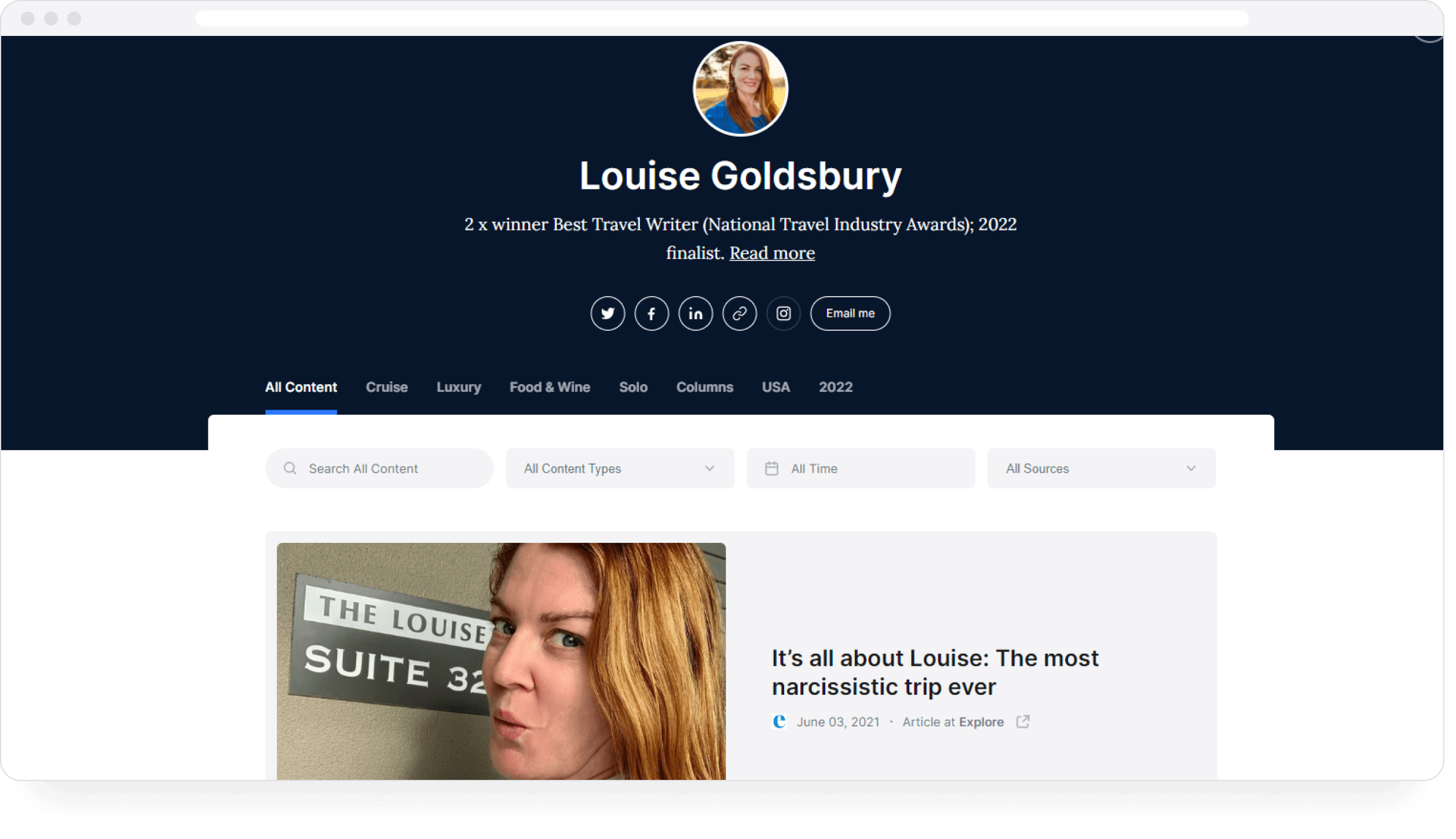
Louise Goldsbury runs a famous travel blog that has won her the Best Travel Writer award at the National Travel Industry Awards twice. She has also been a 2022 finalist for the same. She writes as a freelance for The Australian, Escape, and Explore. She is also the Editor-at-large at Cruise & Travel magazine (Big Splash Media)
Louise's blog: louisegoldsbury.substack.com

Gina Rich is an award-winning freelance writer exploring topics around parenting, health, travel, and the natural world. She's also quite a coffee enthusiast, as her own travel blog will showcase.
Gina's blog: lovehopeandcoffee.com
Vicki Reeve

Vicki Reeve is a Cornwall/London-based freelance writer & editor who works on Departures International, Centurion, Compendium, and NetJets magazines, Vogue, Art Fund's Art Quarterly magazine, Elephant magazine, and Wylde (among others), and writes about Cornwall for the Mail on Sunday's travel section.
She is also a senior editor at Ultratravel magazine.
Salt in our Hair

Run by Hannah and Nick, two travel bloggers from the Netherlands, this award-winning blog has it all — travel stories, travel photography, travel tips, and even information for solo travelers.
By detailing their own travel adventures, Hannah and Nick provide helpful information and fun-laden itineraries for anyone looking to jet-set around the world.
This is a great travel blog example, encompassing everything from an adventure travel blog to laid-back travel ideas.
Hannah & Nick's blog: saltinourhair.com
The Blonde Abroad
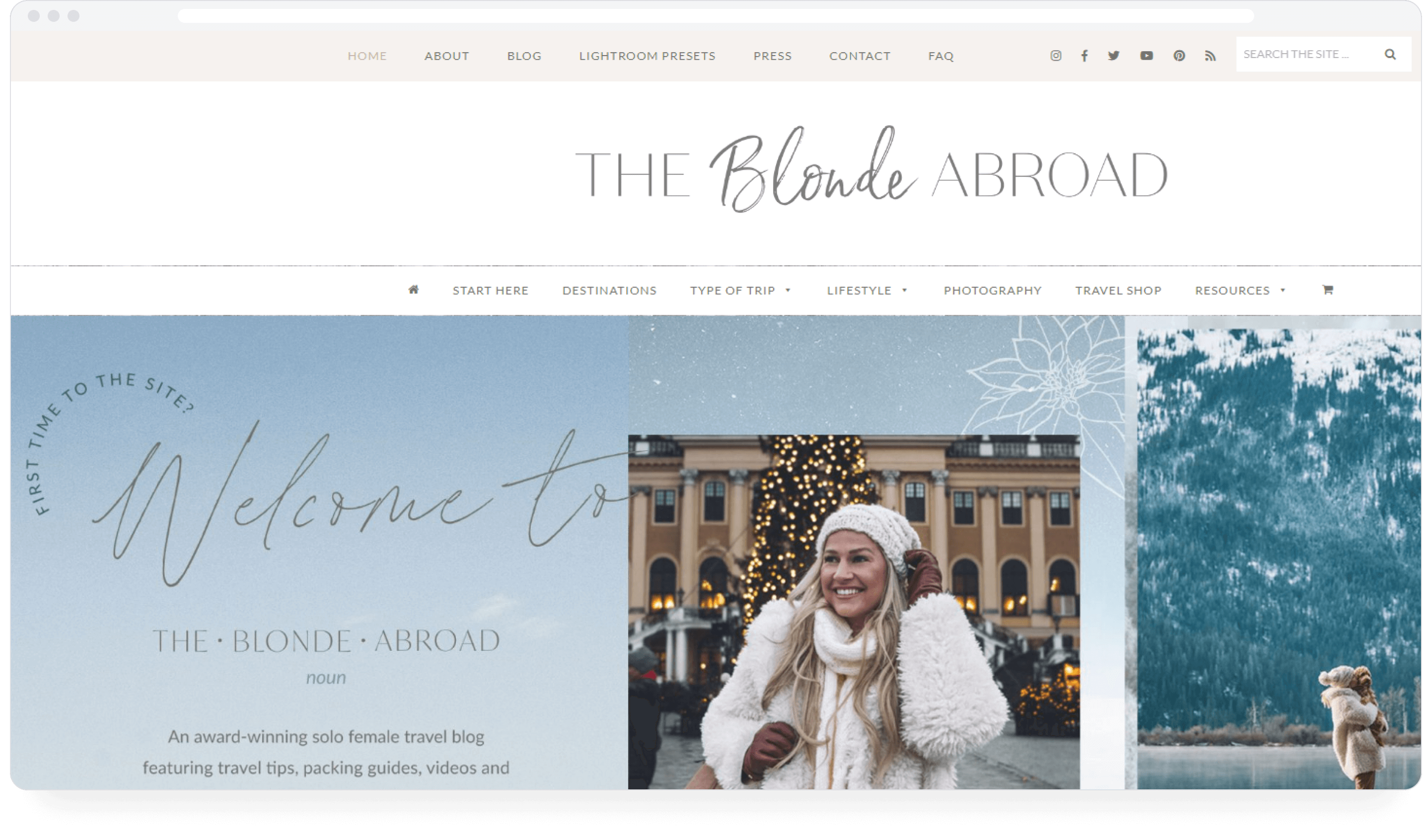
Kiki has been traveling solo for years and collecting her experiences in her travel blog. She has visited over 70 countries and collates information specifically for solo female travelers. Of course, she also covers other categories like adventure travel, budget travel, couple travel, etc. But it's her tips for women traveling alone that really get her blog to stand out.
Kiki's blog: theblondeabroad.com
The Travel Book

Is it possible to travel while being environmentally conscious? The Travel Book says Yes!
It doesn't matter what your travel destination is, this blog will tell you how to have amazing trips without leaving too much of a negative impact on the ecology. This is a great resource if you're looking to travel internationally since those long plane rides are just the start of expanding our carbon footprint. Tips from Karoline and Rasmus (who run the blog) help you counteract that, without missing out on the most beautiful places on this planet.
Karoline and Rasmus' blog: thetravelbook.world
Be My Travel Muse
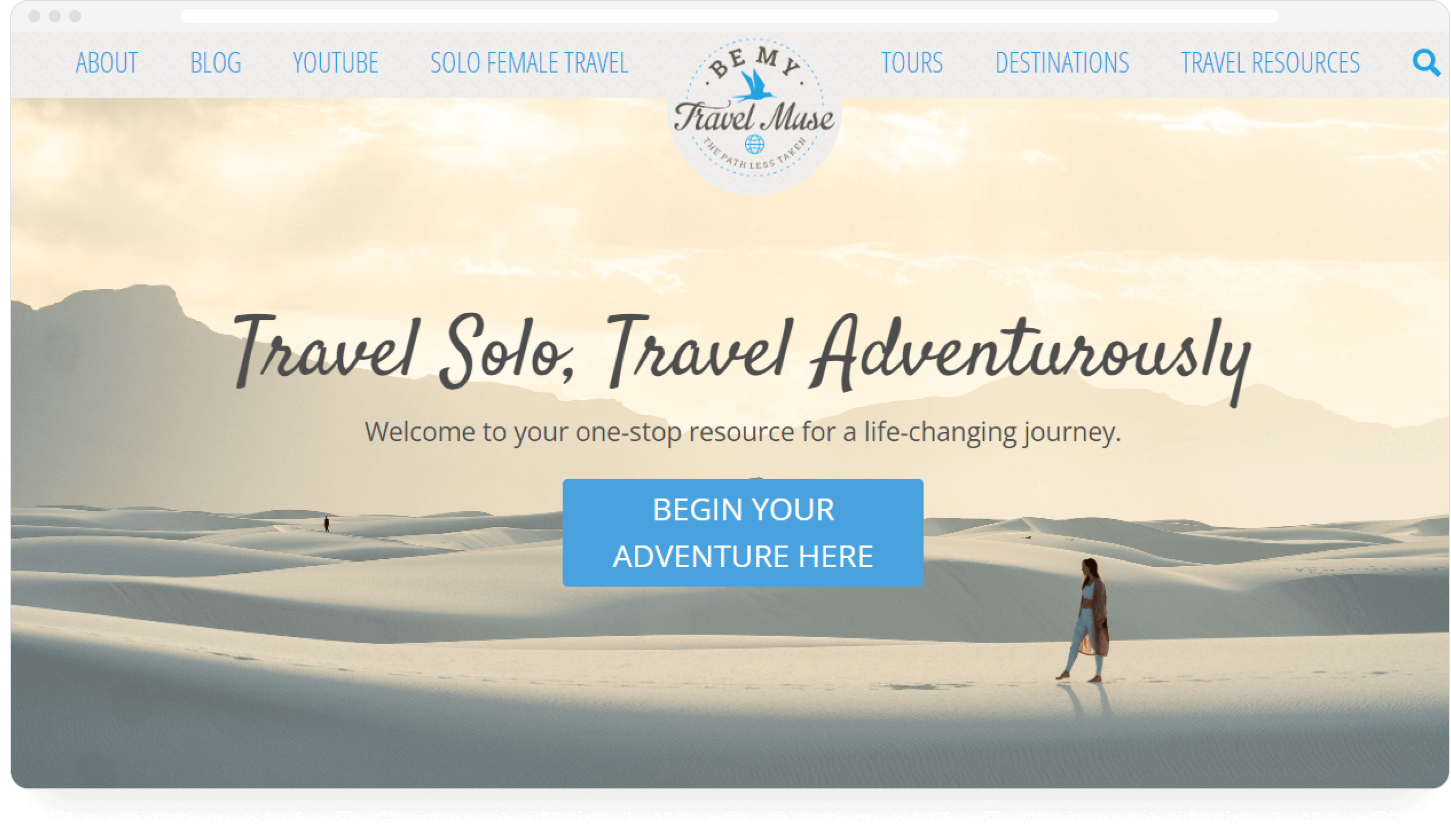
Much like Kiki, Kristin has also been traveling solo for over 9 years. Her tips about saving money and traveling safely without missing out on any adventures have led her blog to be one of the most popular ones in its niche. She attracts about five million readers per year, and I don't have to tell you how impressive that is.
Kristin's blog: bemytravelmuse.com
Now that you've seen some top-shelf travel blog writing examples, let's move on to a related question.
Are you planning to create a travel writing portfolio?
You've obviously noticed that the first few examples are portfolios rather than blogs. I included them on purpose because these portfolios actually provide a more comprehensive view of the writer's work at one glance than a blog would. In a blog, you'd have to click through different sections or scroll around to find actual articles.
In a portfolio, it's all right there on the front page. Moreover, if you're planning to write about travel for magazines, editorials, and other third-party publications, you need a portfolio. Clients usually don't have the patience to scan through your blog to find relevant articles. Additionally, if you're a professional writer of any kind, you're expected to have an updated portfolio that can be sent out in a second. Failure to meet this expectation immediately demotes you from their list of potential candidates.
Moreover, clients may not end up actually reading/viewing your best work if they are left to scroll by themselves. On the other hand, you can curate your portfolio so that your best work shows up first, and you get to your best professional foot forward.
Ok, so... how do I create a travel writing portfolio?
There are an overwhelming number of portfolio builders available today. You've probably already heard of some — Squarespace, WordPress, Clippings, etc. They're all excellent options, depending on your profession, requirement, and professional seniority.
Before creating my own writer portfolio, I went through quite a few of these tools before choosing Authory. I'm not saying you should choose it too (but you should if you're a writer), but just telling you why it stood out to me over the other, more established, name-brand portfolio makers .
- Automatic importing of ALL your bylined content from ANY digital source you enter. You enter the source website, and Authory finds all your bylined pieces and imports them into its database. You can import from an unlimited number of sources. Moreover, Authory won't just import all existing content from each source, but all pieces published in the future as well. You never have to copy-paste/manually upload any of your bylined pieces to your portfolio ever again. You can, of course, manually upload, non-bylined content if you want.
- All imported content is permanently backed up, in the ORIGINAL format (text/media) rather than screenshots.
- All imported content is downloadable as high-res PDFs or exportable as HTML files. No lock-in period.
- Multiple, low-effort customization options to make your portfolio visually appealing and easily navigable.
- Email notifications every time a new article is imported by Authory.
- In-built search engine optimization and responsive design so your portfolio looks good on mobile screens and shows up on search engine results.
- In-built analytics that provides real numbers on content performance (engagement, readership) across the web and popular social media sites every 30 days.
- Allows creation of newsletters with a couple of clicks. Post setup, Authory will automatically send your newly published content to subscribers.
- Widgets to display your portfolio on other sites, such as your personal website (if you have one).
If you're someone who reads reviews before making a purchase, I've got you covered. Check out these testimonials from Authory users:
today i've looked at 100+ applications for freelance writing projects. tons say something like, "I'm qualified but can't share my ghostwritten samples." just use @Authory to do this. hiring managers need to see your best samples! not an ad, just trying to make my life easier 😆 — Jimmy Daly (@jimmy_daly) February 15, 2023
Epic tool I recently discovered 👇 With @Authory , podcasters, influencers, journalists, businesses and personal brands can create a professional portfolio that highlights their best articles, stories, episodes and other written content including PR. https://t.co/LWXZFauvgR — Adel (@AdeldMeyer) February 15, 2023
I just started using @Authory , it looks great, let's you organize your content super easily and can automatically import all your pieces from the web. It also keeps a backup of everything in case one of your articles is ever taken down. ~8-10 bucks a month 🙌 — Historian turned techie👩🎓👩💻 (@christina_haaa) February 9, 2023
Emma Wilkinson
I do still love Authory - I do nothing just sit back and let it collate all my work (and tell me interesting things about stats etc) and I now have 1.4k articles on there 👍If you want a bit of a longer free trial to have a go yourself try this link https://t.co/IbHfEk3FDO https://t.co/RDYq2D8dKP — Emmajourno (@Emmajourno) February 7, 2023
Is it any wonder that Authory is chosen by 6X Emmy winner David Pogue , Steven Levy, Editor at Large, WIRED , Brian Fung, a Technology Reporter at CNN , and other industry stalwarts to create their portfolio?
Get started with Authory for free today!
Seasoned writer & editor working with B2B & B2C content since 2017. Writes about music on weekends. Trying to overcome caffeine addiction.
More articles
The ultimate guide to creating a successful writing portfolio.
Step-by-step guide to creating your writing portfolio. Tips, examples, and everything you need to make a writing portfolio clients will love!

Protim Bhaumik
over 1 year ago
10 Journo Portfolio Alternatives for 2024
A list of alternatives to Journo Portfolio that you can test out before building/upgrading your next incredible portfolio!
This Executive-Turned-Journalist Has Written for 54 Different Publications — Yet Keeps His Work Perfectly Organized
Howard M. Cohen has written for considerably more publications than the average journalist. That’s why finding a solution for how to present and protect his work has been vital for him.

over 3 years ago
After 300 Articles Vanished Into the Abyss, This Tech Writer Knew He Had to Find a Way to Protect His Work in the Future
Kane Fulton lost hundreds of articles when the publication he wrote for changed its CMS. His work was gone for good, and Kane immediately started looking for a solution to ensure this would never happen to him again.
Clippings Portfolio — Pros, Cons & Alternative
Does a Clippings portfolio work for you? Here's a detailed review of Clippings, a look at its pros & cons, and a look at Authory as an alternative.
about 1 year ago
Top 7 Contently Portfolio Alternatives: Contently Alternatives for Writers
Learn what the top 7 Contently portfolio alternatives are and which one you should choose to build your portfolio.
- Collections
- Journalists
- Content Marketers
- Thought Leaders
- Partner Program
- Writing Portfolio
- Journalism Portfolio
- Writing Backup
- Content Marketing Portfolio
- Social Media Portfolio
- Best Portfolio Builders
- Portfolio PDF Examples
- Twitter Archive
- Portfolio Creator
The Best Travel Literature of All Time
Like many travellers, you may have found yourself immersed in the voyages of those who have gone before you from time to time. While living vicariously is no replacement for being on the road, there are some utterly wonderful nonfiction travel books out there, which are the next best thing.
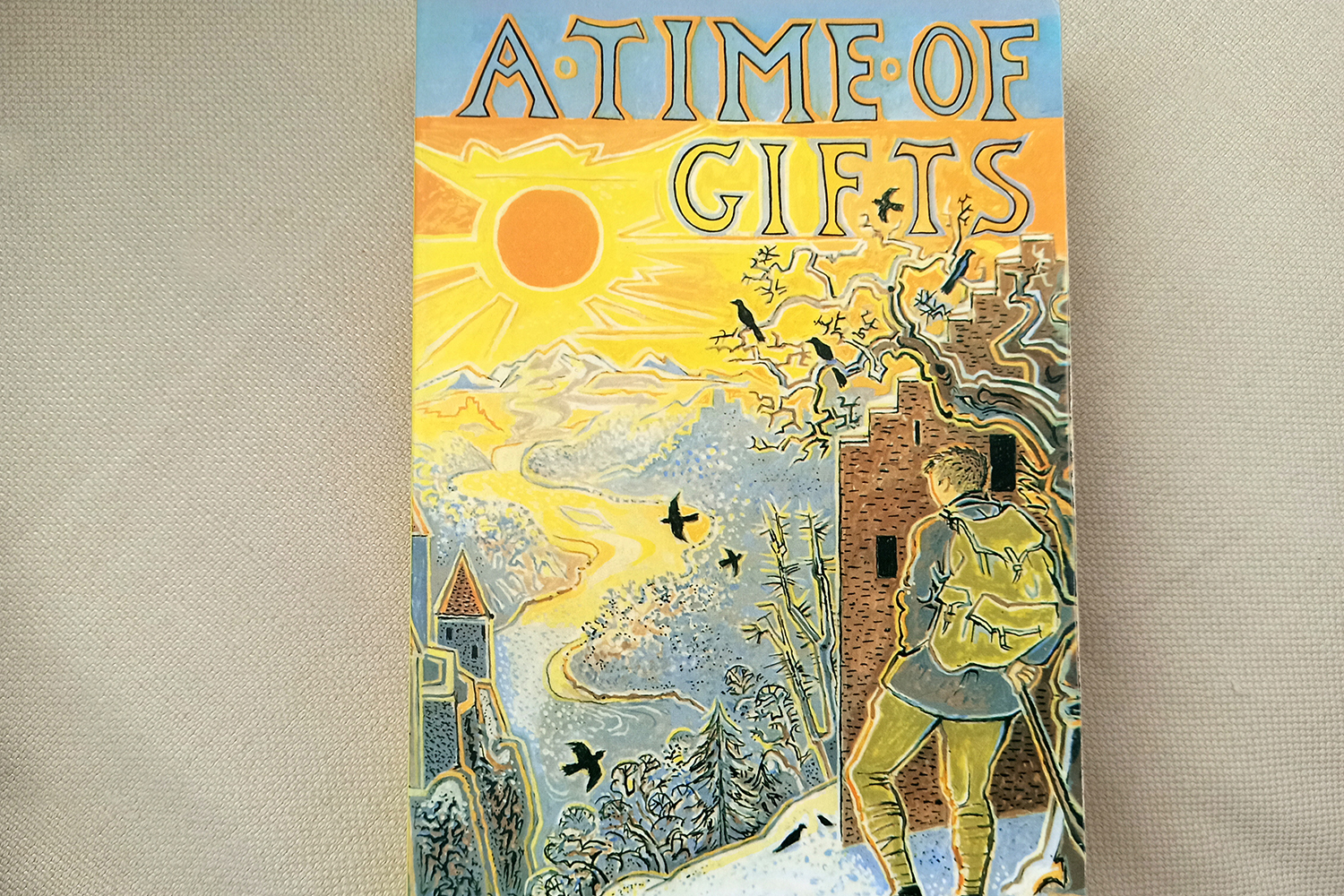
A Time of Gifts by Sir Patrick Leigh Fermor (Photo: Paul Stafford for TravelMag.com)
It’s quite genuinely impossible to create a comprehensive list of the best travel literature. While there’s a lot of replication of these types of lists out there, some books endure precisely because of their importance at the time or to other writers. Although some authors listed below deserve to have more than one of their books featured on this compendium of the greatest travel literature, only their finest work has been included. Consider it your gateway to that writer’s greater oeuvre, if you’ve not read any of their work previously; a reminder if you have. Similarly, non-male writers have often been unfortunately overlooked in the past and some real gems that deserve to be on the best travel literature of all-time lists have been overlooked.
The following aims to redress the balance a little. Consideration is also given to some of the works that defined people who are now better-known for their other exploits, because there’s no greater adventure than that of somebody whose travels inspired them to do something more important or lasting in the world beyond merely moving through space and time for travel’s sake. Here are twenty of the best pieces of travel literature ever written (theoretically), to guide you to your next read, to find inspiration for your next trip, or to simply use as a general reading checklist until your next journey.
A Time of Gifts (1977) – Sir Patrick Leigh Fermor
Writing about Paddy Leigh Fermor in 2020, it would be easy to dismiss the great writer as a privileged individual who was fortunate to stay with royalty and the well-to-do all across Europe as he sauntered from one place to the next. But that would be an awful disservice. A Time of Gifts is the first of a trilogy of books documenting his journey, on foot, from the Hook of Holland to Constantinople (Istanbul). His scholarship and complete immersion in every culture he encountered helped his writing transcend mere travel literature to reach a higher level of writing. You never feel as though he’s an outside observer trying to make sense of the foreign by superimposing his own beliefs. His prose has been described as baroque, and is densely layered with a deep intelligence, understanding and, above all, passion for everything he encounters. The trip itself was undertaken in 1933/4 and the Europe that Fermor uncovers on his peregrinations is one which is beginning to spiral blindly into major conflict. Somehow this aspect makes the random acts of kindness he experiences across Germany and the rest of the continent even more bittersweet.
Publisher: John Murray, Buy at Amazon.com
Arabian Sands (1959) – Sir Wilfred Thesiger
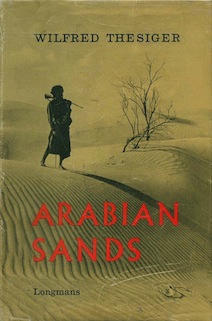
Arabian Sands by Wilfred Thesiger (Photo: courtesy of P.S. Burton via Wikimedia Commons)
Another travel literature classic is Thesiger’s intrepid anthropological look at Bedouin culture and lifestyle in one of the remotest, most inhospitable places on earth: the Arabian Peninsula’s Rub’ al Khali. The setting for the journey is amid the embers of World War II, the repercussions of which were being felt worldwide, including among the Bedouin tribes who’d lived much in the same way they always had until the outside world intruded. In effect, this book offers a snapshot of a remarkable culture that was fast altering, which is what makes this, and many of the books written during the reign of the British Empire, fascinating historical documents. For all of the rightful condemnation of European colonialism, one thing is clear in this book: the fascination and inquisitive nature of the many British scholarly individuals sent to far-reaching corners of the globe created an immensely valuable cache of first-person accounts of cultures and peoples that may not have been recorded otherwise amid the inevitable and inescapable rise of globalisation of the time.
Publisher: Penguin Classics, Buy at Amazon.com
Black Lamb and Grey Falcon (1942) – Rebecca West
West’s voluminous, in-depth examination of Yugoslavia during her time travelling there in 1937 was designed to explore how the country was a reflection of its past. West spent six weeks journeying across the whole region with her husband and meeting eminent citizens along the way. Sadly, by the time the book was published, the Nazis had invaded and the country would never be the same again, which makes this yet another invaluable early-20 th -century document. What sets Black Lamb and Grey Falcon apart though is the level of exquisite detail and research dedicated to the subject. If there was any proof required that travel literature serves an invaluable purpose as a piece of primary historical evidence, then this may well be it.
Publisher: Canongate Books, Buy at Amazon.com
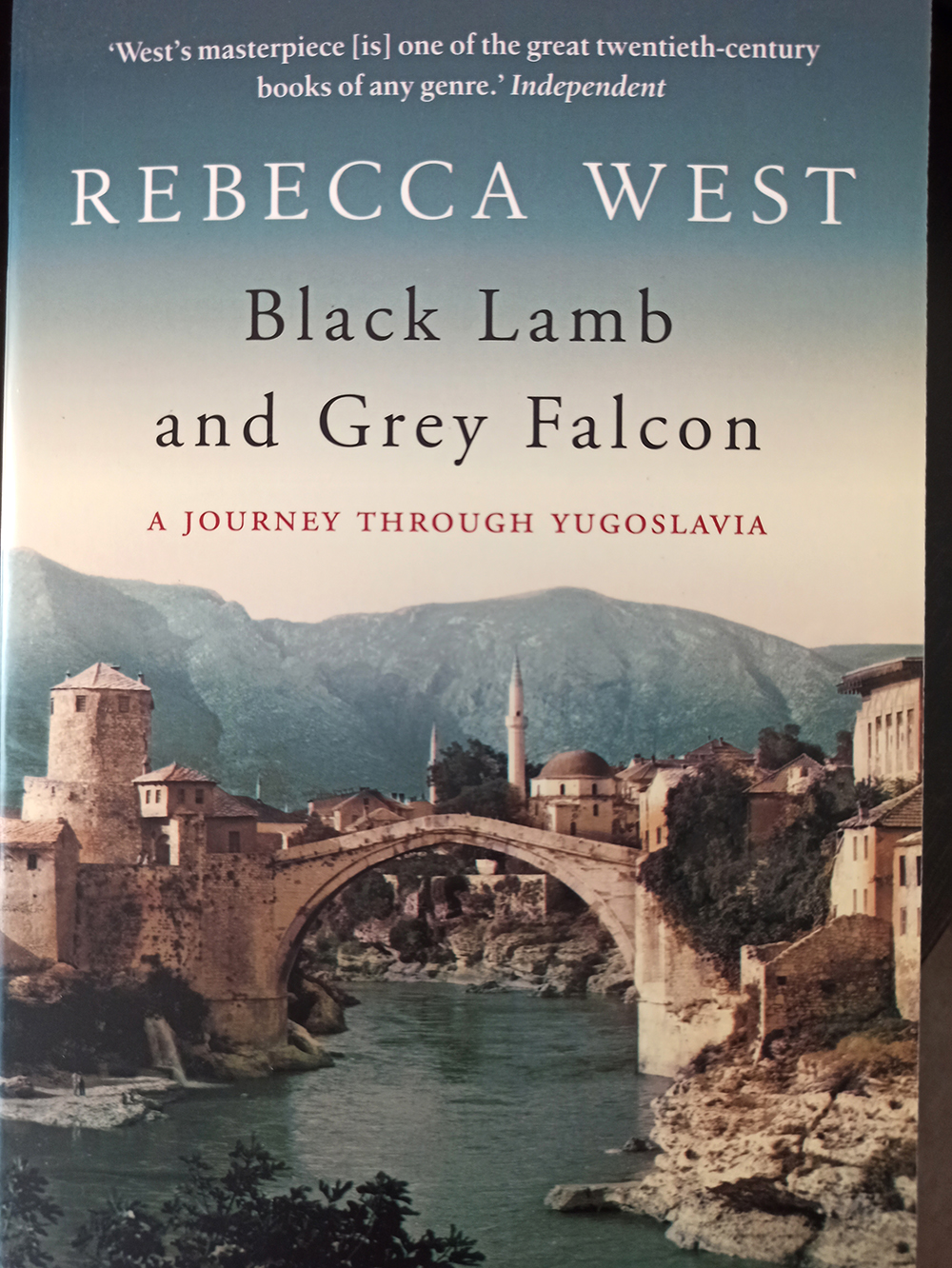
Black Lamb and Grey Falcon by Rebecca West (Photo: Paul Stafford for TravelMag.com)
Border (2017) – Kapka Kassabova
Beautifully written and layered with a real sense of atmosphere, Kassabova’s haunting Border is one of the standout pieces of travel writing to be published in the last decade. Eastern Europe is one of the least explored regions of the world in travel literature. Owing perhaps in part to the secrecy and legacy of distrust brought about by the Cold War, even those who have travelled through as part of longer journeys (Paul Theroux in Pillars of Hercules or Bill Bryson in Neither Here Nor There ) scarcely shed any real light on the region. Here, Kassabova heads back to the nation of her birth (Bulgaria) to explore the fragments of political ideology, faith and race, and the blurred lines between them, that have developed around the border region separating Bulgaria from Greece and Turkey.
Publisher: Granta Books, Buy at Amazon.com
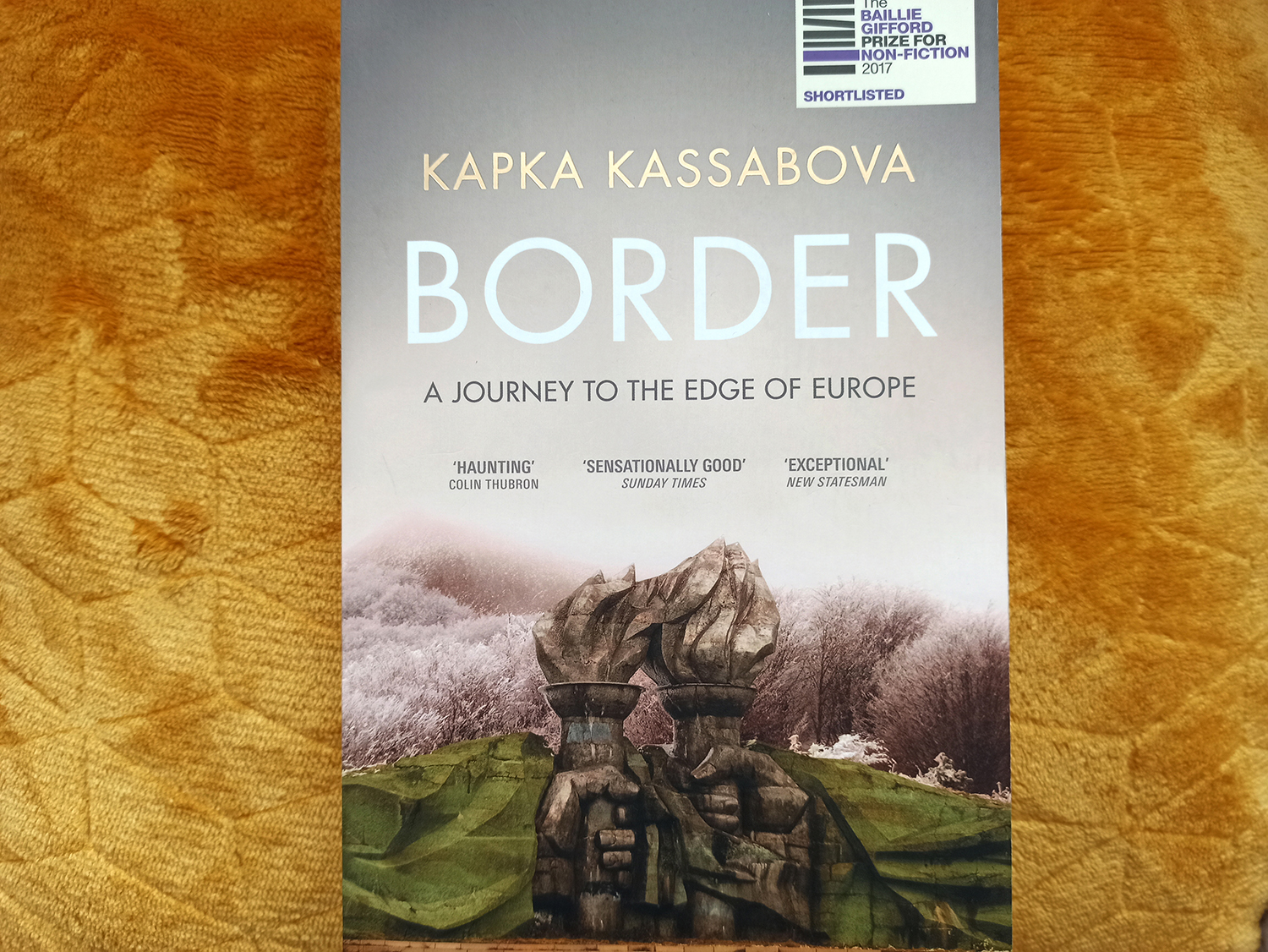
Border by Kapka Kasabova (Photo: Paul Stafford for TravelMag.com)
Down and Out in Paris and London (1933) – George Orwell
While much of travel literature is concerned with the voyage and seeking out the miraculous, the unique and the lesser known, Orwell took another route entirely. Down and Out in Paris and London does exactly what it says on the tin. It is a memoir of impoverished living in two of the world’s great cities, at a time when they were global beacons in terms of both power and culture. Not only does this book, in a very prescient move, eschew the superior tone of academia when examining the other, it also avoids all glamour in those cities, focussing entirely on the poor, the meek and the desperate. In Paris he lives on the edge of eviction, working the kitchens of a fancy establishment, while in London he lives the life of a tramp, moving from one bunkhouse and soup kitchen to the next, living day to day. It is to travel writing what the ‘method’ is to acting.
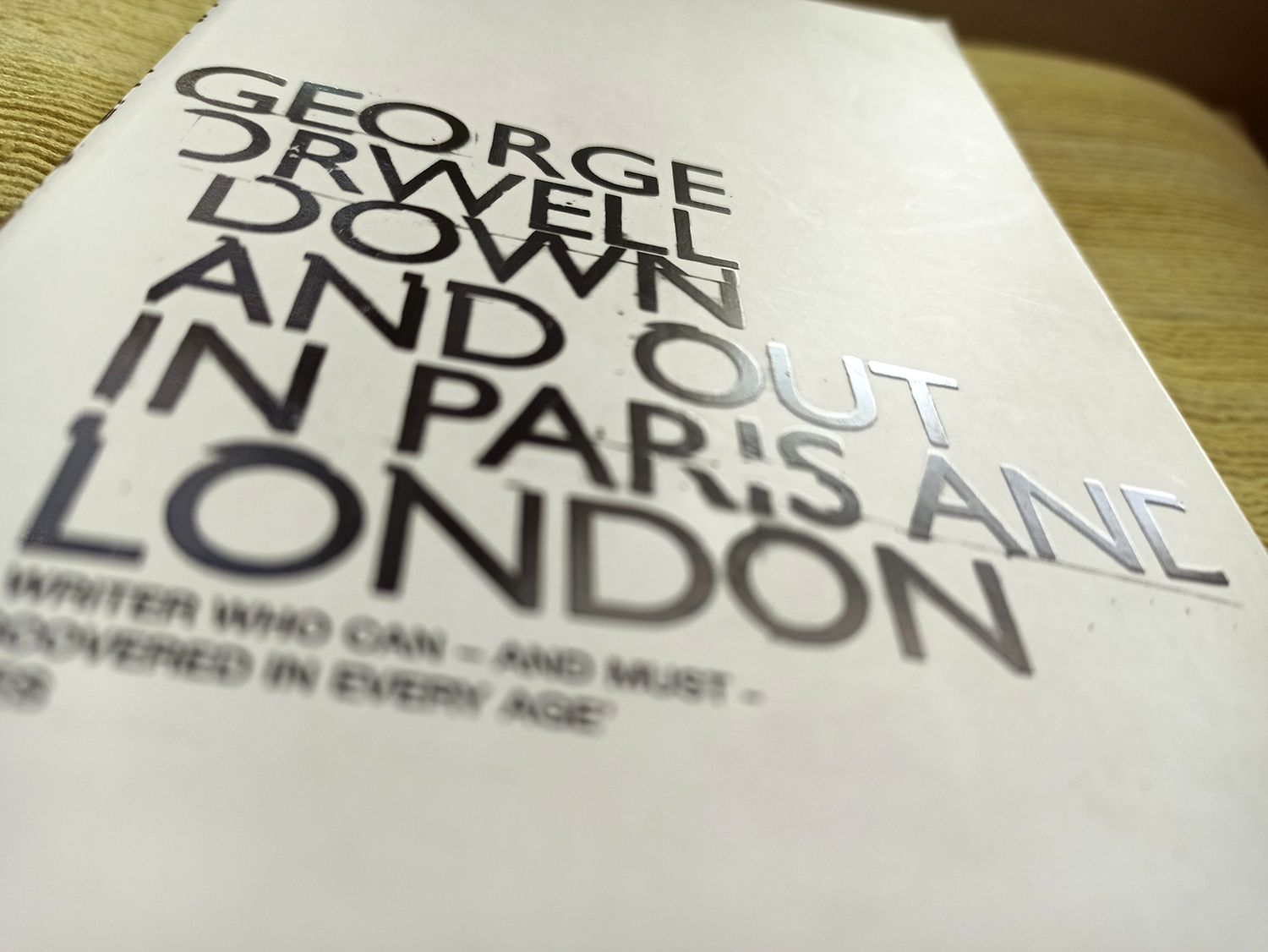
Down and Out in Paris and London by George Orwell (Photo: Paul Stafford for TravelMag.com)
Fear and Loathing in Las Vegas (1972) – Hunter S. Thompson
The outlier on this list (all good lists need one) is Hunter S. Thompson’s delightfully absurd, occasionally apocryphal and downright debauched novel Fear and Loathing in Las Vegas . In it, he created a new way of writing known as gonzo journalism, a style of storytelling which is found most commonly today in some documentaries, where the lines of fact and fiction become blurred and with the journalist placed as a central character in the story. This brilliant commentary on the flexible and inconsistent nature of truth was perfectly epitomised by the increasingly hallucinogenic recollections of protagonist Raoul Duke and Dr. Gonzo. The road trip to Las Vegas ultimately casts important light on an American society gripped by racism and violence (partly why the story is still so powerful today is that America hasn’t yet learned to grow up). As such it remains one of the most intriguing snapshots of America out there, surpassing the work of many strait-laced travel narratives in the process.
Publisher: Random House Inc., Buy at Amazon.com
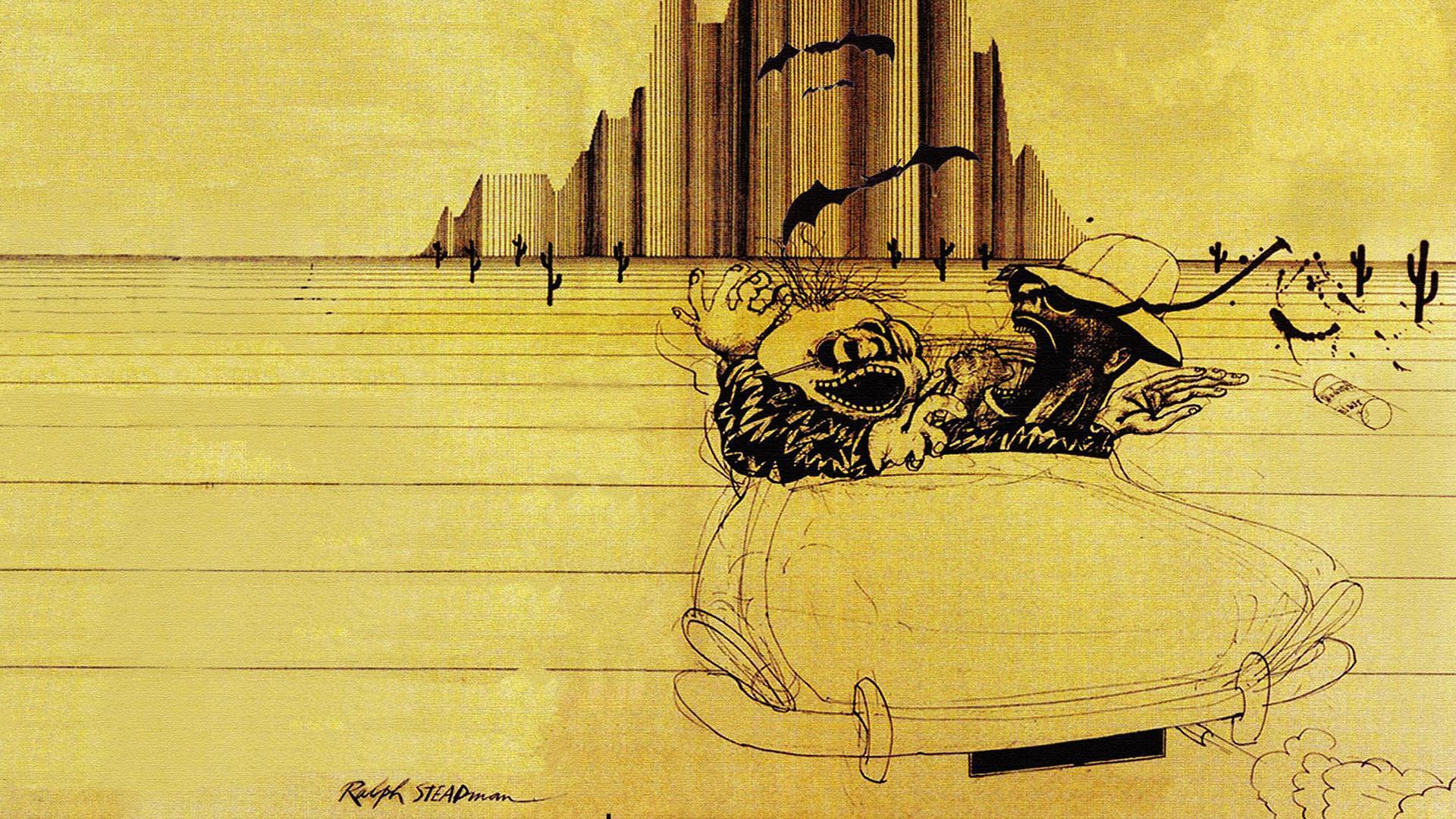
Fear and Loathing in Las Vegas by Hunter S. Thompson (Photo: Mathieu Croisetière via Flickr / CC BY-SA 2.0)
The Great Railway Bazaar: By Train Through Asia (1975) – Paul Theroux
A perfect example of how gonzo journalism began to seep into travel literature comes from what is arguably the most important modern travelogue: The Great Railway Bazaar . In it, Theroux travels from London all the way to Southeast Asia and Japan, via India, then back to Europe via Russia’s Trans-Siberian railway. While Theroux upholds elements of the old school travel narrative – like the scholarly, studious approach and the inquisitive air – his journey by train is as much about the growing backpacker, hippie, trail and the western counterculture that encouraged it. Occasionally the line between fact and fiction is blurred in his writing, but only to better convey his interactions with the people he met. As such, you get a fascinating look at what could be called modern colonialism, whereby the train networks that were often built by colonial rulers in non-European nations across the world, like India and Burma, were now being used by a new generation in the post-colonial era to explore these newly-sovereign nations.
In Patagonia (1977) – Bruce Chatwin
Coming hot on the tail of Theroux’s above book is perhaps the most popular and enduring travel book of all time: In Patagonia . Bruce Chatwin starts it off with a direct nod to writing and journalism’s slide into apocrypha by framing his trip loosely around the search for remains of a “brontosaurus” found in a Patagonian cave, which he first found languishing in his grandparent’s house. The doubtful story behind this find sets him on a road where he aim to unravel various other mysteries whose only connection is geographical, including the final resting place of Butch Cassady and the Sundance Kid, in the wild, empty spaces of South America. It’s a brilliant book formed of loose sections that don’t directly link to one another but has greatly influenced modern travel literature today.
Publisher: Vintage Classics, Buy at Amazon.com
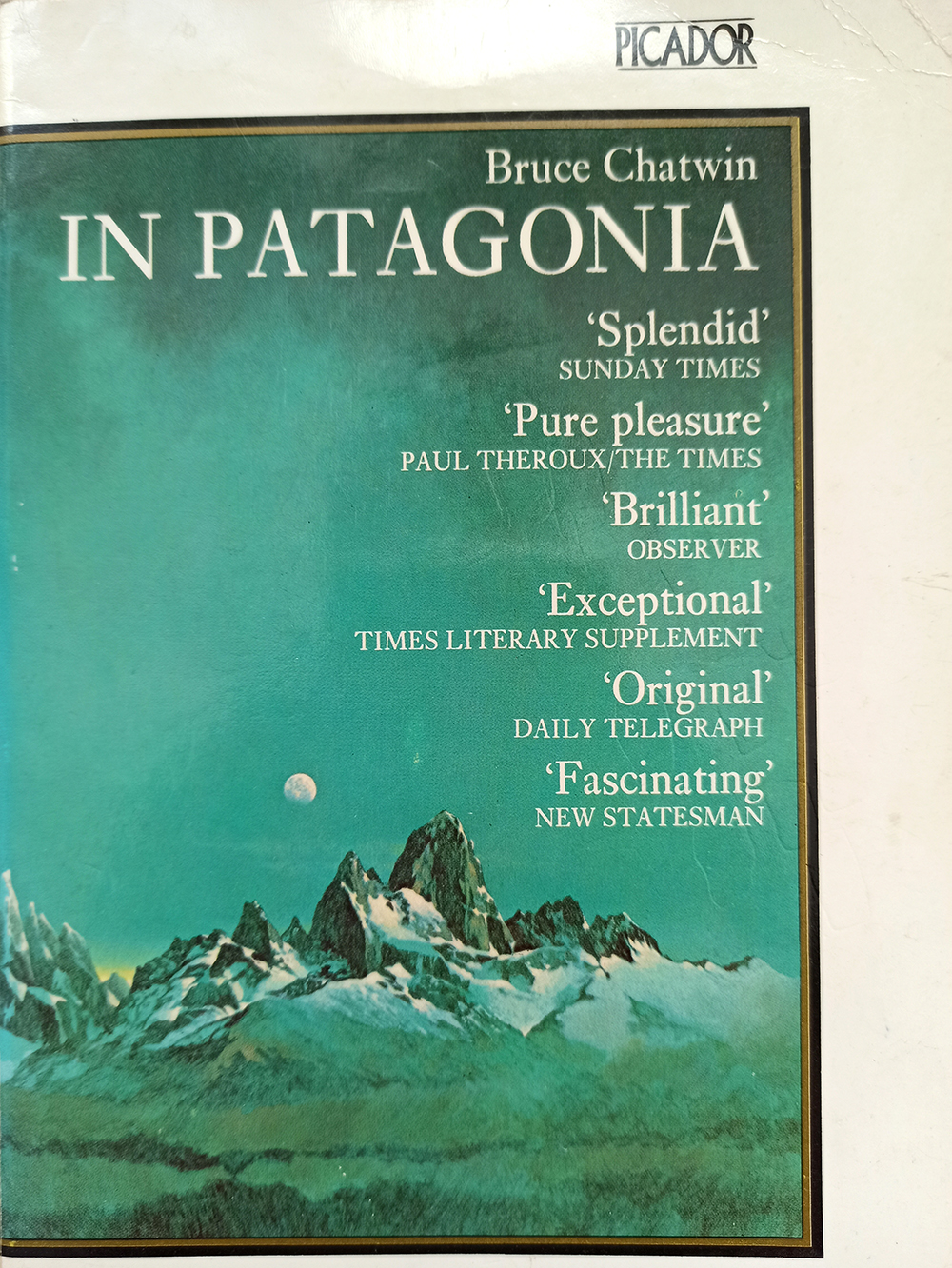
In Patagonia by Bruce Chatwin (Photo: Paul Stafford for TravelMag.com)
In Xanadu (1989) – William Dalrymple
One of the travel writers greatly influenced by Chatwin was William Dalrymple, whose own quest for his first book, In Xanadu , was framed as a search for the fabled palace of Kublai Khan, Xanadu. This type of narrative has always proven to be a ready source of inspiration for some of the better modern travel books; searching for answers to popular mysteries. It has a journalistic bent to it, and manages to sidestep the awkwardness of westerners merely travelling abroad and casting aspersions about the people and cultures they encounter through an imperial gaze, as is the criticism often lodged again some of the earlier works of travel writing. Here, Dalrymple follows in the footsteps of Marco Polo (following footsteps of somebody famous is also a common trope of travel literature) to find the palace. While Dalrymple restores elements of the scholarly, learned approach common to writers like Robert Byron and Paddy Leigh Fermor, you can feel the impact of those 70s writers as well.
Publisher: Flamingo, Buy at Amazon.com
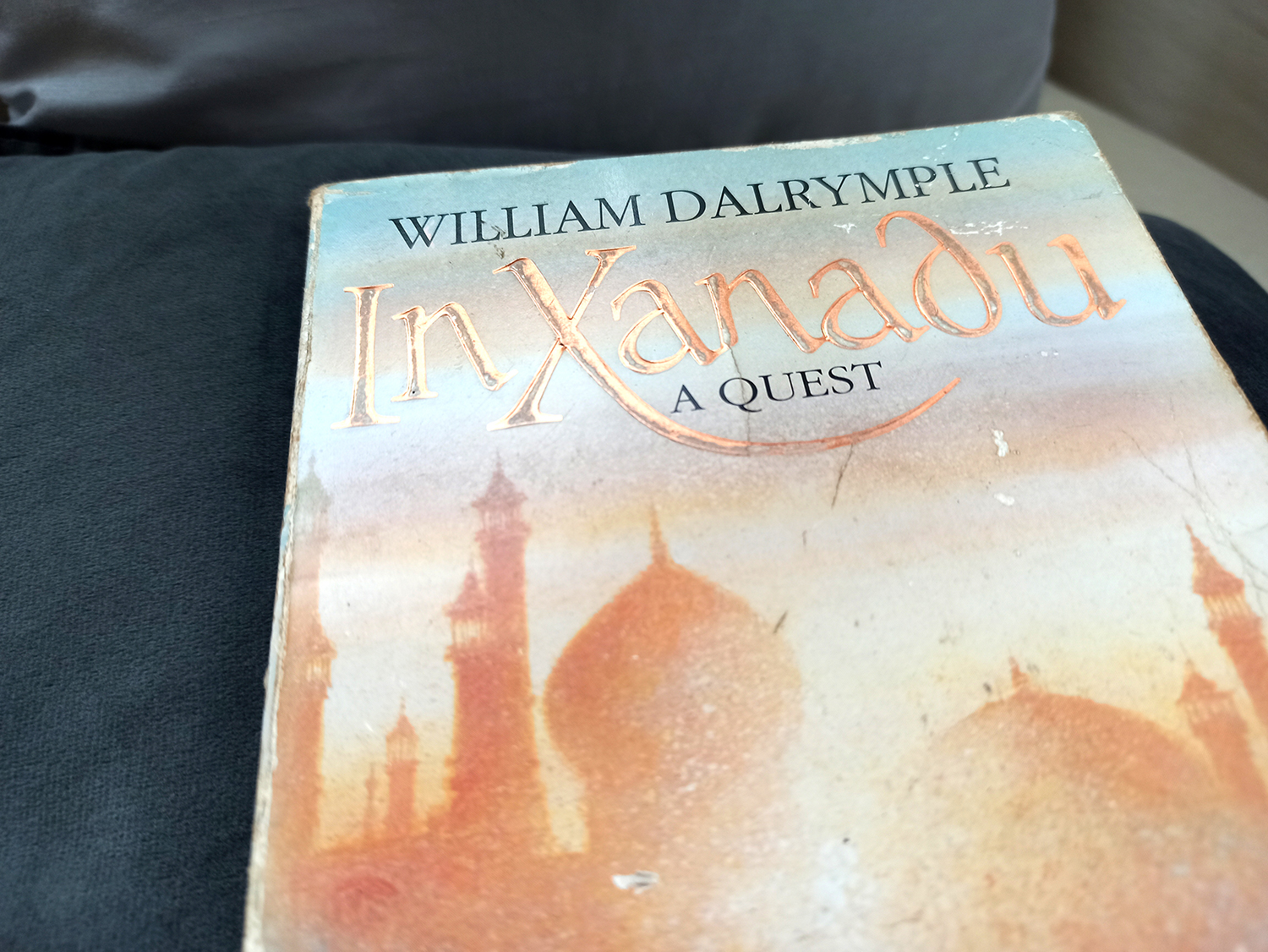
In Xanadu by William Dalrymple (Photo: Paul Stafford for TravelMag.com)
Into the Wild (1996) – Jon Krakauer
Few gripping travel narratives manage to capture the why? of our impulse to roam quite like Jon Krakauer does in Into the Wild . The book is both harrowing and revelatory, while performing a third-person character study on a young man he never actually met. In 1992 Chris McCandless walked into the Alaskan wilderness and never came back out. The book tries to examine what had led him there in the first place, whether he’d intended to return at all, and why he wasn’t the first to try and cut all ties with modern society. Krakauer looks to others, such as Henry David Thoreau ( Walden is the original escape from society book and a must-read for anybody fascinated by this subject), who successfully parted from the rat race, as well as the reasons McCandless initially fled from well-to-do family life years before and never contacted them again in his search for something more profound and meaningful. While most readers may disagree with McCandless’s methods, his motives seem far more familiar and relatable.
Publisher: Pan Macmillan, Buy at Amazon.com
The Living Mountain (1977) – Nan Shepherd
Perhaps one of the finest pieces of nature writing ever committed to paper is The Living Mountain by Nan Shepherd. Sadly, it’s also one of the most underrated books. The research for her book was undertaken in and around 1942, during the Second World War, which didn’t trouble the wilds of Scotland too badly. Here, the stark beauty of the Cairngorms seems to mirror the harsh reality of war. But Shepherd’s deep examination of the various microcosms of life that thrive on the region’s mountains is really a poem that exalts life. It’s a celebration of survival and endurance. Her wonderful book almost never made it to print, lying in a drawer for decades until a friend read it and encouraged her to seek out a publisher. We’re lucky it did.
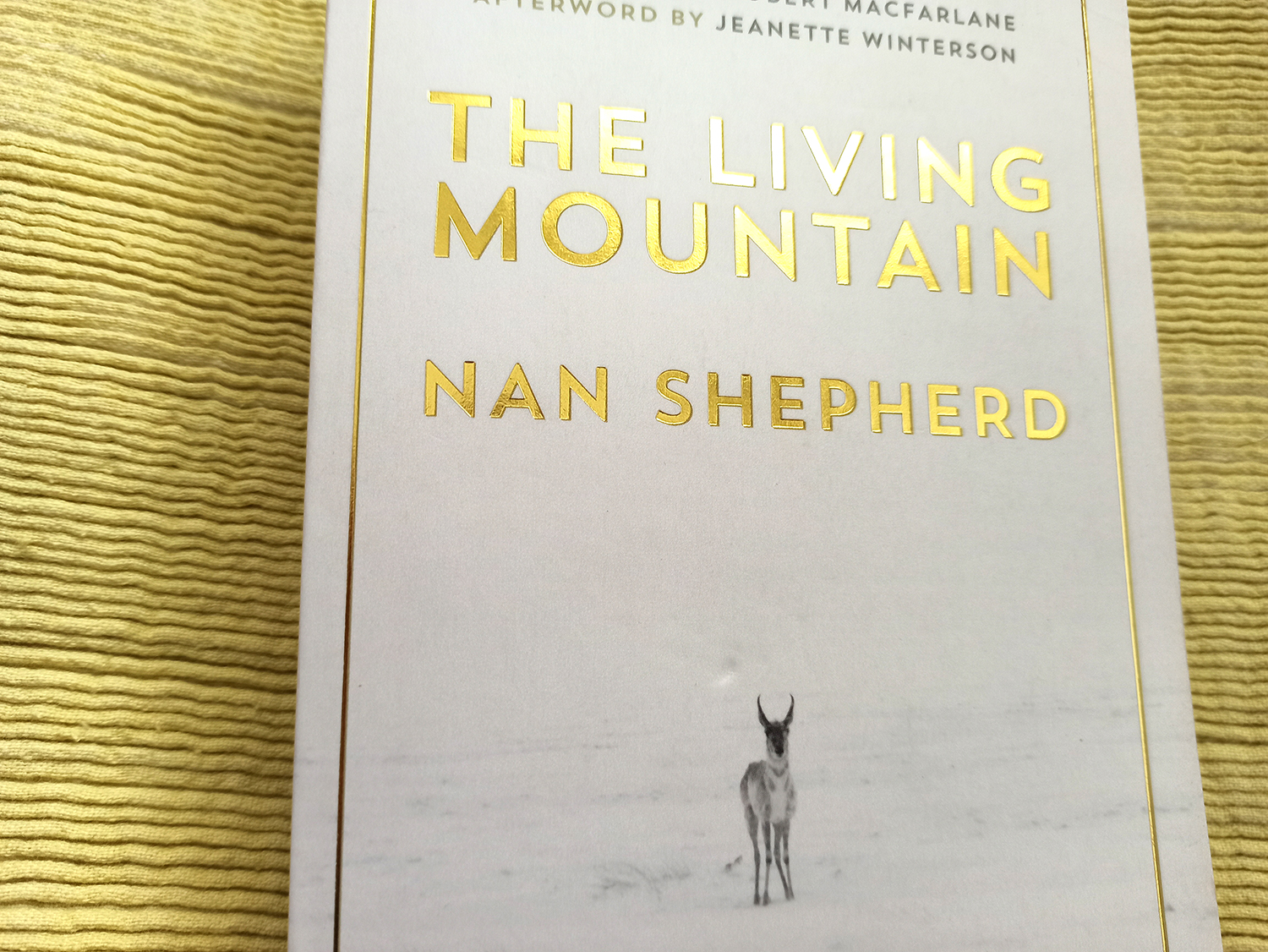
The Living Mountain by Nan Shepherd (Photo: Paul Stafford for TravelMag.com)
The Motorcycle Diaries (1992) – Che Guevara
Even if Che Guevara never became the revolutionary and icon of a generation that he did, The Motorcycle Diaries is a fascinating first-person account of travel’s capacity to broaden the mind. The young medic Ernesto ‘Che’ Guevara sets out from his home in Buenos Aires with his friend Alberto Granado sharing a motorcycle ‘La Poderosa’ and in his pointed recollections, you can almost feel Che’s ideological shift. He sees poverty and pain and beauty in the poor communities they visit, and through this, we learn a lot about how Guevara became a key player in the Cuban Revolution. But it’s also a beautiful rumination about the paths we take in life and the importance of curiosity.
Publisher: Perennial, Buy at Amazon.com
Notes from a Small Island (1995) – Bill Bryson
You can’t really write a top travel literature list and omit Bill Bryson. He’s one of the finest travel writers still producing books. Notes from a Small Island is particularly intriguing because, while most of the books that make any top travel literature list tend to be written by Brits, this is a book about Britain, written by an American. And it’s a delightfully observed book at that, pinpointing the eccentricities and unusual aspects of the island nation that most Brits would never think twice about, but when seen through foreign eyes suddenly become absurd. Bryson is especially gifted at making even the most mundane things seem funny. His books neatly balance thorough research and scholarship with humour and keen observation, effectively amalgamating all of the key aspects of travel literature into one inimitable style.
Publisher: Black Swan, Buy at Amazon.com
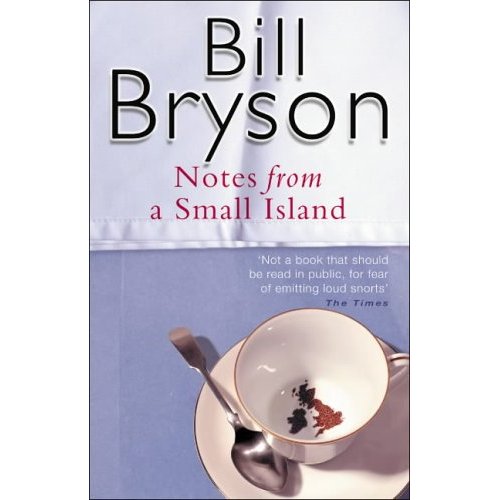
Notes from a Small Island by Bill Bryson (Photo: Wolf Gang via Flickr / CC BY-SA 2.0)
On the Road (1957) – Jack Kerouac
Before modern travel literature’s more self-aware phase that started in the 1970s, we had what essentially kick-started the great 20 th -century American cultural upheaval: The Beat Movement. Kerouac was writing about sexual promiscuity, wanton drug use and giving the establishment the middle finger way before it was cool to do so. Well-educated and moving in New York’s literary circles, Kerouac’s thinly-veiled characters in On the Road (substituting Old Bull Lee for William S. Burroughs, Dean Moriarty for Neal Cassady, Carlo Marx for Allen Ginsberg, and Sal Paradise for himself) are painted into a quasi-fictional account of his cross-country jaunts in the late 1940s. The post-war world was much-changed; the white picket fence America with its Jim Crow segregation and uptight Bible-belt hypocrisy were no longer acceptable. Around the same time, J.D. Salinger was branding it phoney, while Kerouac was realising this in his own way, by embracing escapism and drugs. On the Road still resonates today; both the book and the Beats gave licence to a generation of youths to question the oppressive system that became all too obvious in the 60s.
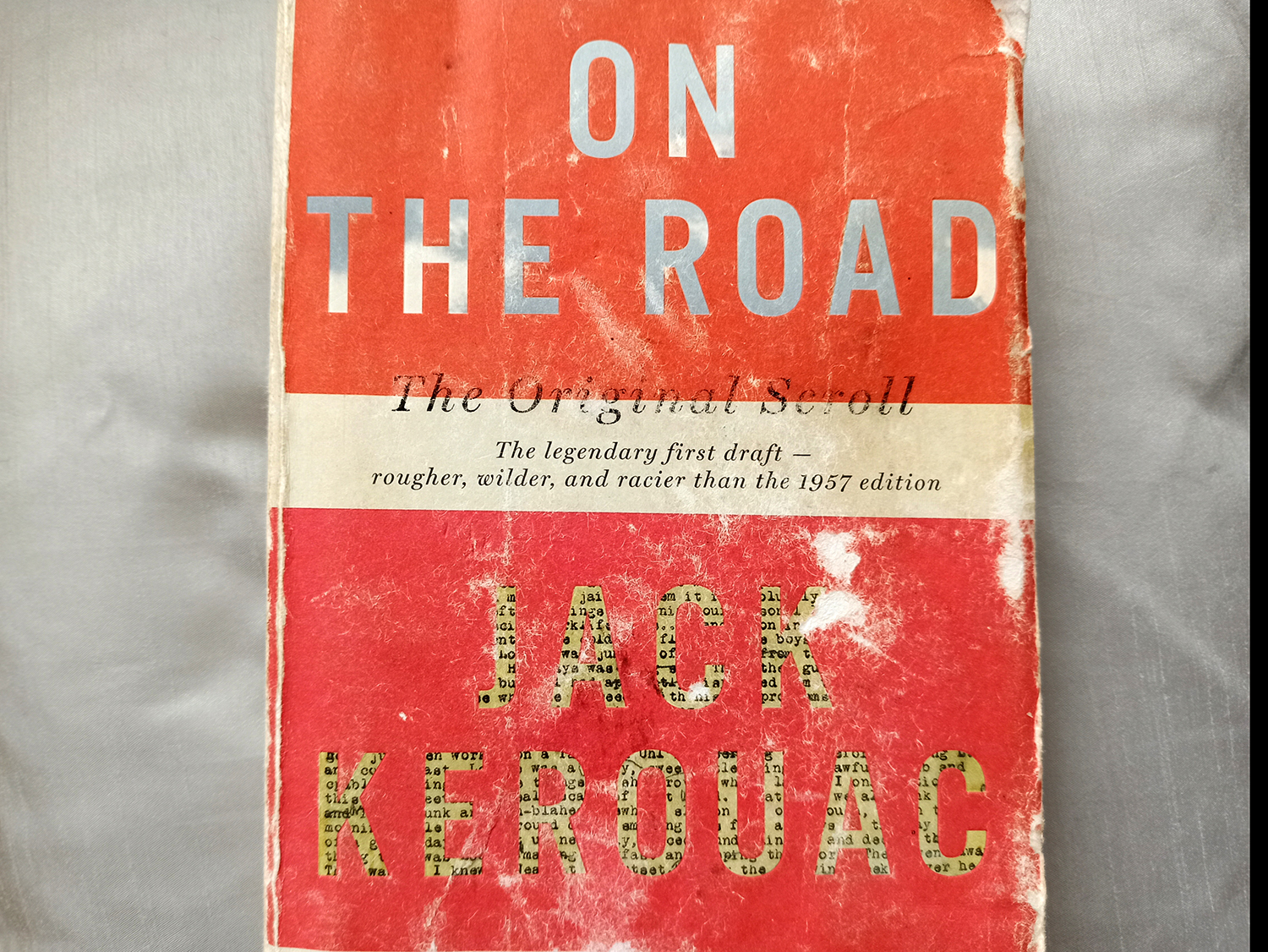
On The Road by Jack Kerouac (Photo: Paul Stafford for TravelMag.com)
The Road to Oxiana (1937) – Robert Byron
Much of the Afghanistan and Iran of Byron’s writing has disappeared, making the precision of his prose all the more valuable. The Road to Oxiana has all the classic elements of earlier travel narratives in it, scholarship, keen observation but also the kind of humour and casual presentation that would become far more popular in the writing styles common to the latter half of the 20 th century. Byron’s constant use of Marjoribanks to replace the name of the Persian ruler of the time was designed to evade censure or punishment in case his notebooks were confiscated and read. The humour of this rebelliousness is not lost when read today, even if some of his style may feel a little bit dated now. His architectural descriptions may be among some of the finest in all of travel literature.
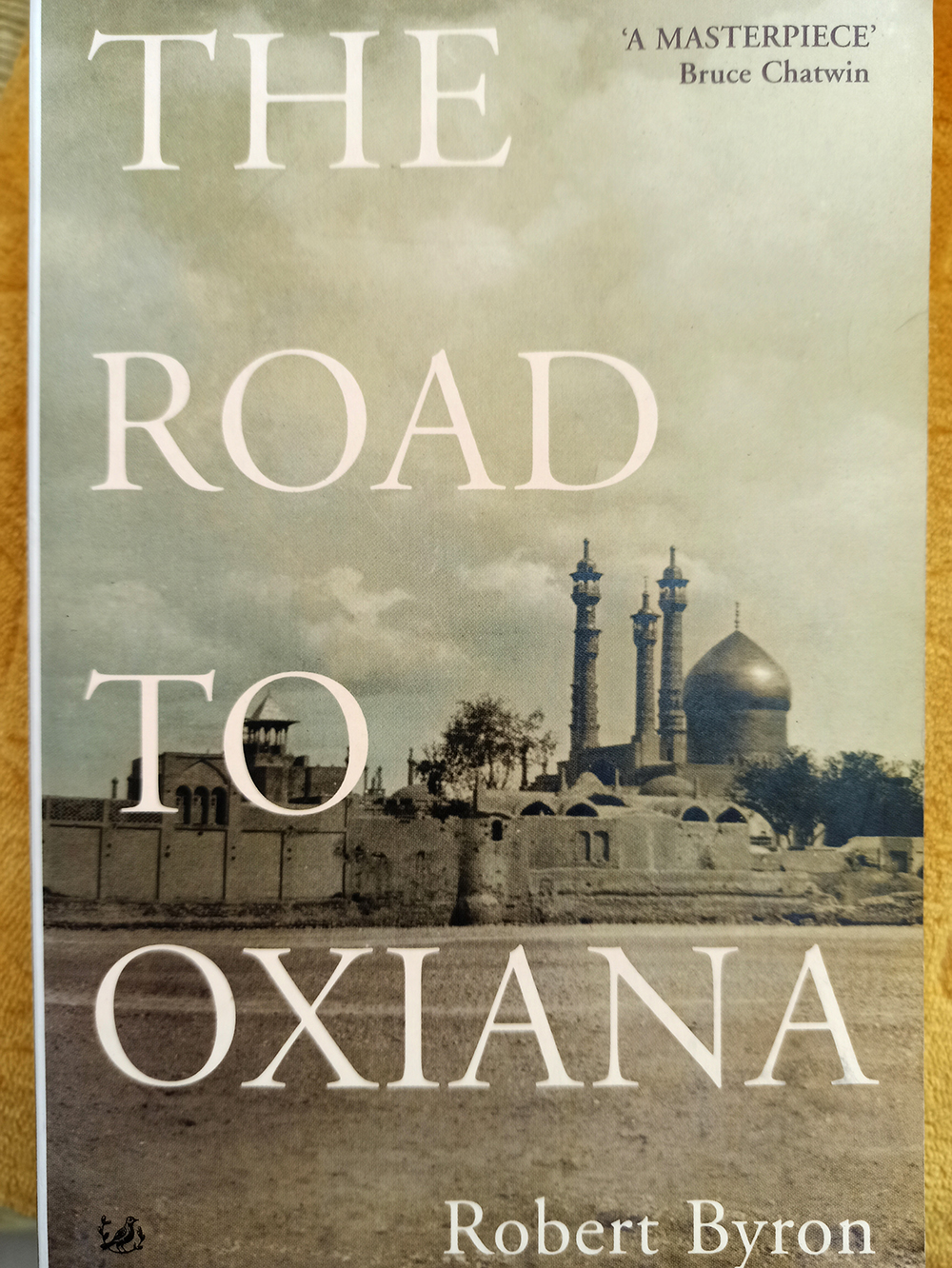
The Road to Oxiana by Robert Byron (Photo: Paul Stafford for TravelMag.com)
Rome and a Villa (1952) – Eleanor Clark
Because the majority of travel writing is crafted around a voyage or quest of some sort, we expect the movement to transcend places, countries even. What Clark does exceptionally well in Rome and a Villa is offer an in-depth depiction of just one city: Rome. This book, although not particularly tied to or crafted around any one specific idea, offers a deeper understanding of The Eternal City based on Clark’s explorations, often on foot. Indeed, her scholarly treatment of the Italian capital brings the city’s rich, storied past to life in imaginative and illuminating ways that offer fresh insight on a place that we may easily think has already been well covered already. Which goes to show that places change with the times offering an opportunity for fresh perspectives. There’s nowhere that is dull or too well-known in travel writing if handled by the right scribe.
Publisher: Harper Perennial, Buy at Amazon.com
Shadow of the Silk Road (2007) – Colin Thubron
Colin Thubron’s fascination with worlds that are ostensibly closed off to westerners has often led him into places that many others wouldn’t think to go. He visited China before it had opened up to the world, and the same goes for Soviet Russia. In Shadow of the Silk Road Thubron exhibits why his books are perhaps the most masterfully crafted of all contemporary travel literature. His pacing and descriptive writing are exquisite, particularly in this book, in which he journeys from Xi’an to Antakya in Turkey following the old ways, through Central Asia, once known as the Silk Road. The worlds he uncovers and the people he meets are painstakingly woven into a rich text, much like a hand-woven Persian rug, that is one of the most evocative pieces of travel writing out there.
Publisher: Vintage, Buy at Amazon.com
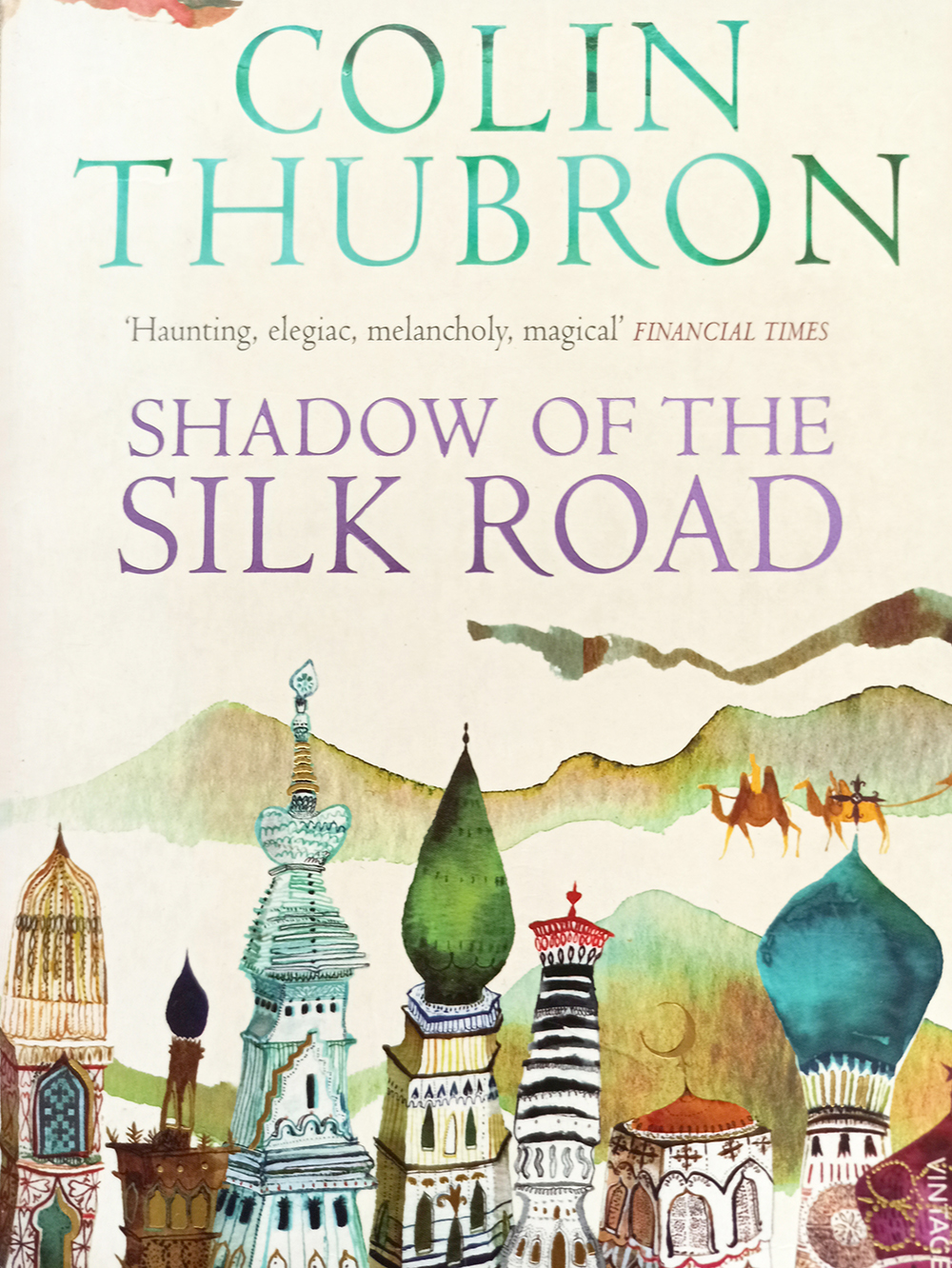
Shadow of the Silk Road by Colin Thubron (Photo: Paul Stafford for TravelMag.com)
Travels with Myself and Another (1979) – Martha Gellhorn
Even if Martha Gellhorn was writing today, she would rightly be upheld as one of the great journalists, but given that she was doing it decades ago, often better than her counterparts in a male-dominated field, is even more remarkable. The ‘Another’ that accompanies Gellhorn through much of the book was her former husband Ernest Hemingway, but the book also includes memoir from Africa in which she voyages solo. The book is presented as a collection of essays, a format that has become increasingly common in travel writing and which effectively allows the book to focus on more than one topic. Gellhorn’s writing includes keen observation, lively wit and a really sharp political outlook.
Publisher: Eland Publishing Ltd., Buy at Amazon.com
The Valleys of the Assassins (1934) – Freya Stark
Stark was an incredible human being. Fluent in numerous languages, including Farsi, she travelled the world often alone at a time when even men undertaking such journeys were considered intrepid. Stark was particularly drawn to the Middle East and was able to recount the stories of the women there, living in devout Muslim communities, in a way no man would ever have been able to do. She also discovered regions that had not been explored by Westerners before, including the Valley of the Assassins, which forms the basis of this eponymous book, receiving the Royal Geographical Society’s prestigious Back Award in the process. She continued to write books well into her 90s (releasing work over six decades) and died in Italy at the age of 100.
Publisher: Modern Library Inc., Buy at Amazon.com
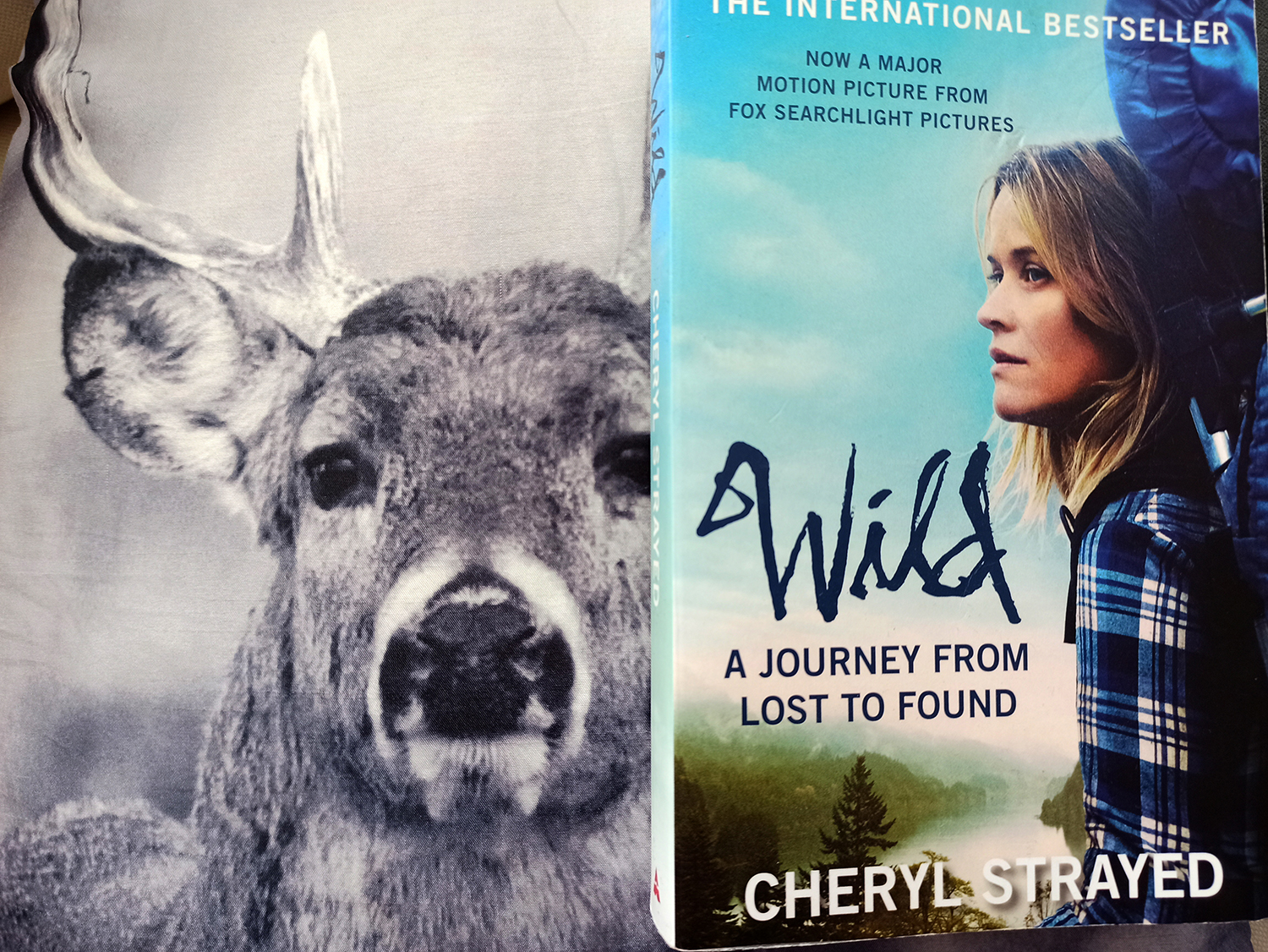
Wild by Cheryl Strayed (Photo: Paul Stafford for TravelMag.com)
Wild: From Lost to Found on the Pacific Crest Trail (2012) – Cheryl Strayed
Some may question this popular book’s inclusion on a list of the all-time greats, but it really has all the ingredients of a classic exploration of the human psyche. The physical duress that Strayed experienced on her hike of the Pacific Crest Trail (which runs from California’s border with Mexico to Washington’s border with Canada), and the gradual loss of her toenails as a result, is depicted with visceral precision. Her self-inflicted pain mirrors the mental health and dependency issues that plagued her before embarking on the feat, and in the process, we discover the restorative power of travel, of meeting new people and of forcing ourselves to step beyond our comfortably-positioned boundaries. Like any good travel literature, this book sheds light on why travel is so addictive, powerful and pertinent. Just like all the other books on this list, you’ll finish it wanting to plan your next trip.
Publisher: Atlantic Books, Buy at Amazon.com
Latest Articles
- A Short Guide to Berlin Wall Museums and Memorials April 26, 2024
- Campervan Rental in Denver: The Best Companies April 26, 2024
- 5 of the Best Airbnb Management Companies in Paris April 26, 2024
- 5 Charming Hostels in Berlin with Private Rooms April 25, 2024
- Top 5 Brands for Polarized Sunglasses, for Men and Women April 25, 2024

How To Write A Travel Guide
Editorial 0 comments 5151
How to write a travel guide: ’48 Hours in’
This article is a step-by-step guide showing you how to write a travel guide for the 48 Hours in series of travel guides.
I am subdiving this writing guide into three chapters that cover (i) the aspiration of a 48 Hour guide, (ii) its structure and (iii) its content
Chapter #1: 48 Hours guides are authentic
Each episode of the 48 Hours in series wants to introduce one city to the single male traveler from the point of view of a local. Just think about what kind of advice and tips you would give to a single male friend who is coming to your city for the very first time and you have all you need in order to write a good guide.
For the 48 hours in guides it is the local’s perspective that makes them so interesting. The episodes are no tourist brochures that tell you what sights are a “must”. If you do a Google search for “what to do in Paris” you will come across millions of articles telling you that you should visit Eiffel Tower and the Louvre — nice, but who really wants to read that?
In a 48 hour in guide local tells things how they are, mentioning the good and the bad.
If you were writing about a city where most hotels/apartments have bad service, but high prices then you should mention that (see my article on Kiev hotels ). And if you were writing about a city that, in your opinion, is nicer, cleaner and more lively than any other city in the country then you should mention that as well.
Here’s an example of authentic writing:
In the 48 hour guide to Wroclaw Poland I had to find a hotel in the middle of the night when almost all hotels were booked.
What I did was walk to the main railway station and enter the first hotel I saw in the hope they had a spare room. As the hotel was across the railway station where drunks were bumbling around I didnt expect much. To my surprise the hotel was not only cheap, but also newly refurbished. It could easily pass as a 4-star hotel in Munich or London and cost just 44€ for the night.
I added a nice picture of the hotel room and then put the mini-anecote into the guide. Here is what it looks like:

Screenshot taken from https://euromentravel.com/48-hours-in/48-hours-wroclaw-poland
People liked it. Why did they? Because it is authentic. The main thing is to give the reader little insights that stem from your own personal experience . This makes it so much easier for the reader to relate to what you are saying.
Chapter #2: The structure of the guide
All guides follow a simple 3-step structure. Each step is about a specific topic. These are:
- Flights/driving/buses
- The city & places to stay
- Activities.
Let’s start with the first topic titled “How to get there”:
“How to get there” – The most common way to reach your city?
“the city of [name] [country]” – brief outline of the city and hotels & apartments, “what to do” – b est daytime actitives & nightlife venues.
This is the most creative part. Think of your male friend coming to town and tell him about the ins and outs of your city: What is interesting to do during the day time?
This is not so much about sightseeing, but more about the lesser known spots in your city.For example, the guide to Varna Bulgaria tells you everything about the number one daytime activity in Varna, the beaches. But it also tells you about everything Varna’s Retro Museum with Soviet memorabilia that is not located in oldtown Varna, but somewhat hidden inside a shopping mall.
Chapter #3: The content of the guides
Now that we know the structure all we need to do is fill it with information. Here are some guidelines to what information the three chapters should contain:
How to get there
Here, you need to do some research by looking up prices on the websites of airlines, bus services etc.:
- Name 3-5 airlines that offer cheap flights to your city and link their names to their websites.
- Name 1-3 bus services that offer cheap rides to your city and link their names to their websites (if applicable).

Screenshot taken from: https://euromentravel.com/48-hours-in/48-hours-jakarta-indonesia/
Note that you do not need to put any screenshots of city maps/special offers/nice apartments/great hotels into your guide. I will do that for you. However, what you need to do is tell me where these special offers can be found so I can implement them.
The City of [XYZ]
- What is traffic in the city like? Is there good public transport? What is a good part of the city to stay in?
- How much is a taxi ride from A to B? There is a local smartphone app that everybody uses to order taxis? There is? Great, mention it and write about it!
- Write about some good offers that you see on apartment sites like Airbnb.com or booking.com and name 3-5 good hotels . Link their websites to their names.
- Look up the prices for a night in a hotel room/apartment and add the price after the hotel’s name Another very important factor is communication:
- What does a local SIM card cost?
- With a local SIM card: What’s the average price level for calls/texts/internet?
- Write a continuous text that describes your experience with about 3 daytime activities. This can be anything from spending a day at the beach to the picturesque old town or the area with the best local food.
- In your text, add 5-8 links to the names of popular daytime locations.
- Have a look at the other 48 hours in guides for inspiration.
- Write a continuous text that describes your experience with about 3 nightlife venues.
- Again, have a look at the other 48 hours in guides for inspiration.
And last but not least:
- Send in 10 high quality pictures of your city that you took yourself. If you can then send in more than 10. Actually, send in as many high quality pictures as you can! Choosing the cream of the crop from a large pool is always nicer.
In total, your 48 Hour guide will now have 1200-1600 words and is ready for editing.
Do not forget to give me your Twitter, Instagram and a short bio if you like and then allow me some time to do the editing. And before you know it your travel guide will go live on euromentravel.com.
This short synopsis on how to write a travel guide for the ’48 hours in’ series should cover most of your questions. If you have any other questions, do not hesitate do contact us via the form below.
See you around and happy traveling!
[Contact_Form_Builder id=”2″]
Related Posts

Meet Our Readers: A Quick Glance At Who Reads Our Magazine

How to Write a Perfect Travel Guide From Home
For many aspiring bloggers, writing about travel seems daunting because they don’t yet have extensive travel experiences. However, lots of travel experience is not necessary, as today one can easily make a travel guide from the comfort of their home. In this post, we’ll define what is a travel guide book or travel post, what sections you should include, and how to monetize your guide with affiliate links.
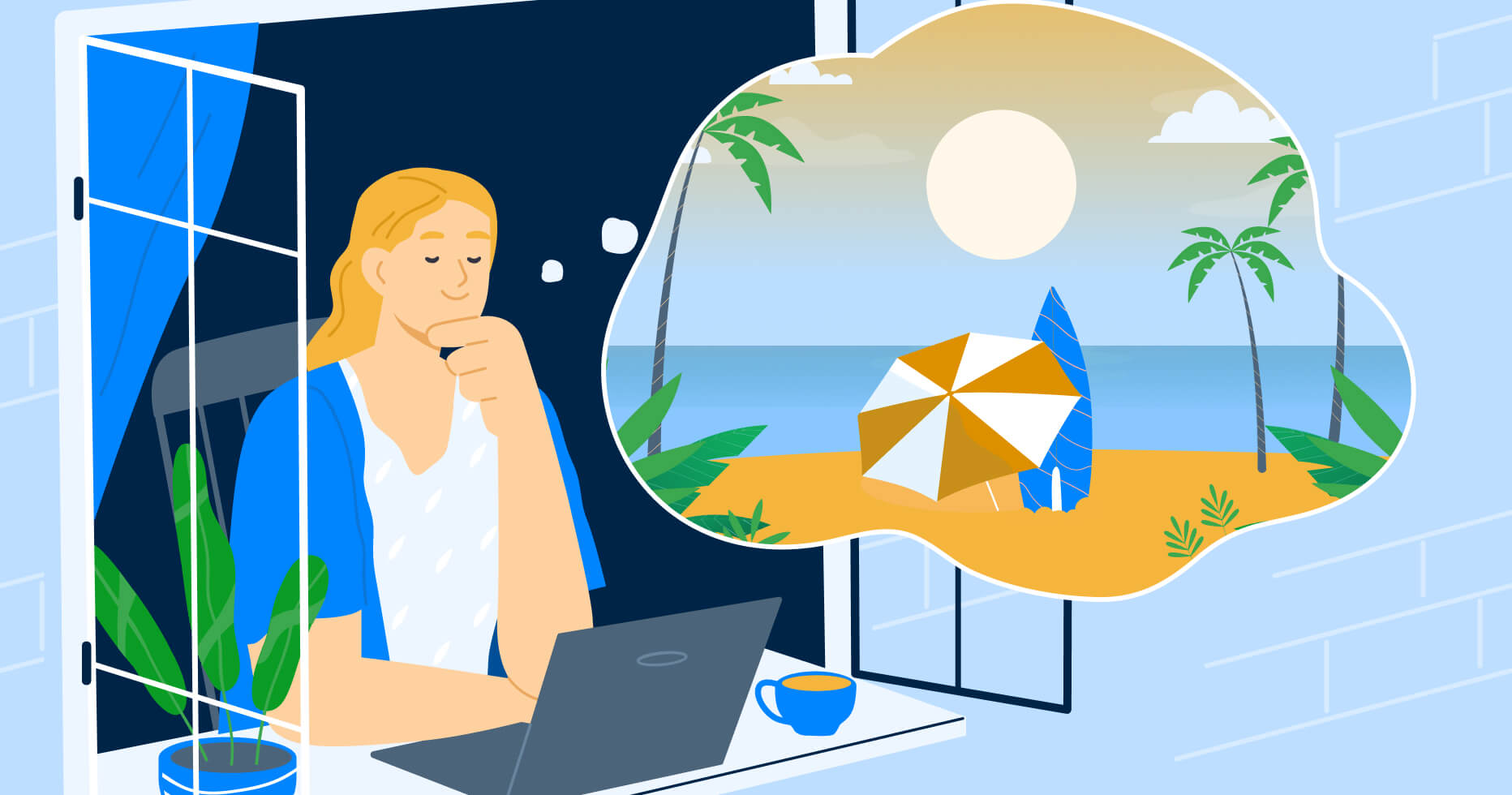
To monetize the travel guide using partner links, join the Travelpayouts partnership platform . Here you can find the travel affiliate programs of many popular travel brands, such as Booking.com, TripAdvisor, GetYourGuide, etc.
By promoting travel brands, you help your audience save money on travel and, as a result, travel more. In addition, you can turn your hobby into income. Signing up only takes a couple of minutes and you can start integrating partner link in relevant pages of your guide. You’ll earn every time a user follows your link and purchases a service.
Monetize your project with Travelpayouts, embark on a new journey, and create inspiring content for your audience.
Join the Travelpayouts Partnership Platform
Access exclusive tools and the best travel partner programs, including flights, hotels, car rental, insurance, tours and activities, all in one place.
Can You Write a Travel Guide From Home?
Naturally, writing travel guides based on your own experiences and illustrating them with your own photos is much easier and more authentic than writing about a destination you have never visited, although it is not always possible or even necessary to do so. With such a large selection of travel posts on the Internet today, you can easily create a detailed travel blog without ever leaving your home.
In this article, we’ve prepared some travel guide writing tips and a template to help you create useful blog materials. To make your posts even more appealing, explore travel guides created by locals who have a deep knowledge of your selected destination. Of course, be sure to double-check all the information that you share.
Choose a Destination
The first step towards writing a travel guide is selecting a destination. You may choose any location from the world’s most-visited cities, such as New York or Paris, to small idyllic villages. Just remember that your writing will largely depend on this initial choice. As there are already tons of guides about popular destinations, you’ll probably have to find a fresh perspective to make your materials stand out. When it comes to lesser-known spots, it will likely be easier to draw the attention of your audience.
While writing a guidebook, make sure to check with locals who know your destination inside out and can share invaluable advice. Try to connect with them through platforms such as CouchSurfing.org or Facebook.com . Ask them questions or ask them to check over your guide.
Use Travel Guide Structure
While the style of travel guides varies widely, most of them have a similar structure, which consists of tips on transportation, accommodation, tours, activities, popular sites, travel costs, and so on. Make sure to include these sections in your article so that it presents all the information that readers are looking for.
1. How to Get There
Normally, travel guides present several options for getting to each destination, including which cities are nearby, which modes of transportation are available, and the price of those transportation options.
Also, you can offer some tips and tricks on how to plan a trip more efficiently. For example, in some cases, it’s cheaper to take a plane, while, in other cases, ground transportation is a better option. You can also share some money-saving tricks.
2. Accommodations
Today, there are plenty of ways to arrange accommodations in any destination. You can start by suggesting a hotel or hostel via Booking.com , which many tourists are familiar with or have already used. You can then offer to rent places to stay with locals through platforms like Airbnb or HomeAway .
At this point, you can also offer tricks to save money. In some popular locations, such as Barcelona, it is usually cheaper to rent accommodations in the nearest town instead of within the city itself, while, in other destinations, like Paris, choosing the right town while avoiding marginalized areas can be far trickier. Be sure to carefully research the destination and offer valuable advice.
3. Tours and Attractions
After learning about their transportation and accommodation options and costs, tourists will want to explore their destination’s sights and entertainment opportunities. In this section, you can create a list of attractions to visit and excursions that will make sightseeing more exciting. Include options from walking tours to bus excursions to boat trips. For inspiration, look through the Experiences section on Airbnb.com .
4. Getting Around
Another important topic to cover is transportation options within the destination. For example, the first thing travelers would like to know is how to get from the airport/railway/bus station to the city center. There are usually dozens of transportation methods and the price differences between them can be massive, so your readers will appreciate such advice.
It is also important to describe different methods of getting from the transportation hubs to the main attractions while offering options to save a few bucks. In this section, it might be a great idea to ask locals to share tricks. For example, in Lisbon, taxis are often the same price as public transportation or lower.
5. Travel Costs
This is one of the most important parts of any travel guide, as travel costs greatly influence booking intent. Thus, you should briefly cover the prices of flight tickets, accommodations, tours, food and drink options, public transport insurance, and other relevant travel products. Also, for budget travelers, provide tips on how to save money or find the best value.
6. Staying Safe
In this section, you can cover concerns that tourists might have about security. Different cities and areas have different regulations and concerns, so make sure to do the proper research and possibly even ask locals for advice.
So, which questions and concerns should you cover? Consider topics like: where to park a car or exchange money, what areas are best to avoid, are there many pickpockets, and so on.
7. Best Time to Visit
Each destination offers different experiences to travelers at different times of the year. For example, Japan is famous for its cherry blossoms, so it’s worth mentioning the best time to catch them in bloom. European destinations are especially beautiful during the winter holidays thanks to their abundance of Christmas markets and celebrations.
You can recommend the best season to visit each place or offer specific advice for different times of the year.
8. Food and Drinks
In this section, you can describe features of the local cuisine and recommend popular dishes. Then, suggest specific restaurants, markets, or shops with high ratings and positive reviews. To get inspired, check Google Maps , TripAdvisor , or Instagram .
It’s worth mentioning food markets, as they usually have local treats and a wide variety of products at low prices, such as La Boqueria in Barcelona.
How to Write a Travel Guide: Best Practices
Below, you’ll find the best practices for travel writing that will help you make your guides appealing, valuable, and easy to monetize.
1. Add Pictures
Using schemes or images for travel guides is beneficial for many reasons. Posts with pictures receive over 90% more views than ones with plain text. Images help break posts into small parts and make them easier to digest. Readers retain more information and remain interested for a longer time if the text is paired with an image. In addition, 90% of the information that the brain receives is from visual cues.
Thus, make sure to illustrate your post with a few appealing photos to help the audience get inspired. You can also add maps or schemes so that readers can better navigate in the destination, as well as other image types to make the content more illustrative and versatile.
Where to find photos? You can buy photos at photo banks or download free stock images . Moreover, if you stumble upon a nice picture on social media, consider contacting its owner and ask for permission to use it on your site. Another option is to download a stock photo and edit it with one of the free design apps to make it look original. In any case, try choosing only high-quality, unique photos to make your blog look professional.
2. Research Keywords
Keywords are important in terms of website promotion. If you want to drive more traffic from search engines, be sure to run keyword research for your niche . To automate the process, try dedicated tools like Google Keyword Planner and Keywordtool.io (free tools) or SEMrush and Ahrefs (paid programs).
Then, it’s equally important to use keywords properly . That is, find the best placement within the text so that they attract attention and help navigate the text. Also, follow keyword density best practices so that your post doesn’t look spammy. And try to use keyword variations to enrich the text and drive more traffic.
Keywords differ widely: they can be short-tail or long-tail, short-term or long-term, high volume or low volume, geo-targeting, LSI, and more. Some keywords have higher competition, such as short-tail, high-volume keywords, thus aspiring bloggers might find it extremely difficult to compete with established sites. You can start with long-tail keywords and then work your way through the other types as you go.
More practical tips about SEO, including finding and using keywords, can be found in the free SEO course from Travelpayouts and Sharon Gourlay. Watch one lesson from the “Boost Travel Affiliate Revenue Using SEO” course to find out how many keywords you should use in your articles and how to search for them easily and quickly.
All Travelpayouts Academy courses are free for everyone. So feel free to view all the lessons that will help you increase your income.
3. Place Affiliate Tools
When writing a travel guide, don’t forget to insert an affiliate link, widget, banner, or other tools . This can help you monetize your guide and increase your ranking in the SERPs.
The most important thing is to add only relevant tools. For example, when describing sights, add a link to a tours and activities platform, such as Expedia or Musement, so that readers can book an excursion immediately. In the accommodations section, you can link to Booking.com, HomeAway, etc. Such an approach helps your readers easily find a solution to their problem or an answer to their question while generating additional income for you.
We recently published a more detailed guide on using affiliate links on our blog.
4. Choose the Right Format
There are plenty of formats available for travel guides. You can choose to make a post on your blog, a PDF guide, an eBook, and the list goes on.
If you plan on writing multiple guides for your blog, it makes sense to create a separate section and publish all the guides there. You can also create subsections for each country to facilitate better navigation.
To get more leads, you can even create city guides in PDF format and offer to send them for free in exchange for a users’ email address. This could help you grow the number of your subscribers.
If you are writing a travel guide covering multiple destinations, consider adding a table of contents so that readers can easily navigate.
Travel Guide Examples
It might be a good idea to find inspiration before you start writing. Check out a few travel blogs and if you like the structure, perspective, etc., why not adopt those elements for your blog and audience?
Here are a few good travel blogs to check out:
- AGAINSTtheCOMPASS
- Lost With Purpose
- THE Blonde ABROAD
- ROADS&KINGDOMS
- NOMADIC MAT
Also, be sure to check our list of the top travel blogs to follow in 2020 for more inspiration.
How to Create Online Travel Guides
You don’t need extensive travel experience to create your own travel guidebook or series of travel posts. Start by choosing a destination that will be interesting to your audience, think about the structure of your guide and the various aspects of travel, and perhaps ask locals for additional tips. Also, don’t forget to choose the right format, fill your text with keywords to reach a larger audience, and insert affiliate tools to start earning money immediately.
20 Example Travel Websites That Will Get You Moving
Pack your bags. We’re going on vacation!
That’s exactly what an effective travel website should make you feel. It should activate the travel bug with vibrant imagery and vivid copy.
And while photos can do a lot of the work in inspiring visitors, a travel site can’t accomplish its purpose without great web design.
Web design plays a major role in visitors’ first impressions of a business. In fact, in one study, when participants were asked why they distrusted a website, 94% of the comments were about design.
For a travel site, this means that design can be the determining factor in whether a visitor trusts recommendations and information.
And considering the significant investments that go into planning a trip, trust is essential.
It can make or break a traveler’s decision to take a certain tour, stay at a certain hotel, or even visit a city or country altogether.
Plus, beyond serving as a trustworthy source of inspiration, a travel site also needs to give would-be travelers all the information they need to arrange their travel plans.
Once a visitor is convinced that they need to see the sights in the photos for themselves, it should be easy for them to plan their trip.
This means that the site needs to have straightforward travel information, helpful logistical details, and tips that will help visitors simplify the travel process.
Not all travel sites tick all of these boxes, but the ones that do stand out from all the rest.
So whether you’re considering launching a new travel site, or you’re ready to improve an existing one, you want to make sure you leave no stone unturned.
That’s why in this post, I’ll cover the essential elements your site needs to include, then go over 20 examples of travel sites you can use to inspire your own design .
What should a travel website include?
There are tons of different types of sites that fall under the travel site umbrella.
The design elements you need depend on the type of site you’re running.
An official tourism site for a city will have different goals from those of a travel blogger or tour company.
So as you read through this post, keep in mind that not all of the recommendations will apply to your site.
But in general, the ideal travel website should include a mix of the following:
- High-quality photography
- A brief summary of the area, with highlights of important places
- Hotel recommendations with web links to hotel and booking sites
- Information about recreation and outdoor activities
- Guides to arts and culture, including museums, theaters, and other attractions
- Packing tips
- Maps and guides
- Public transport information
- Airport information
- Relevant tips on language and local dialect
Of course, your site likely won’t need to include all of the elements on this list. Tailor it to your needs.
And there’s tons of example travel sites that we can use for inspiration. Let’s get started.
1. Telluride, Colorado
The first site on our list is the official tourism guide to the city of Telluride, Colorado.

Right from the start, a prominent image gallery does a lot of the selling on the website for Telluride.
By making the images so large, the site makes sure the first thing you see is a beautiful landscape.
This is an example of a site that relies less on copy. Instead of a detail-heavy approach, the design focuses more on the picturesque views and various activities in action.
Once a visitor is drawn in by the photos, they can opt to click on the main call to action, “Plan Your Spring Trip” for more information.
From there, visitors can read about the various activities they can do in the city, then purchase any necessary tickets, passes, or equipment rentals.
This approach works, because it combines attention-grabbing imagery with a clear call to action.
Many Internet users have short attention spans, so it’s important to give them the opportunity to take action as soon as possible. Don’t make them think, wait, or read too much copy before giving them the opportunity to convert.
2. Visit Brasil
Visit Brasil is the country’s official tourism site.

On the surface, you might think that arranging this site would be a simple process.
After all, how difficult could it be to persuade visitors to check out beautiful beaches and hikes through the Amazon?
But considering that Brazil is a huge country, making up almost half of the continent of South America, the site has a lot of information to cover.
It does this by dividing the various regions into different “Experiences.”

By breaking the country into smaller, more manageable areas, the site aims to create a virtual travel experience that allows the user to explore the sights of Brazil right from their computer.
This can help visitors decide where they want to go within this massive country. If they’re looking for a relaxed beach trip, for example, they’ll have very different options from travelers looking for hiking trips or adventure tours.
Then, once a visitor has selected a destination, the breakdowns on the site will give them an accurate idea of what they can hope to see within the span of their trip.
3. On the Grid
Unlike the previous two examples, which centered on one city and one country, On the Grid is a travel blog spanning many countries and continents.

As a result, the site requires a very different type of organization.
Instead of letting visitors jump right into information about hotels and activities, the main navigation bar is organized by region.
Then, the homepage features an alphabetical list of city guides, from Aberdeen to Zurich.
[tweet_box design=”default”]This level of organization makes it easy for users to access information, whether they’re looking for a guide to a specific city or simply browsing for trip inspiration.[/tweet_box]
4. Cookiesound
Cookiesound is another travel blog that focuses on sharing personal stories from a mother-daughter photographer team.

The pair has made a name for themselves taking photos around the world, and they’ve created a nice compilation of their journeys.
And while the photos are likely what initially draw readers in, what sets this site apart from others is the personal perspective. You can tell that this site was made out of a passion for traveling.
So if you’re running a travel blog, it’s important to remember that photos can’t do all the work for you in building an audience and establishing a loyal reader base.
Make sure to spend just as much time creating interesting, well-written content for your site, and you’ll be much more effective in reaching your site’s goals.
5. Toucan Cafe & Tours
Toucan Cafe is a Medellin coffee shop that also runs tours and language exchanges.

Their site is exceptionally comprehensive. It features different types of tours and details about the cafe, as well as general tourist information for visitors to the city.
Best of all, everything is easily accessible from the big menu bar. Given that the site is designed to provide information about very distinct categories, it’s essential that visitors can immediately find what they’re looking for.
After all, if a user were to arrive looking for details on a walking tour, but think they’d mistakenly come to the website of a random coffee shop, Toucan would quickly lose a potential customer.
But this straightforward navigation setup eliminates that issue and makes it easy for users to access the information they need.
Plus, it’s worth noting that all of the content on the site is available in Spanish and English.
While some of the company’s customers might be traveling within Colombia, they’ve clearly determined that many of their tour attendees come from English-speaking countries.
By making all of their information available in English, Toucan expands their audience and makes sure they don’t miss out on potential customers because of a language barrier.
6. Wheeling, West Virginia
As you may have guessed, this is the official tourism site for the city of Wheeling, West Virginia.

The site features a series of high-quality images on its homepage that highlight the various activities available to visitors within the city.
From there, the page is divided into sections that cover hotels, restaurants, recreation, and other activities.
If this doesn’t sound like a novel approach, that’s because it isn’t.
But the site makes it easy for visitors to see why they should visit the city, as well as access all of the information they need to plan their trip.
In this case, simplicity works.
[tweet_box design=”default”]As you plan your site, remember not to get caught up in flashy design elements.[/tweet_box]
While a unique site can help you stand out, your priority should be to create a user-friendly experience that enables visitors to plan their next trip.
7. Utah, Life Elevated
Life Elevated is the tourism site for the state of Utah.

Much like many of the sites on this list, the homepage features large, compelling images of scenic destinations.
Then, users can click the featured call to action to learn more about the location in the photo.
This combination is extremely effective. The image elicits an emotional response, and the action-oriented text encourages visitors to put that excitement towards their own adventure.
But if you choose to take a similar approach, then pay attention to the size and quality of your images.
First, make sure that if you feature an image on your homepage, it’s high in quality. Grainy, low-quality photos won’t do you any favors in conveying the beauty of a location.
Then, always optimize your file sizes. Many site owners make the mistake of including massive image files on their homepages.
While these might look great, they can drastically slow down page load times.
And considering the impact that page speed has on page views, customer satisfaction, and conversion rates, it’s not something you can afford to damage.
So as you incorporate photos into your site, and especially onto your homepage, pay attention to file size. Your files should be large enough to produce high-quality detail, but not so big that they slow down your site.
As a general rule of thumb, your images should be 100KB or less .
After all, beautiful photos won’t do you any favors if no one sticks around long enough for them to load.
Crop your images to the necessary size and compress them before uploading, and they’ll be much more helpful in moving you towards your site’s goals.
8. Travel Oregon
One of the most creative sites on this list is Travel Oregon .

Like many of the other examples on this page, it’s designed to attract visitors to the state.
But unlike any of the others, it presents the various regions and attractions with a video game-inspired design.
The homepage begins by explaining that “Oregon is magic,” then encourages visitors to learn more about the state with choose-your-own-adventure style calls to action like, “Wander into the forest,” “Visit the Rose City,” and “See the magic Coast.”

From there, each of these calls to action directs users to more information (and real photos) of their selected region.
This kind of spin on website design isn’t for everyone. But for the fun, laid-back feeling Oregon is aiming to convey on their site, it’s perfect.
It’s also a fantastic reminder that travel sites can be as unique as the destinations they promote.
While there are a few basic elements you’ll need to include, feel free to get creative with the way you arrange them and present information.
9. Visit Australia
Although Australia’s official website includes plenty of eye-catching photos for visitors to check out, it also takes things a step further by heavily incorporating video into the mix.

Like many travel sites, it’s designed to encourage visitors to learn more about specific regions of the country, so they can determine which is best-suited to what they’re looking for in a trip.
And in addition to high-quality photos and compelling descriptions of each, the site also offers 360º videos. These give a more in-depth look than even the most high-quality photos could, so visitors can choose a vacation spot and explore it from the comfort of their home.
Interactive elements are becoming increasingly popular in web design for many industries. But in many cases, it feels like they only exist for the sake of checking “interactive” off on an arbitrary list of design elements.
So if you choose to include interactives, it’s important that they serve a clear purpose and don’t come off as gimmicky.
In this case, Visit Australia’s 360º videos are a fun, engaging addition to the site. They’re a special way to highlight different locations throughout the country, and add value to the overall site experience.
10. Live Africa
As a tourism site for an entire continent, Live Africa has an extremely large job.

But their site’s design does an excellent job of showing the exact feeling and experience they want to convey.
Live Africa encapsulates the essence of the African safari that the site heavily promotes, down to the textures and colors used throughout each page.
Plus, the striking videos of majestic animals roaming in the wild show the reader what they can witness when they plan their trip to Africa using the resources on the site.

11. African Budget Safaris
African Budget Safaris has a similar goal to the previous example on this list but takes a slightly different approach with their design.

Right from the start, the site keeps things direct and to the point.
There are no frills here — just all the information a visitor needs to plan their African safari adventure.
But the most important detail here is that visitors can instantly tell that this site will help them find inexpensive trips.
Of course, the name itself implies that the company’s goal is to provide affordable safari trips.
But by highlighting details on budget-friendly, quality tours, and including information about discounts right in their header, the site makes it clear that providing value is a priority.
This is an important piece of information to convey, and the site does it extremely well.
After all, effectively communicating content is one of the most important functions of any website. You can have the most beautiful photos and visually appealing design in the world, but if readers have trouble finding key information, they won’t become customers.
Make your site’s value crystal clear. Your homepage should be optimized for not only conversions but also user-friendliness — and that means making sure that visitors can tell exactly what to expect from you.
12. Mount Kilimanjaro Guide
Unlike many of examples listed in this post, Mount Kilimanjaro Guide takes an information-based approach on their homepage.

This is a great way for the site to make a memorable impression on visitors.
There are a ton of sites out there with information on Mount Kilimanjaro. It’s an extremely popular tourist destination, so there are dozens of guide companies competing for potential hikers’ attention online.
But as you’ve likely gathered from the examples in this list so far, most travel sites feature one large, compelling image on their homepage.
That’s great for sites focused on promoting a unique location!
In this case, however, the site isn’t trying to convince visitors that they should visit Mount Kilimanjaro. Their target audience is made up of people who are already interested in climbing the mountain and are looking for more detailed information on how to accomplish this goal.
As a result, they created a copy-heavy homepage that jumps right into the value of their guide.
This might not seem like an especially compelling approach but think of it from the perspective of a traveler who’s looking for information about climbing the mountain.
If you visit a dozen sites with homepages featuring similar images of Mount Kilimanjaro, and one site that gives you detailed information from the second you arrive, which do you think you’ll remember?
Probably the one that promises an approach with a summit success chance of 90%.
If your travel site operates within a competitive niche, look at what your competitors are doing to figure out how you can set your company apart.
And even if you don’t operate within a competitive niche, this site also serves as a great example of how to write effective copy.
Many site owners make the mistake of letting their images do all of the “talking.” But while stunning photos are great for grabbing visitors’ attention, they’re ultimately not what will drive most of them to take action.
When done well, your copy can be your pitch, presentation, and close all on its own. So as you create your site, don’t let this essential element become a last-minute consideration.
13. The Hawaiian Islands
The Hawaiian Islands’ website offers a no-fuss user experience.

At first, The Hawaiian Islands seems to be an average travel site.
And in many ways, it is. It features a scenic landscape image with tourists enjoying a hike, and a standard navigation bar with all of the options you’d expect.
But take a second look, and you’ll see how clean and simple the design is.
The navigation hierarchy is broken down into six basic tabs so that users can find exactly what they’re looking for within one or two clicks.
And for visitors who aren’t sure what, exactly, they’re looking for, the “Scroll to continue” tag at the bottom of the page encourages them to keep reading and learn more.
Altogether, these elements make for a direct, effective site. And for users who want a simple way to plan a trip, this is perfect.
After all, most of us take vacations to relax — so preparing for one shouldn’t be a stressful process.
14. Lake Crackenback
The website for the Lake Crackenback Resort & Spa does a nice job of balancing detail and design.

When it comes to creating any kind of website, it’s often challenging to strike a balance between including enough information, but not so much that you overwhelm your visitors.
This is especially true for travel sites.
You need to explain to visitors why they should visit the destination you’re promoting, and show them all of the great experiences they could have by planning a trip. You’ll also want to make it clear what role your site plays in the planning process.
But if your site appears too complicated, visitors might leave in favor of a simpler, easier option.
Lake Crackenback’s site is a great example of how to walk this fine line. There are several menu items, but nothing feels cramped, and it’s all easy to navigate.
Visitors have the option to explore information about hotels, dining, events, and activities — essentially, all the details they might need to plan their trip.
But all of this information is neatly organized into tabs, instead of cluttering up the homepage.
So as you design your site, make sure to do so in a way that won’t overwhelm your visitors.
You likely have lots of helpful content you want to share with prospective travelers.
And that’s great!
But don’t attempt to fit it all onto one page.
Make sure you give everything some breathing room and focus on letting visitors access the pages that are most relevant to their needs.
15. Visit Idaho
The next state-focused site on our list, Visit Idaho , is a breeze to use.

At first glance, this may look like a fairly standard tourism site. But Idaho’s website is unlike any of the others on this list.
So, what sets it apart?
Simple: It uses graphics in its menu.
This may seem like a small decision, but it makes navigation that much easier. Visitors can easily spot the tab that holds the information they need.
And beyond that, this setup also forces the site to group menu options using just four categories.
This makes the navigation process extremely straightforward. The more options you give visitors, the more they’ll have to consider before deciding which to click.
And while this may seem like a small concern, it can be the determining factor in whether a visitor decides to stay and engage with your content, or leave in favor of a simpler site.
So as you design your site, pay special attention to your navigation setup, and remember that navigating a site should be fun and frustration-free.
You can utilize anything from graphics to interactive elements to achieve this goal — as long as your final product is one that makes it easy for visitors to find and engage with the content that will get them closer to planning their trip.
16. Washington The State
It’s clear from Washington The State ’s homepage that its focus is on highlighting the state’s natural beauty, and this idea is apparent throughout the entire site.

Although the state also includes several large cities, the site goes heavy on the visuals showcasing its natural beauty.
As a result, we can gather that their target audience is prospective travelers who want to spend their trip enjoying the outdoors.
And while this might seem to limit their ability to attract vacationers, choosing a specific audience is a wise choice.
That’s because marketing a destination isn’t all that different from marketing a product or service.
And as any experienced marketer will tell you, having a clear picture of your target audience is absolutely essential for creating effective campaigns and content.
When you try to cater to too many people, it’s difficult to really engage anyone. Instead, you’ll be more effective when you narrow in on a defined audience.
This way, you can keep that audience in mind as you develop each part of your marketing strategy. You can select images, create design elements, and write copy with the goal of connecting with a specific set of users.
By keeping their priorities and preferences in mind, you’ll be able to create an entire marketing strategy that matches what they’re looking for in a vacation.
On this site, for example, even the subtle, natural-toned color scheme is designed to match the scenic imagery.
And while this might not appeal to travelers looking to explore downtown Seattle, that’s okay — because the site’s primary goal is to engage visitors looking for an outdoor-focused adventure.
So if you’re struggling to figure out how to market your site or destination, it might be time to narrow your audience.
Determine exactly who you want to reach, and it will be much easier to figure out what kinds of content you should be producing to attract their attention.
17. Egyptian Tourism Authority
On the exact opposite end of the spectrum from the previous example, the Egyptian Tourism Authority ’s website does an excellent job of highlighting different types of trips and experiences available to travelers.

In this case, they opted not to niche down — and it works.
That’s in large part because the site is designed to highlight the country’s variety and cultural richness.
The first thing visitors see is a stunning landscape. From there, the photos on the page display Egypt’s diversity, showcasing everything from beaches to deserts to the iconic Giza Pyramids.
The idea they’re attempting to convey is that the country holds something for everyone.
While narrowing in on a specific attraction would’ve made it easier to write copy and tailor their content to a specific type of traveler, this approach lets the site show off several different attractions.
And while it might seem contradictory to place this example of a site that covers an entire country immediately following a site that focuses on a subset of attractions within a specific state, the takeaway is that there’s no “best” approach that will work for every site.
If you’re working to increase tourism in an entire region or country, you’ll need to design for a broad audience. But if you’re trying to reach travelers looking for a specific type of trip or tour experience, you might see better results by niching down.
Determine what you’re hoping to accomplish with your site, then work from there.
18. Costa Navarino
Costa Navarino is located on the Mediterranean coast of Greece, and their site focuses on highlighting the beauty and uniqueness of the destination.

Their site seems to have one main objective: to make visitors forget about everything but the beautiful island scenery in front of them.
Travel sites are particularly effective when they enable potential customers to envision themselves in luxurious destinations from the minute they arrive on the homepage.
That can be the primary motivation for a traveler to book tickets from their cold home in the winter — and Costa Navarino’s site reflects this.
To accomplish this goal, they feature stunning images of coastlines, beaches, pools, and luxury villas. The weather report in the top right corner is a nice touch, too.
Altogether, the site does a nice job of minimizing distractions. Site visitors are encouraged to focus solely on the destination in front of them — at least until they’re ready to start taking steps to plan their trip.
19. Experience Columbus
Experience Columbus is the state of Ohio’s site for attracting visitors to their capital city.

The first thing you’ll notice on this site, after the gorgeous shot of the city’s skyline, is that the site is fast and appealing.
Of course, the site looks nice. But arguably even more important than that it loads extremely quickly. And it doesn’t lag on mobile devices, either.
Since many people now use smartphones and tablets to access information online, this last detail is critical.
And beyond that, the site is designed to be extremely user-friendly on any device.
Regardless of a visitor’s browser or screen size, it’s easy for them to access information about sightseeing, restaurants, events, hotels, neighborhoods, and virtually anything else they might want to know about the city.
So as you design your travel site, make sure that user experience is a key consideration right from the start.
Utilize responsive design, so that travelers can easily navigate your content on whatever device they’re using. Then, ensure that your testing process includes a variety of operating systems.
When not coded correctly, elements like buttons and your navigation bar can appear distorted on devices other than desktop and laptop computers. This can easily make or break a user’s experience with your site.
You don’t want this to be the determining factor in whether a user decides to visit your city or sign up for your tour service — so invest the time it takes to create a user-friendly site.
20. Discover Chile
The last site on our list is Chile’s official tourism site, Discover Chile .

The first thing you’ll notice on their homepage is likely the stunning image of a whitewater kayaker flying over a waterfall.
But after that , you’ll see the goal logo at the top of the page, announcing that Chile is the “World’s Leading Adventure Tourism Destination.”
Chile has received numerous awards for tourism, and it displays the most prestigious of these awards prominently on its homepage. The slideshow features three hero images, each with a different award at the top.
This is essentially a form of social proof.
If you’re not familiar with the concept of social proof , it’s the practice of using third-party reviews and opinions to create positive associations with your brand or business.
After all, consumers know that companies are biased towards whatever it is that they’re promoting.
As a result, they’re typically more inclined to trust the opinions of other consumers and organizations that don’t have a clear incentive to speak highly of a particular product or service.
That’s why many of us seek out customer reviews and ratings before purchasing anything online.
Of course, reviews work a bit differently within the travel industry. Travelers might rate specific attractions they visit or tours they attend, but most won’t take the time to write and publish a review of a destination as a whole.
But in Chile’s case, the titles they received from World Travel Awards are just as compelling.
And if a visitor in search of an adventurous trip lands on this homepage, they’ll immediately know that the country offers what they’re looking for — and they don’t have to take a biased tourism site’s word for it.
If your city, attraction, or site has earned any awards or distinctions, be sure to feature them prominently.
Even if it’s just a small award from a local organization, having some sort of third-party verification can go a long way in building trust with your visitors.
There’s no guaranteed template to follow when designing a travel website.
The 20 sites in this post alone cover a variety of design styles and approaches — they each work for their own unique audiences and goals.
Regardless of your industry or niche, there are a few important points to keep in mind when working on your site:
- Make sure your navigation is simple. Graphics, smart category grouping, and smaller menus can all help with this.
- Images play a huge role with travel sites! Don’t be afraid to use big banner images. Just make sure that your file sizes don’t slow down your page load times .
- Try to set your site apart from the rest. Figure out what your competitors are doing, then aim to come up with a unique approach.
Make your website better. Instantly.
Keep reading about design.

SelfCAD Review
3D design could take you months or even years to learn. And we aren’t just talking about the fundamentals of design—we’re talking about the software…

Checkout Page Design: What *Not* to Do
As car engineers improve on a design from the past in order to determine what not to put into their next model. So too should…

The Best Website Color Palettes to Increase Engagement in 2024
Did you know specific colors cause people to feel and respond in different ways? Do you find yourself overwhelmed by the number of potential website…

30 Unforgettable Landing Page Examples To Steal & Profit From
Are you looking for landing page examples? The landing page is probably one of the most important pages on your website. A slight change in…

The 15 Second Rule: 3 Reasons Why Users Leave a Website
How long do users stay on your website? Less than 15 seconds. That’s the average time spent on a website. And that’s how long you…

The Best Website Layouts for User Experience and Conversions
Marketers seeking to dominate their respective niches should be focused on the best website layouts. Doing so improves your users’ experience and generates conversions. Luckily,…

24 Attention-Grabbing Website Homepage Introductions
When visiting your site, a user decides whether to hit the “back button” within milliseconds. That’s right, milliseconds. Your homepage is your only chance to…

Website Analysis: Our 4-Step Process Plus the Tools and Examples You Need to Get Started
The problem with a lot of the content that covers website analysis is that the term “website analysis” can refer to a lot of different things—and…

Pack your bags. We’re going on vacation! That’s exactly what an effective travel website should make you feel. It should activate the travel bug with…

6 Colors That Are Proven to Boost Sales
Color can affect us in unexpected ways. It can: Change the way hot chocolate tastes Change our heart rate Make us stronger and faster If…

The 5-Step Guide to Finding the Right Font
The font just needs to be “pretty” right? There’s a lot more to it than that. There’s a gross misconception that typography is simply “font…

How to Improve My Website: Grow Engagement and Conversions by Fixing 3 Common Website Problems
Here, we show you how to use Google Analytics together with Crazy Egg’s heatmap reports to easily identify and fix 3 common website problems.

Comprehensive Guide to Website Usability Testing (With Tools and Software to Help)
We share the 3-step process for the website usability testing we recommend to our customers, plus the tools to pull actionable insights out of the process.

6 Ways to Make Your Prospects HATE Your Website
You have a formidable task ahead of you. How can you make it so that all of your prospective customers really, really hate your website…

A 4-Point CRO Checklist to Give to Your Web Designers
A beautiful website can impress anyone upon first touch. It can scream “premium” and aid greatly in company branding. But beauty and the “wow factor”…
Over 300,000 websites use Crazy Egg to improve what's working, fix what isn't and test new ideas.

IMAGES
VIDEO
COMMENTS
11 Great Travel Writing Examples. Writing with feeling, tone, and point of view creates a compelling story. Below are examples of travel writing that include; first paragraphs, middle paragraphs, and final paragraphs for both travel articles as well as travel books. I hope the below examples of travel writing inspire you to write more, study ...
Travel Text Example. San Francisco - the colorful city on the Pacific. San Francisco is in the state of California on the West Coast of the United States. Its "manageable" size makes it easy to orientate oneself. Its steep streets, Victorian houses and the historic cable cars give the "City by the Bay" an European flair.
Tips for travel writing. Open with a compelling and snappy anecdote or description to hook the reader's interest from the beginning. Give the reader a strong sense of where you are through vivid language. Ground the reader in time, in climate, and in the season. Introduce yourself to help the reader identify with you and explain the reason ...
To kick your travel writing skills up a notch, here are five powerful ways you can start your narratives. I am also including examples from my own work to help guide your learning experience. Begin with a stressful situation. Example 1 - "The sound of tiny spikes on our wheels crunching through snow was the only sound we heard for miles."
2. Time travel. Taking readers back through historical moments is a great way to achieve more depth in your stories. In the story The Museum of Atari, Mario and Electronic Childhood Dreams, Channel News Asia uses Shorthand to create a stunning visual story about a little-known museum of retro video games in Singapore.
Round-ups. You'll recognize a round-up article when you see one, as it'll go, "40 best beaches in West Europe," or, perhaps, "20 of the greatest walks in the world!". It's a classic tool in any magazine or newspaper writer's toolbox, taking a bunch of destinations and grouping them all under one common thread.
Use your own words - dont copy from examples or websites. Inject your feelings and make your stories conversational. Unleash the beauty of your travel experiences through vivid descriptions and captivating storytelling. Make Text Mercato your partner in this expedition and become a master of the travelogues. FAQs. 1.
Use these practice texts to familiarise yourself with the different features of Travel Writing and add them to your Learner Portfolio; you will want to revise text types thoroughly before your Paper 1 exam. You can find more information - including text type features and sample Paper 1 analysis - by visiting 20/20.
Nomadic Matt (blog) Run by budget-travel expert Matt Kepnes, nomadicmatt.com is an energetic and lively blog - his passion is obvious from the get-go and it prevails throughout his site. He's written a best-selling book called How to Travel the World on $50 a Day, and he constantly updates his website with new content.
Select a meaningful sub-heading for each paragraph. Language, style and tone. Language plays a vital role in all good travel articles and travel blogs. Of course, as with all good web texts, the language should also be informative, understandable and accurate. But if the text is to transport the reader to the destination, the writing must also ...
Casey Blanton "There exists at the center of travel books like [Graham] Greene's Journey Without Maps or [V.S.] Naipaul's An Area of Darkness a mediating consciousness that monitors the journey, judges, thinks, confesses, changes, and even grows. This narrator, so central to what we have come to expect in modern travel writing, is a relatively new ingredient in travel literature, but it is one ...
For travel blogs, that often means the writing should: Be written in first-person. Tell the story in the past tense. Be conversational in tone (dialogue can be useful here) Contain sensory details. Give the reader value in some way, whether that's providing useful tips for navigating or insight into a culture. Make it relatable to the audience.
Condé Nast is well-known for their glossy, editorial-style articles that share the world's most unique and wonderful experiences. They're descriptive, they're detailed, and they are excellent examples of storytelling. The writer delves into Egypt's past through local stories in this travel article example.
I write in all sorts of styles and formats, both online and in print. I've listed a few travel writing examples on this page to give you an idea! I really enjoy travel writing and have undertaken a number of press trips and famils, blogger trips and travel influencer campaigns. Some of the places where my work has appeared has included a ...
But enough of these matters. We will discuss the three general varieties of travel writing. 1. The first type of travel writing is the direct, straight-forward "travel guide" intended as a practical aid to travelers. The journey is described in a linear fashion, with specific dates, places, environments, and experiences faithfully related.
This is a great travel blog example, encompassing everything from an adventure travel blog to laid-back travel ideas. Hannah & Nick's blog: saltinourhair.com. The Blonde Abroad. The Blonde Abroad — Travel Blog. Kiki has been traveling solo for years and collecting her experiences in her travel blog.
A perfect example of how gonzo journalism began to seep into travel literature comes from what is arguably the most important modern travelogue: The Great Railway Bazaar. In it, Theroux travels from London all the way to Southeast Asia and Japan, via India, then back to Europe via Russia's Trans-Siberian railway.
DAY 1. Michelangelo's David At Gallery Academia. I intentionally planned my days without an itinerary, so I had the freedom to wander, to bask, or to explore. On my first full day of my trip, I was in Florence, and the only thing on my to-do list was to make it to the Academia Gallery by days end.
Write a continuous text that describes your experience with about 3 nightlife venues. In your text, add 5-8 links to the names of popular daytime locations. Again, have a look at the other 48 hours in guides for inspiration. And last but not least: Send in 10 high quality pictures of your city that you took yourself.
4. Choose the Right Format. There are plenty of formats available for travel guides. You can choose to make a post on your blog, a PDF guide, an eBook, and the list goes on. If you plan on writing multiple guides for your blog, it makes sense to create a separate section and publish all the guides there.
Travel Writing Guide: 4 Tips for Travel Writing. Written by MasterClass. Last updated: Jun 16, 2021 • 3 min read. Travel writing is all about embarking on adventures in search of a new point of view, compelling stories, and exciting experiences.
This is how to structure a travel article: Start with a headline, for example: Victoria Falls: a majestic sight. Follow with a standfirst - a sentence that summarises what the article will be ...
16. Washington The State. It's clear from Washington The State 's homepage that its focus is on highlighting the state's natural beauty, and this idea is apparent throughout the entire site. Although the state also includes several large cities, the site goes heavy on the visuals showcasing its natural beauty.